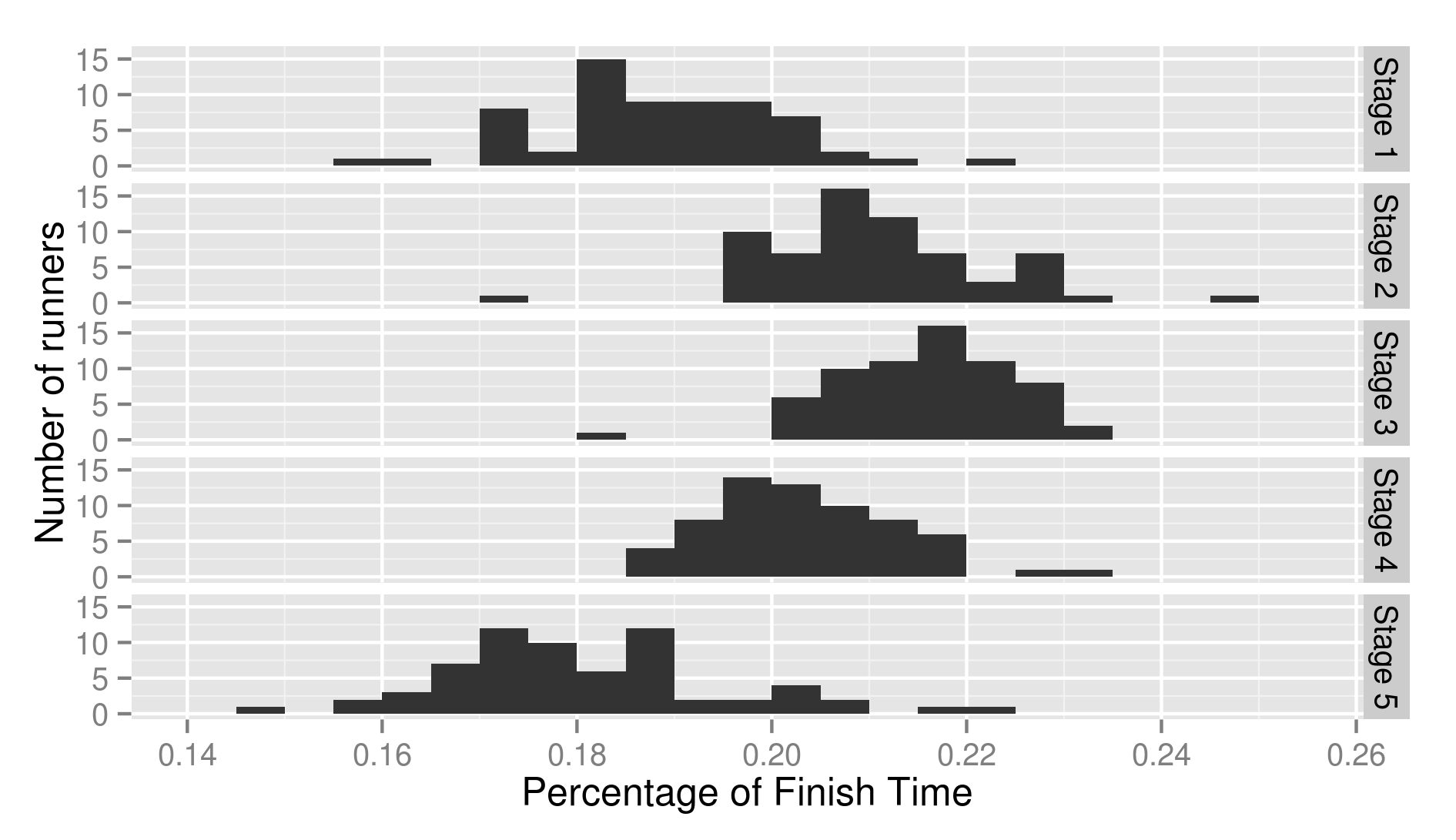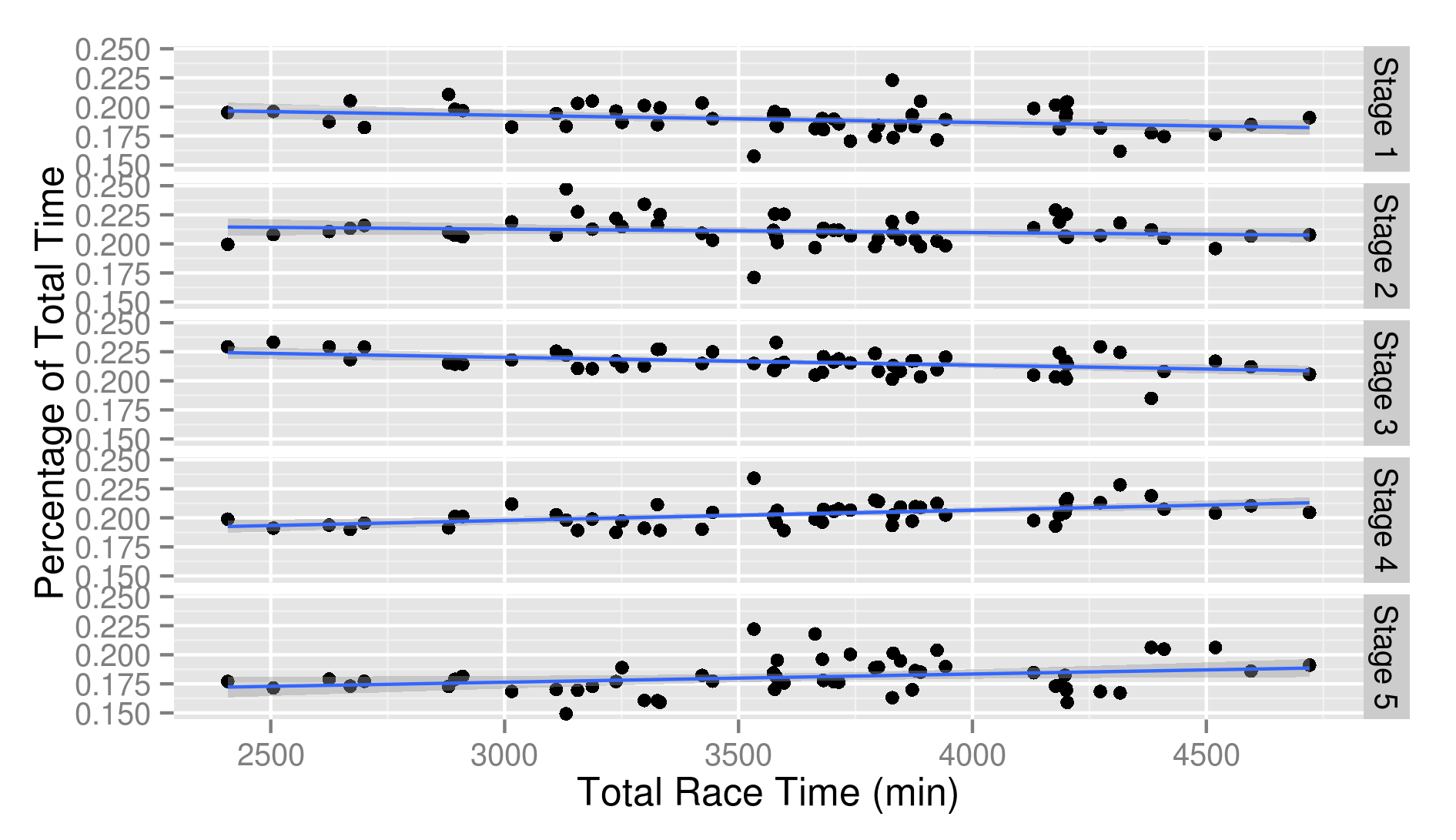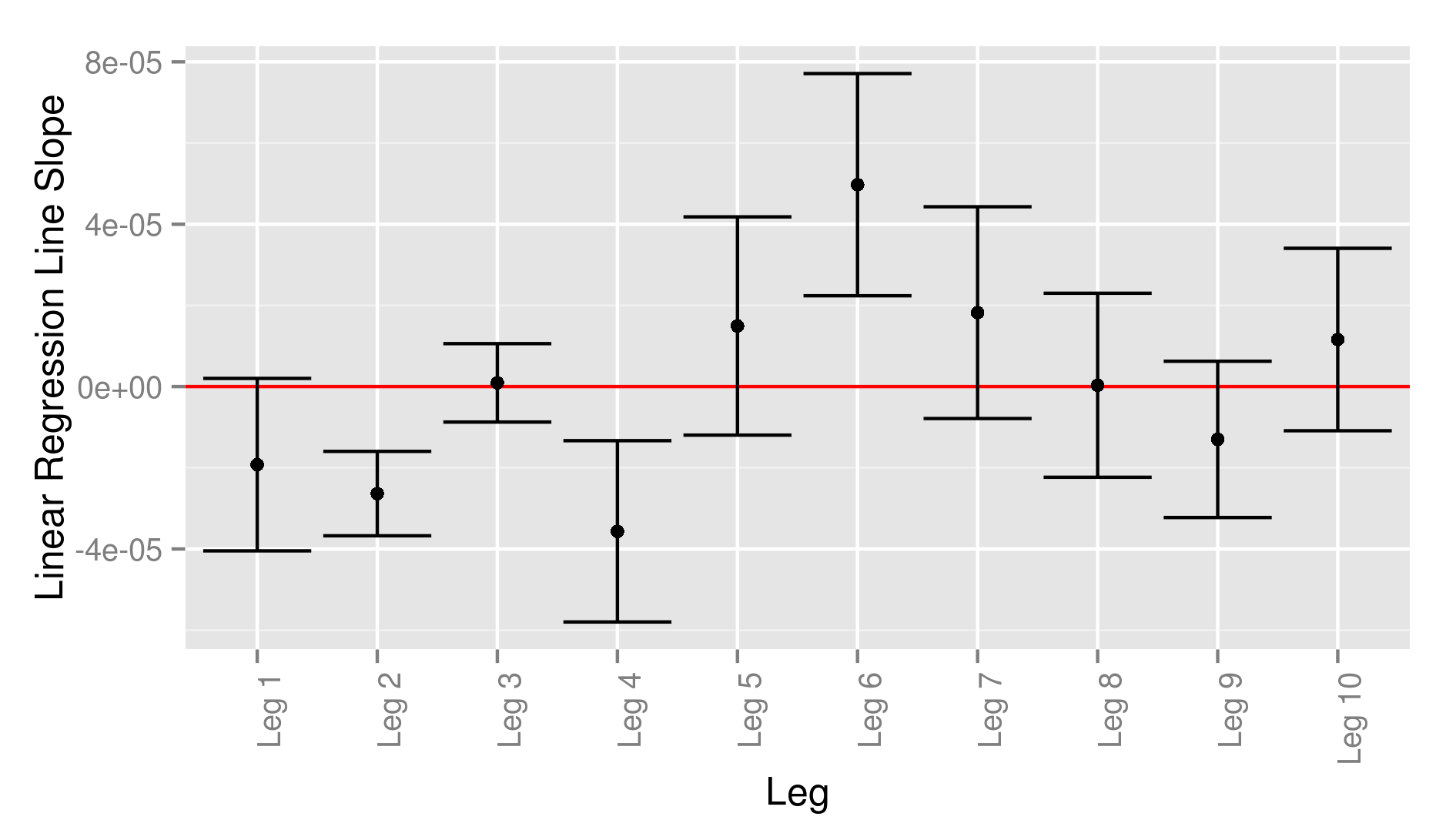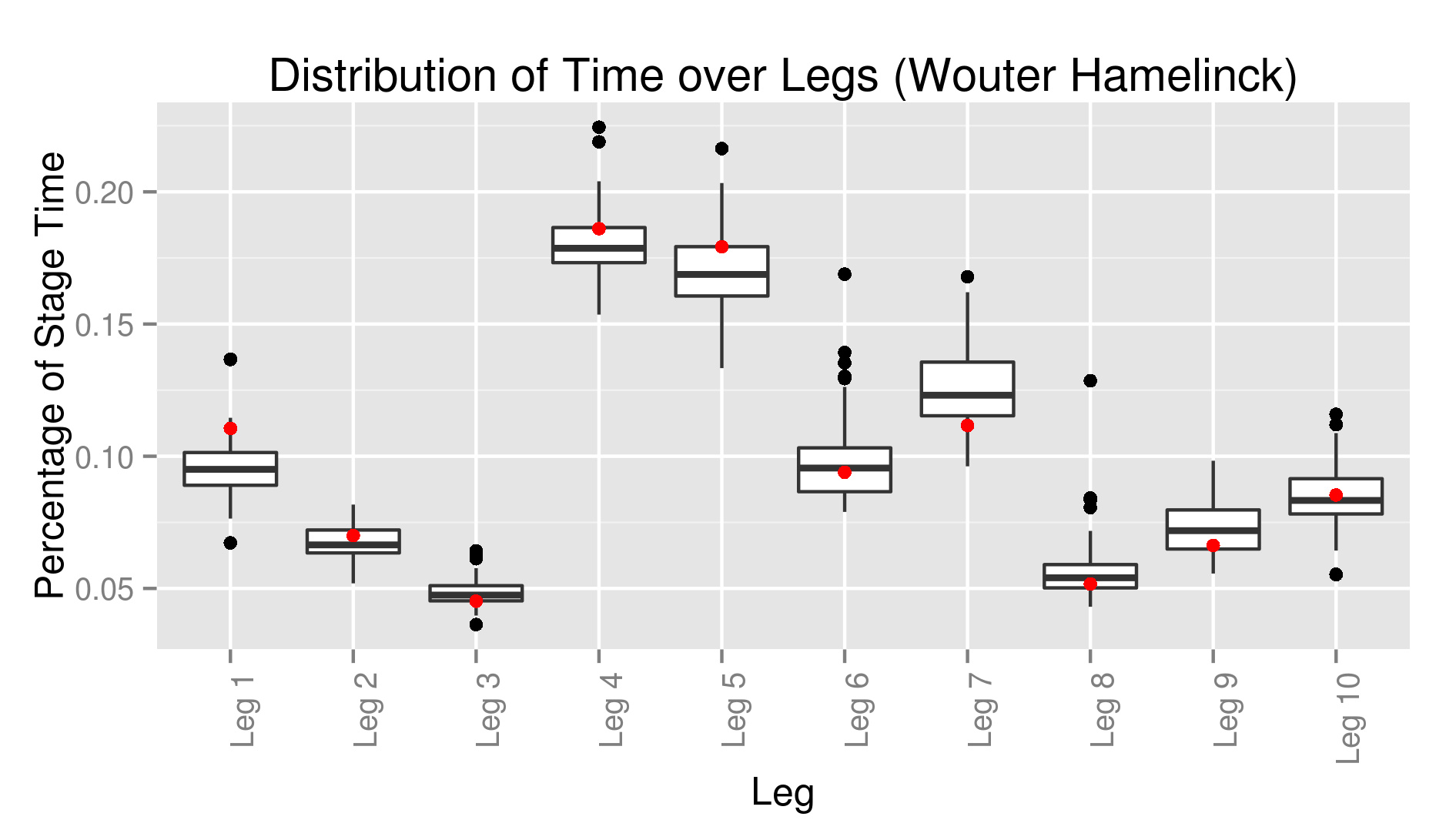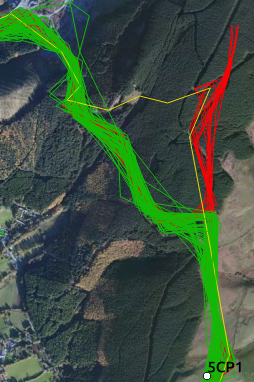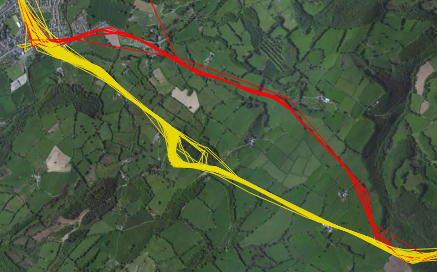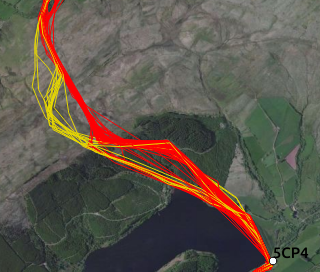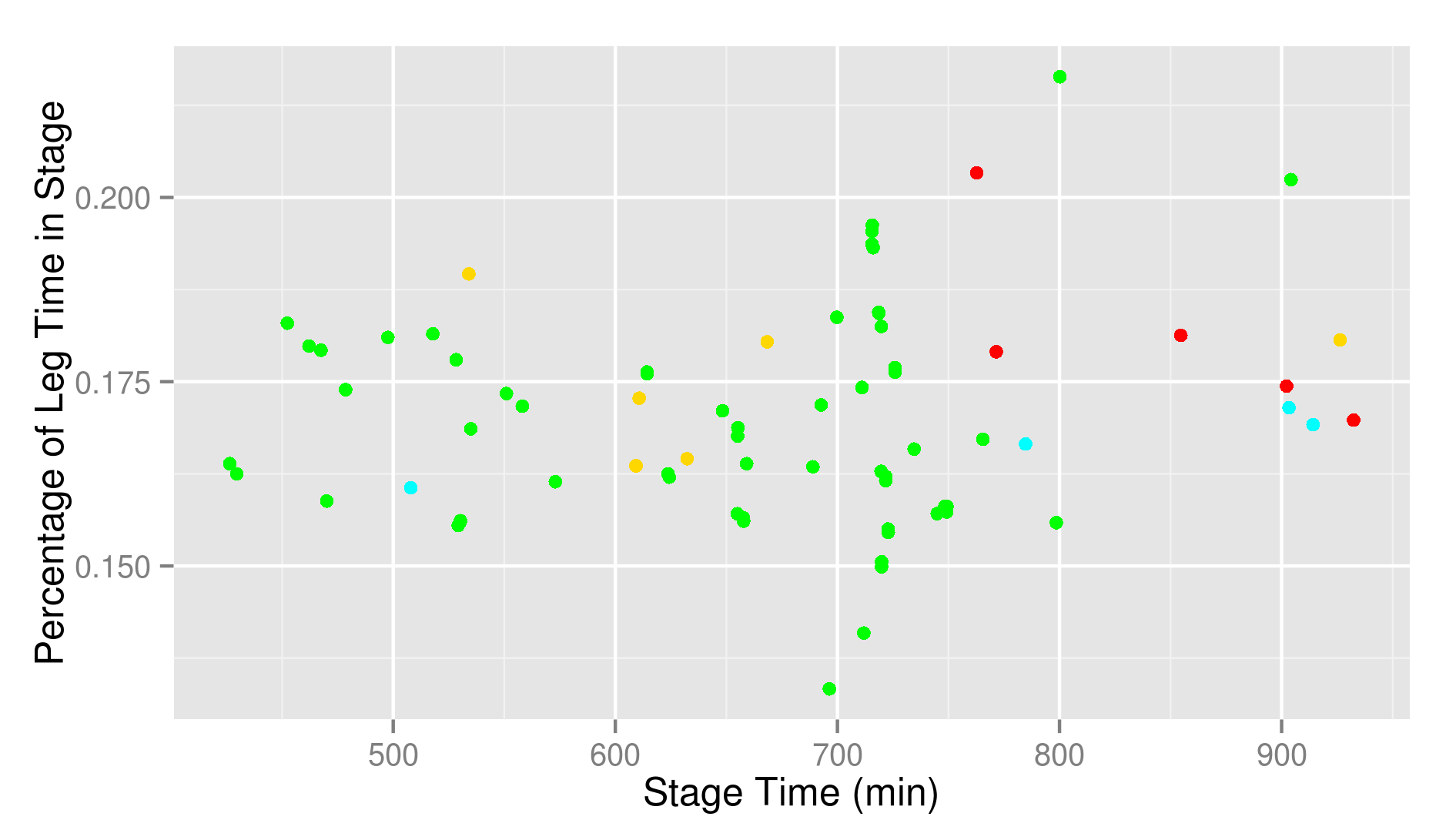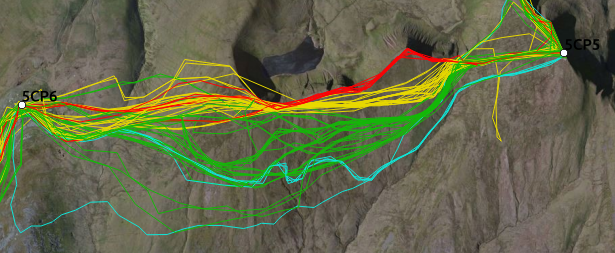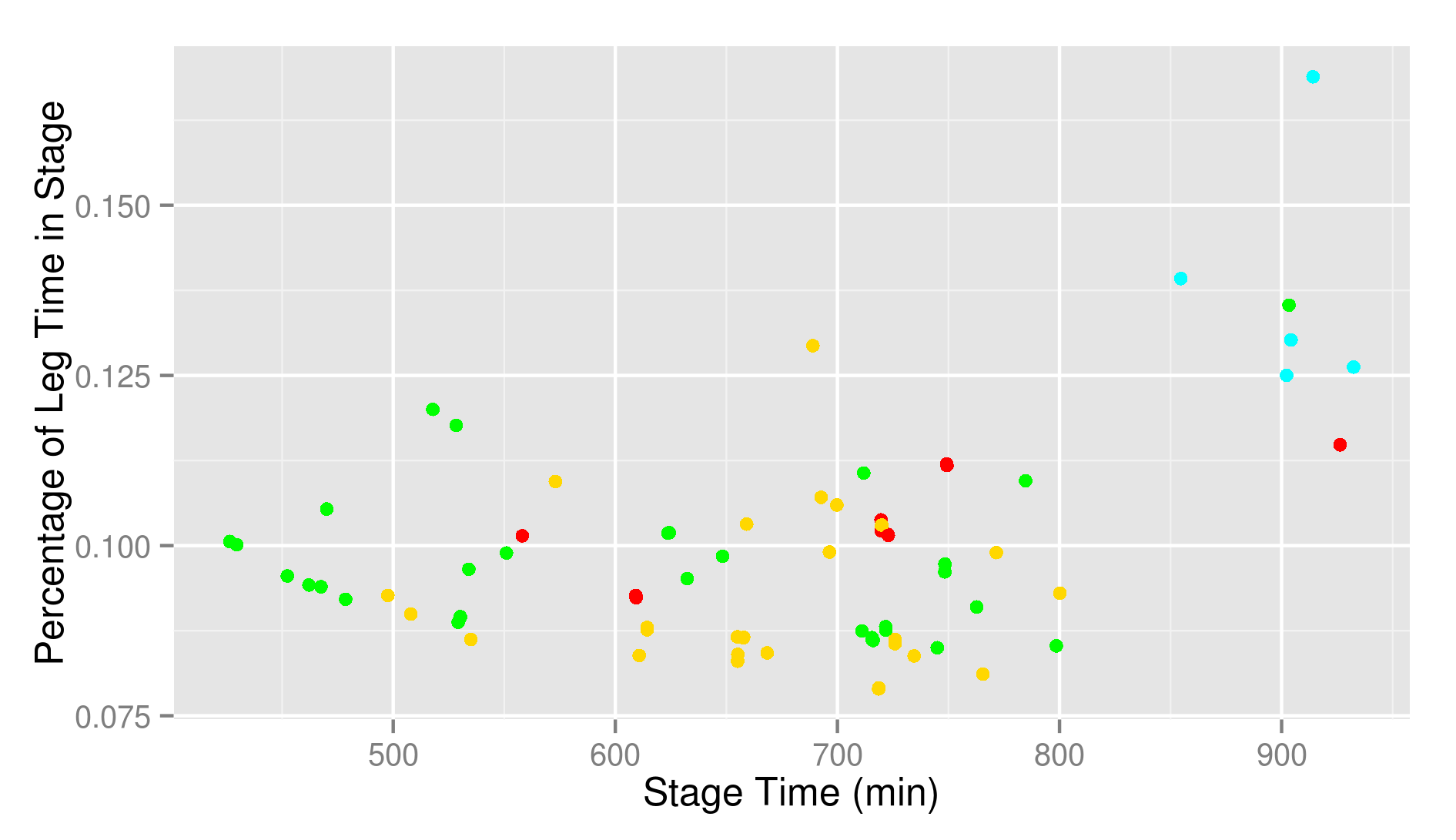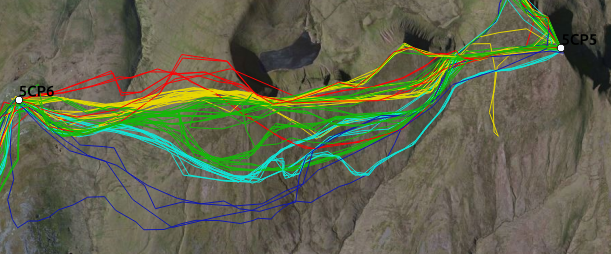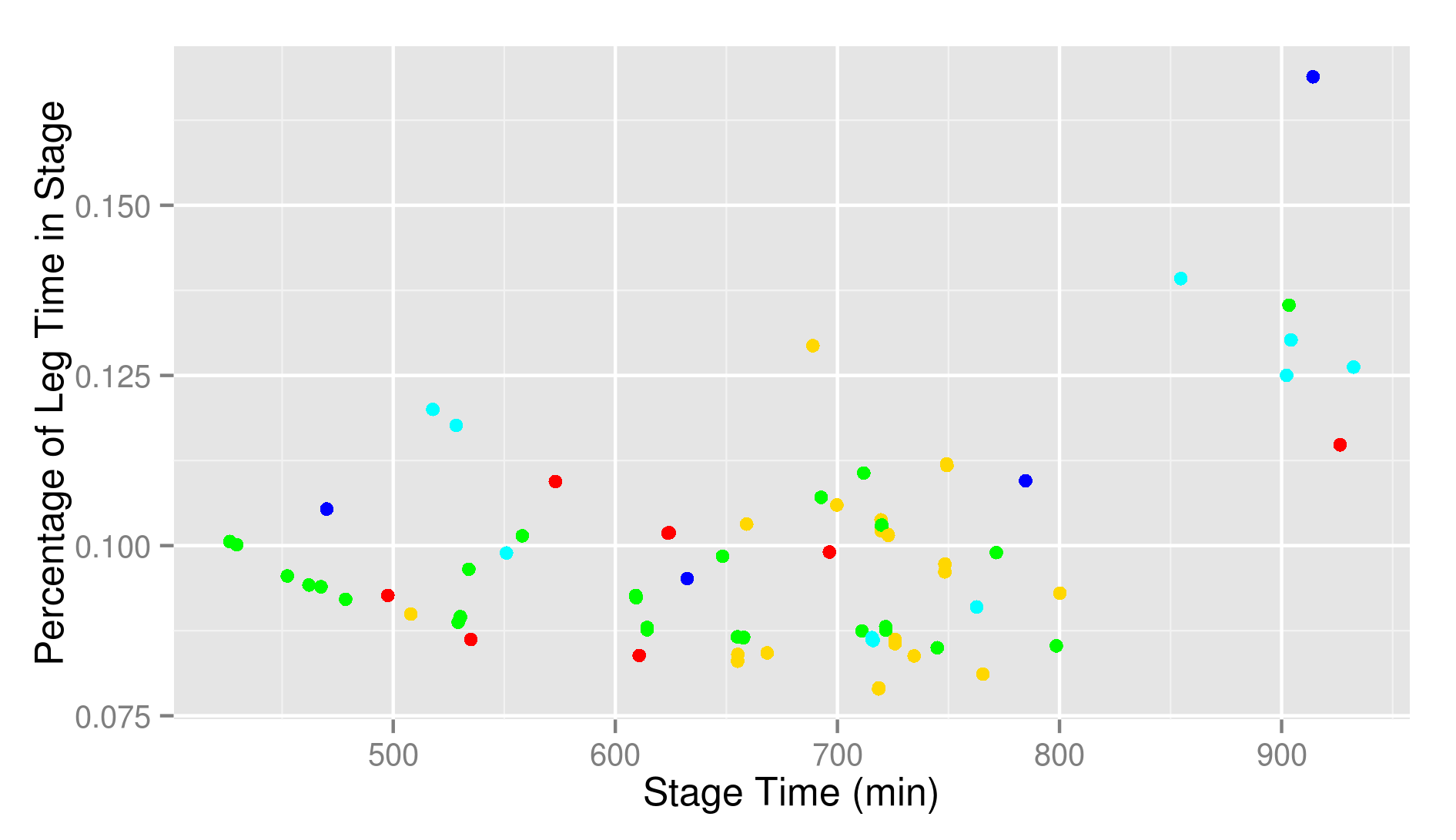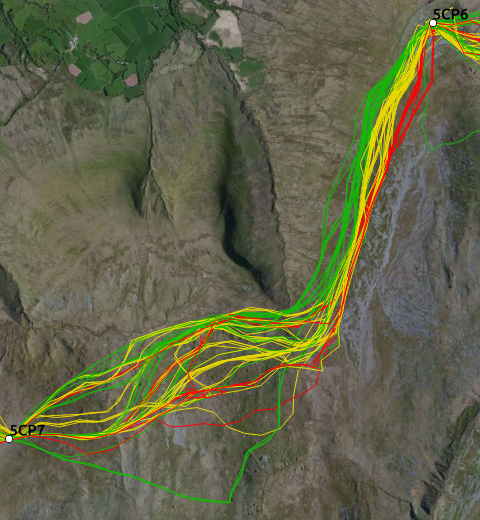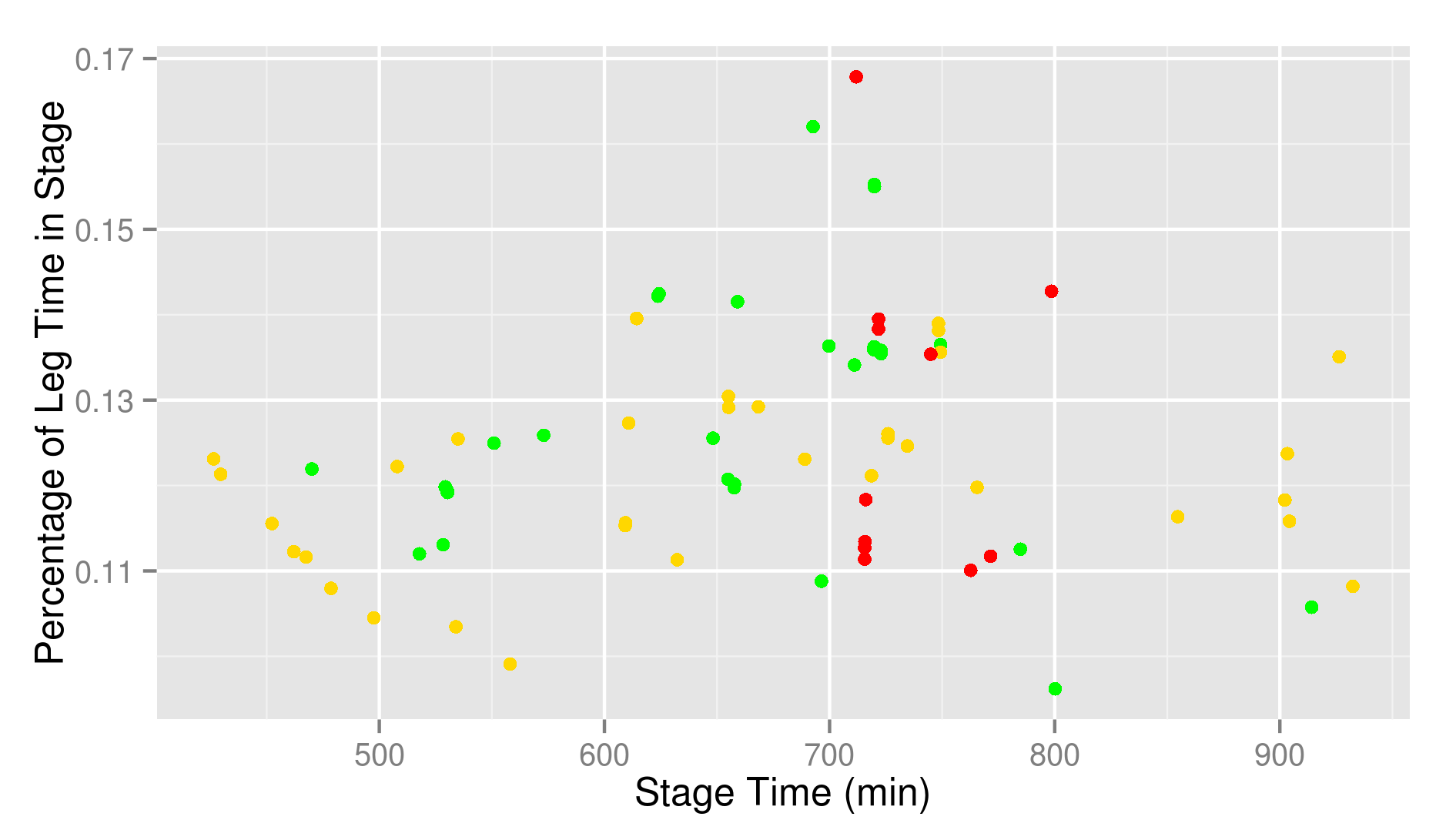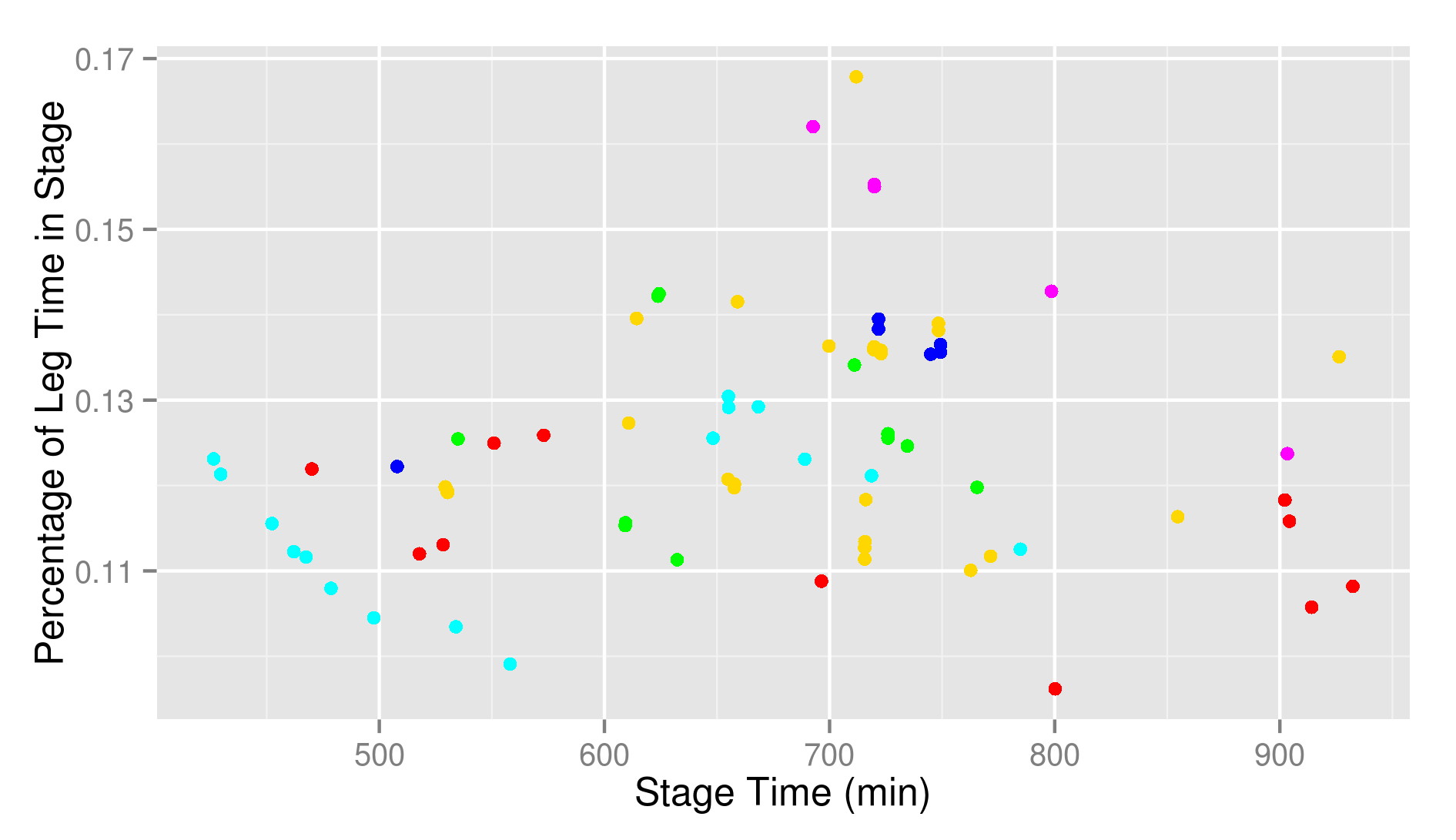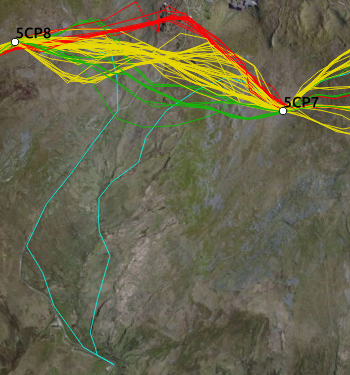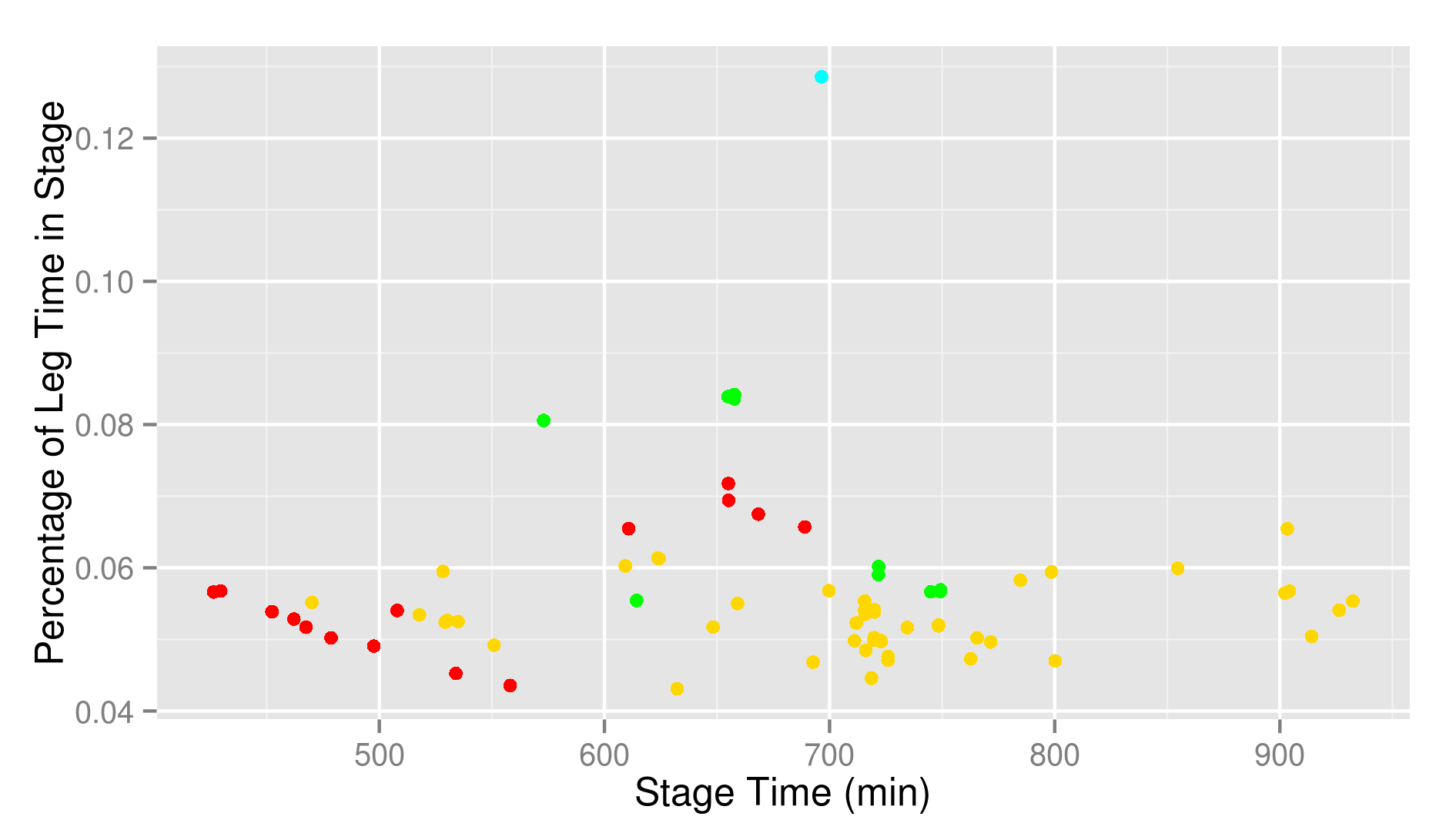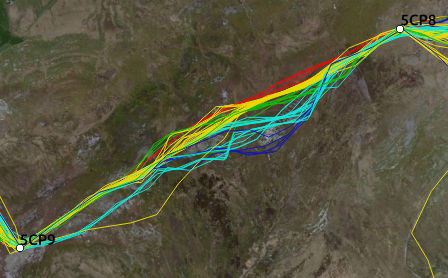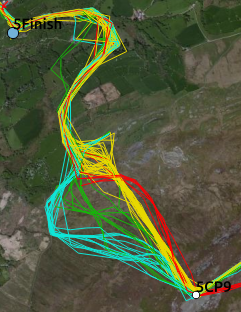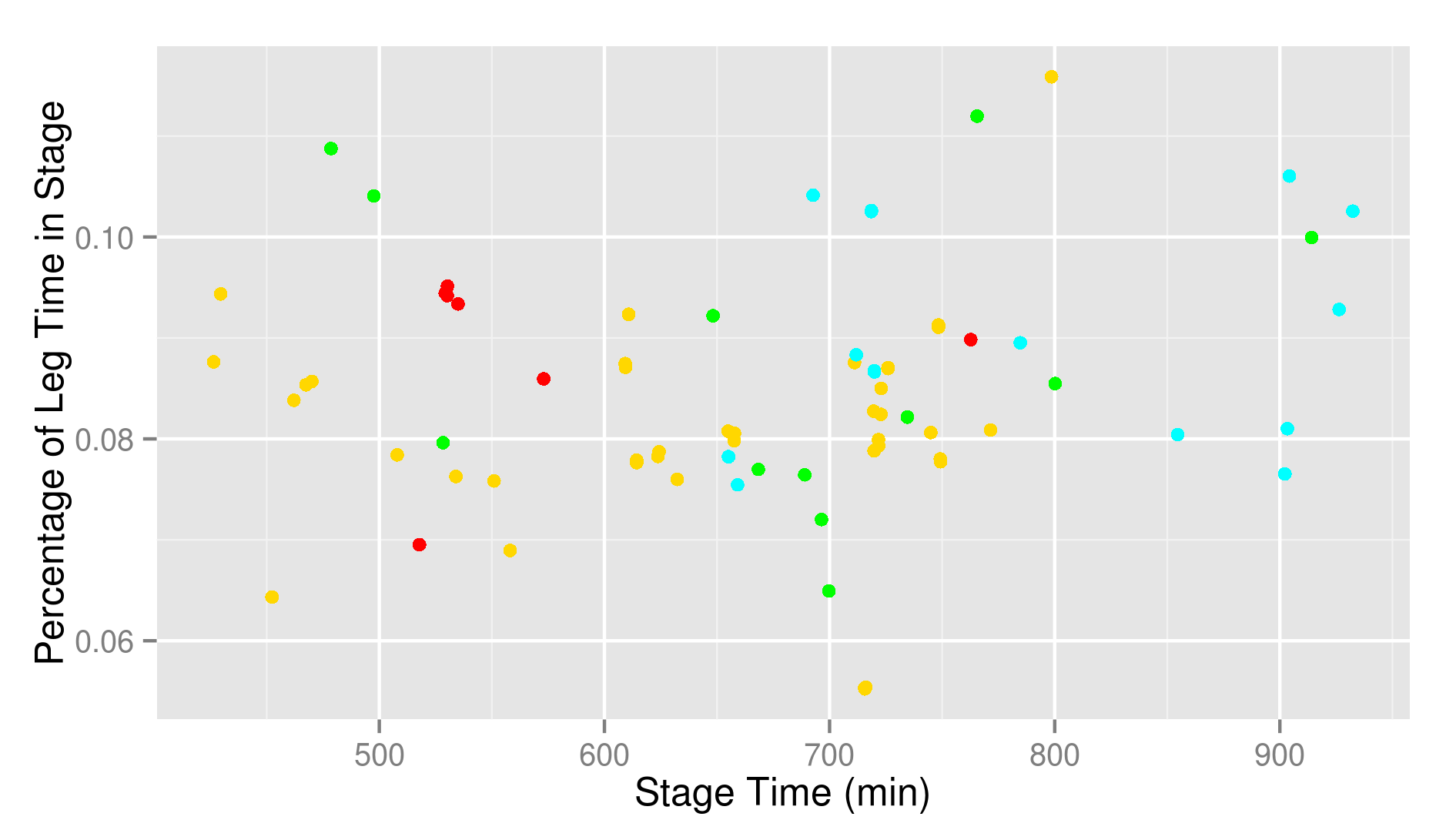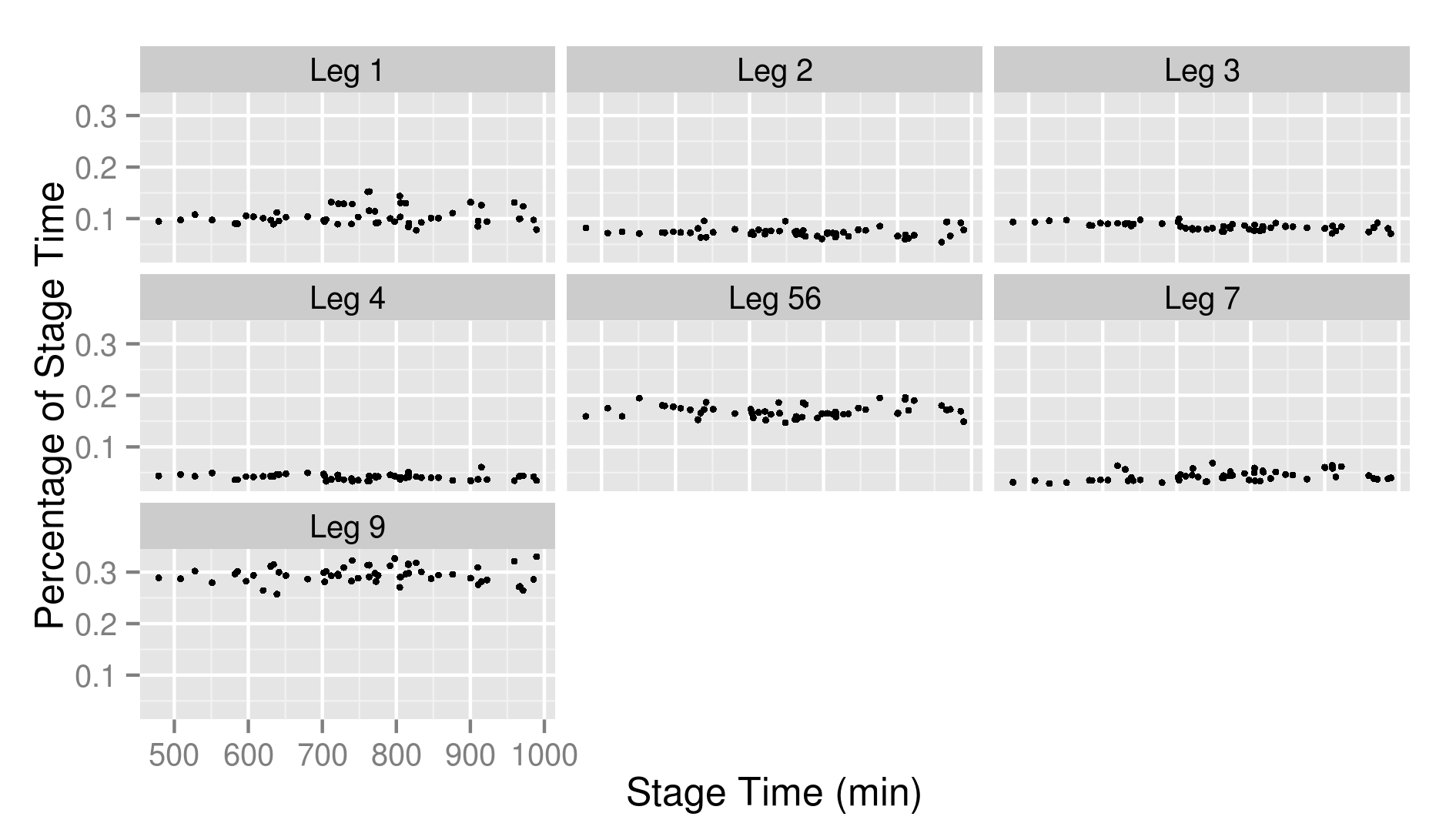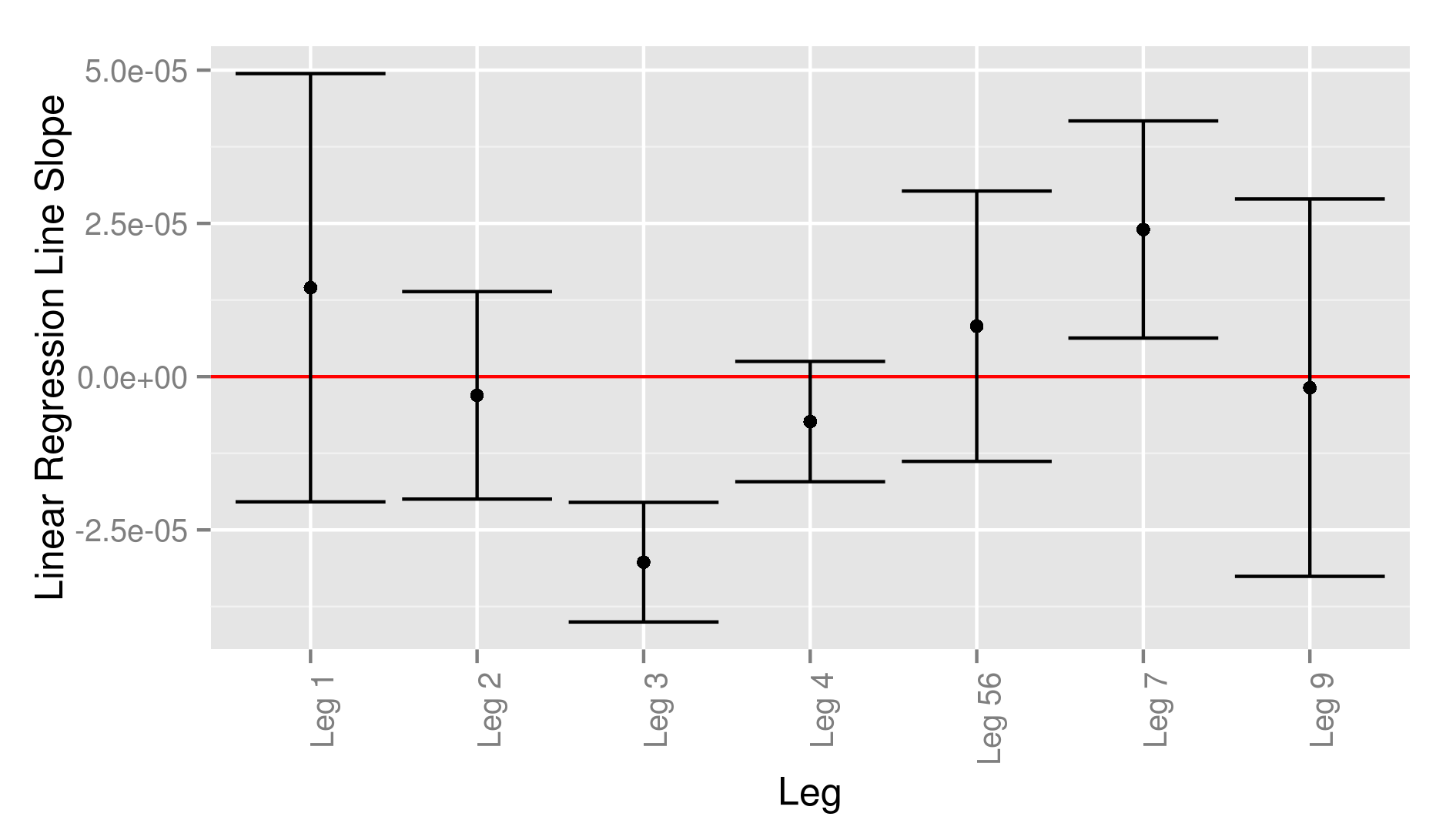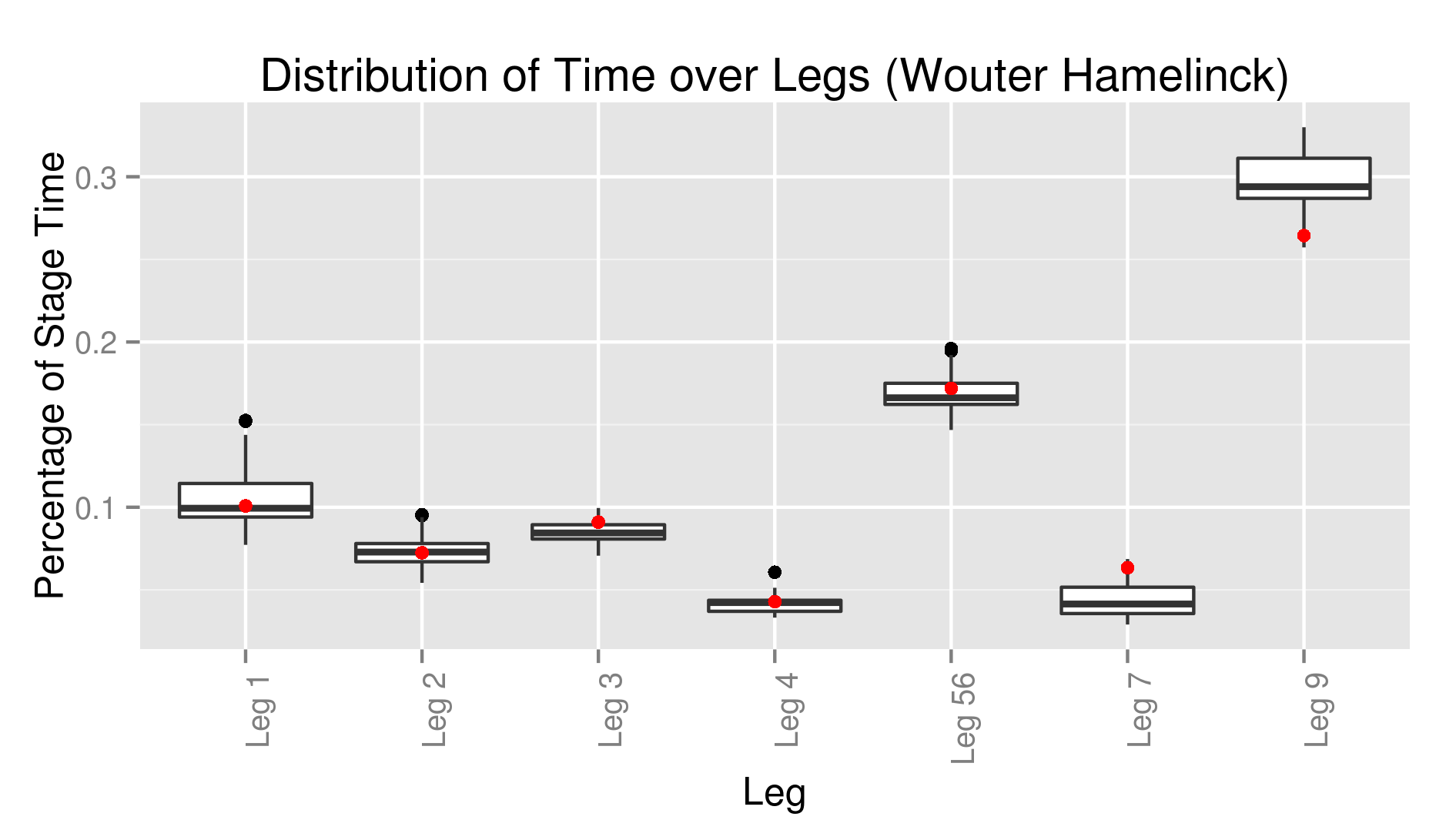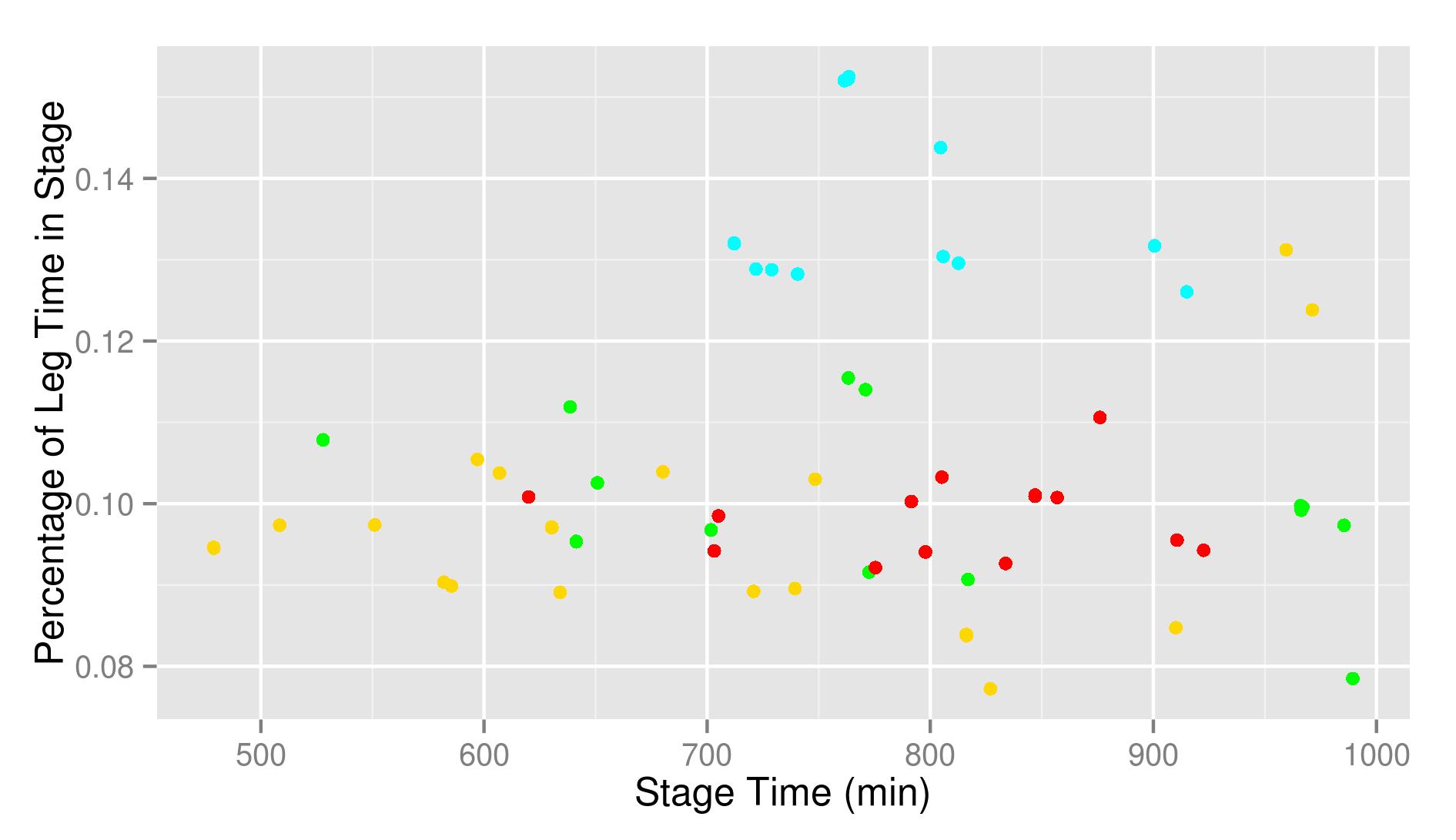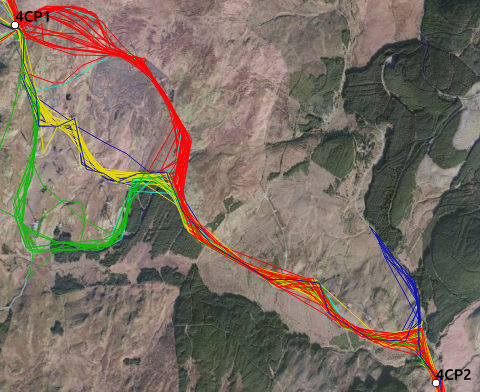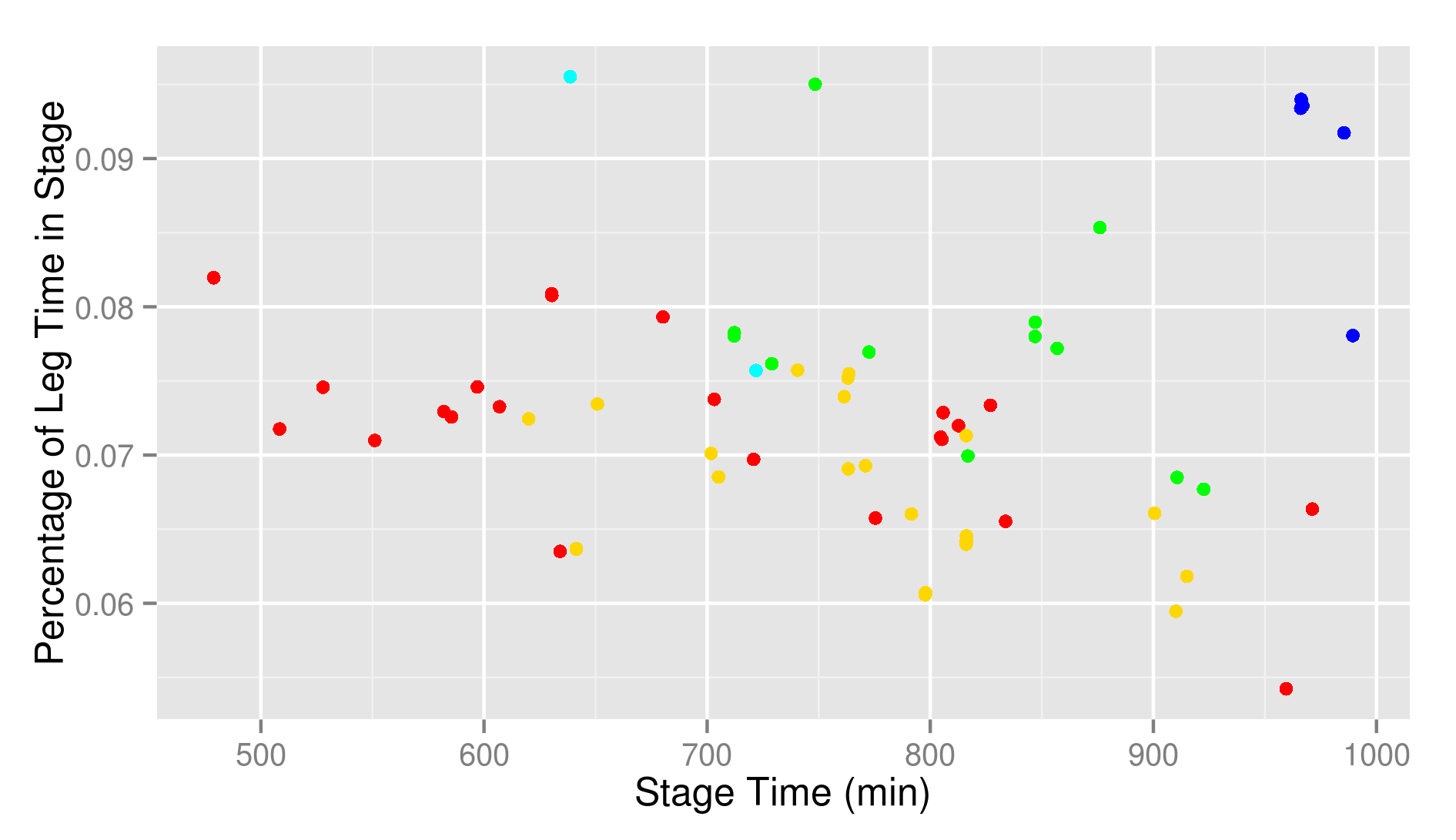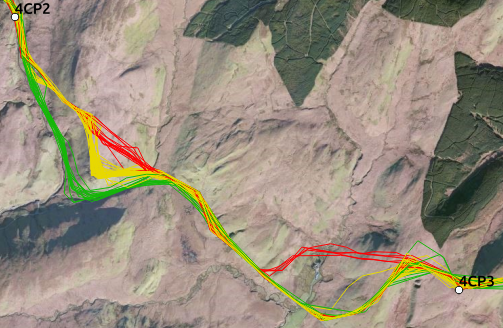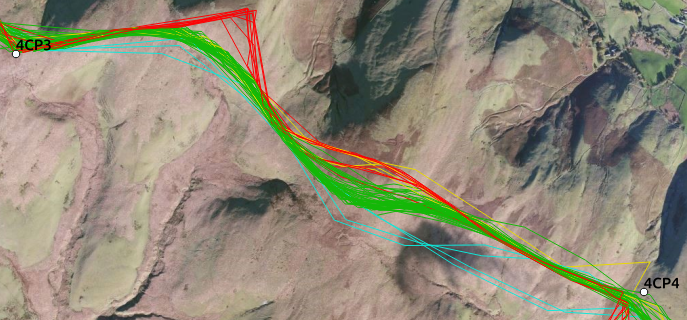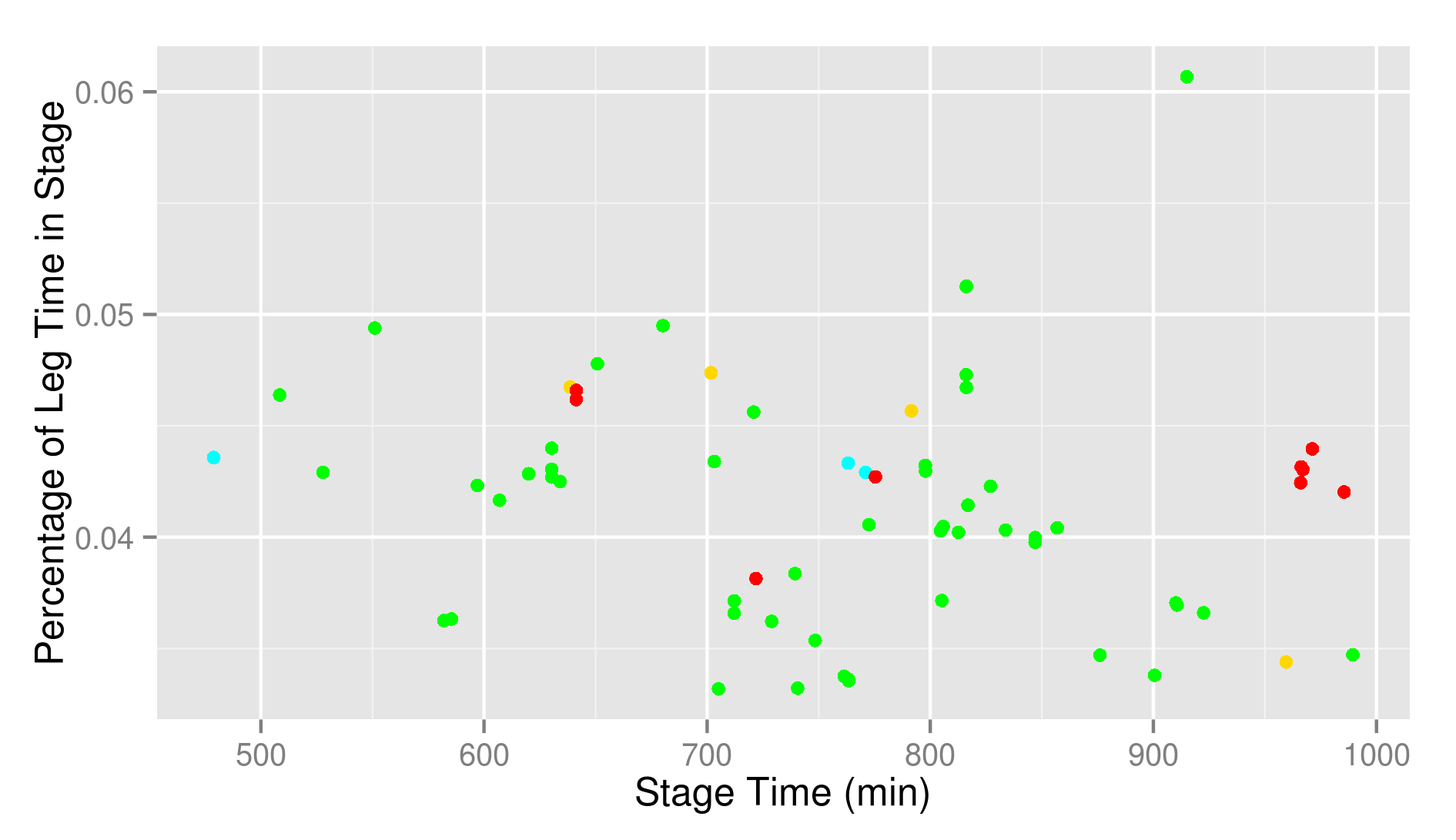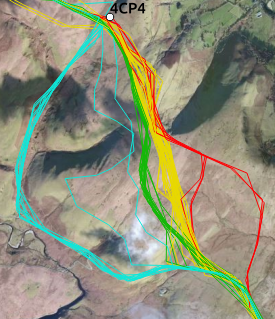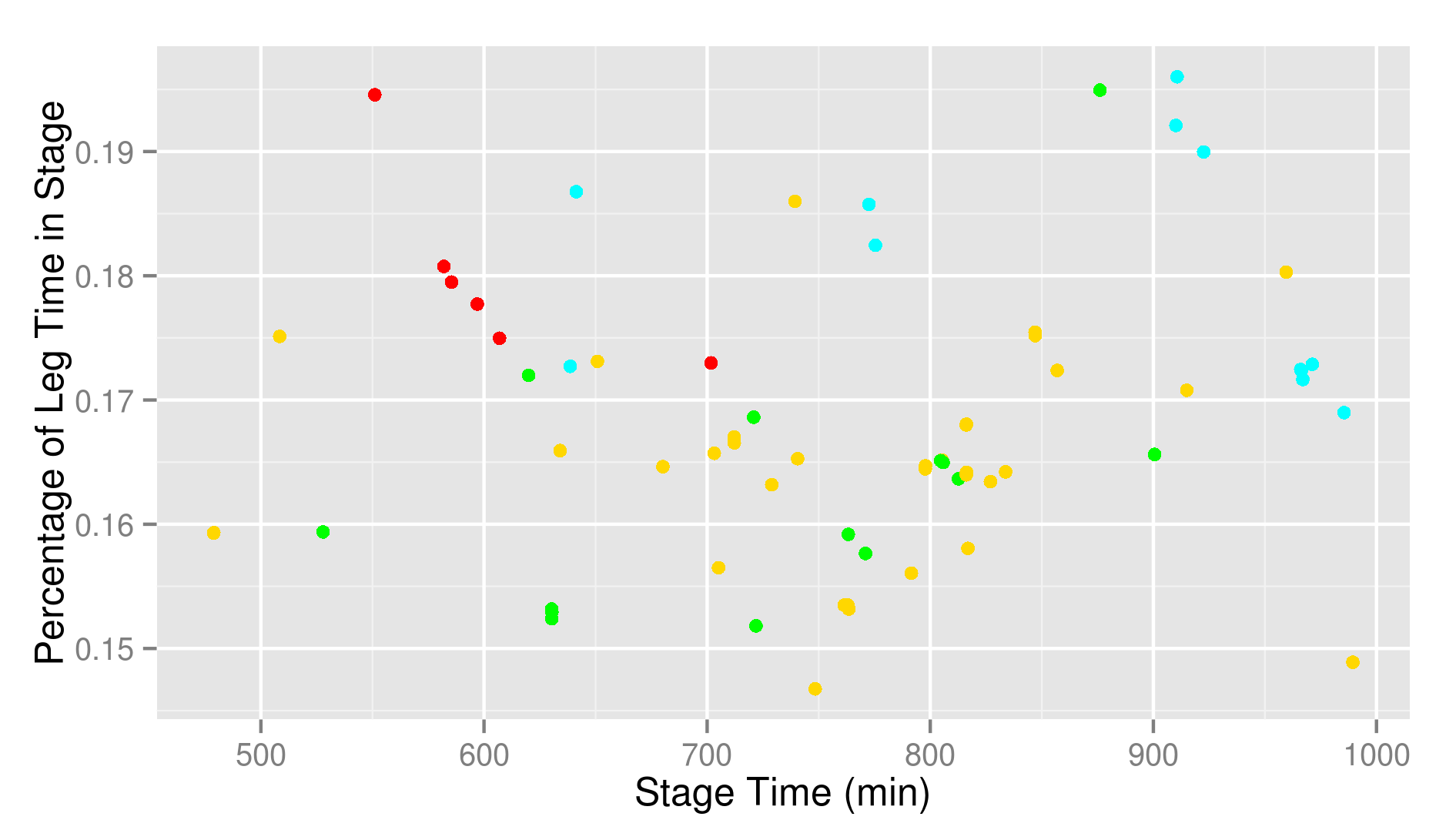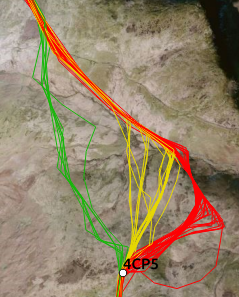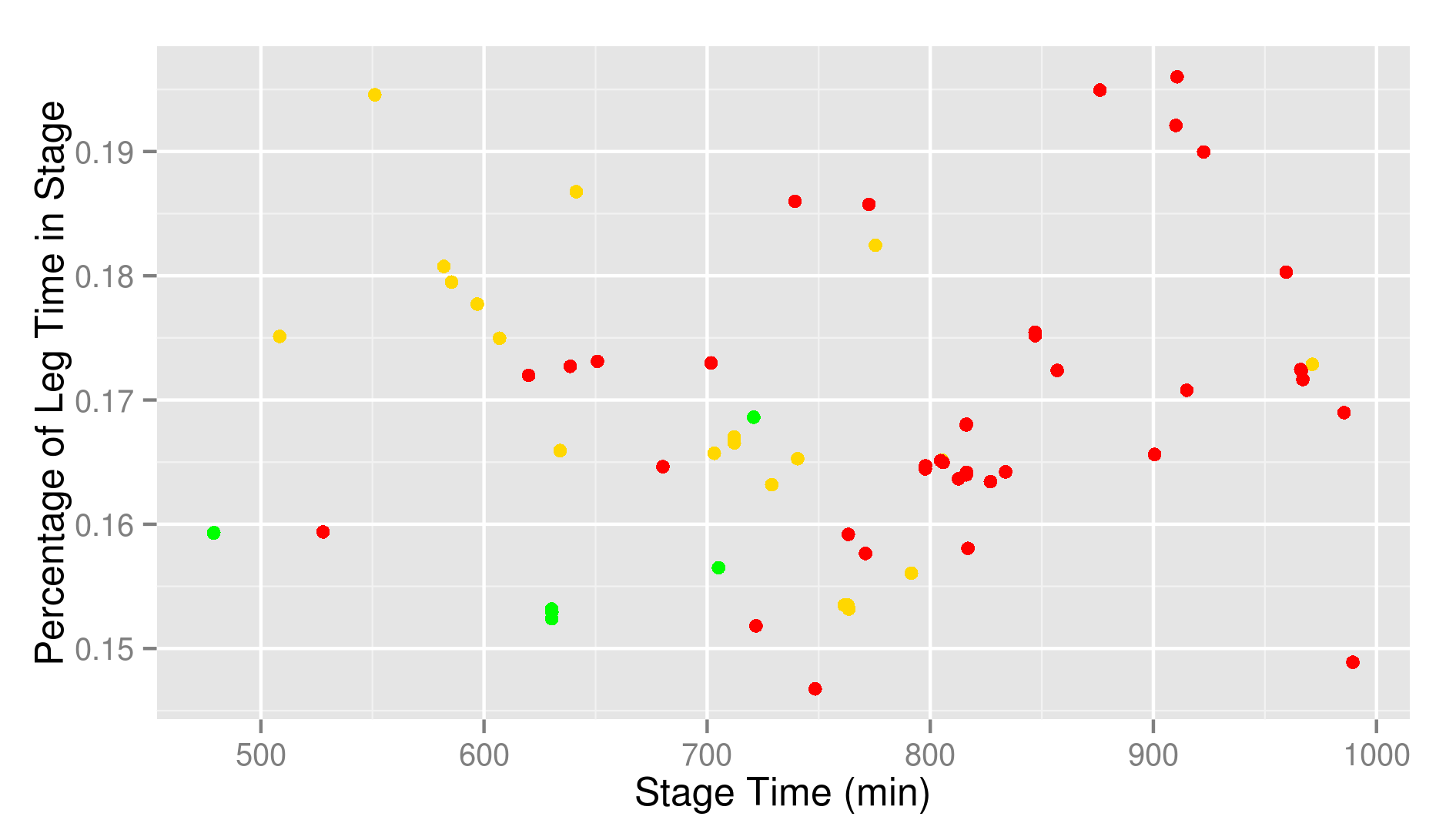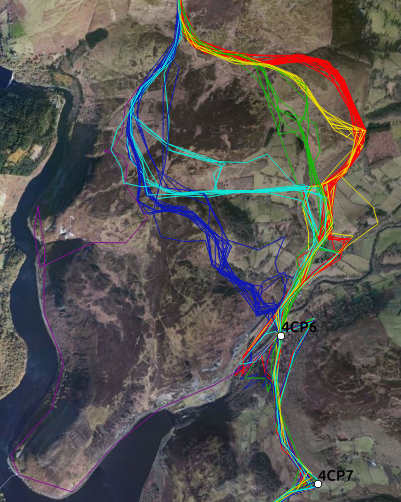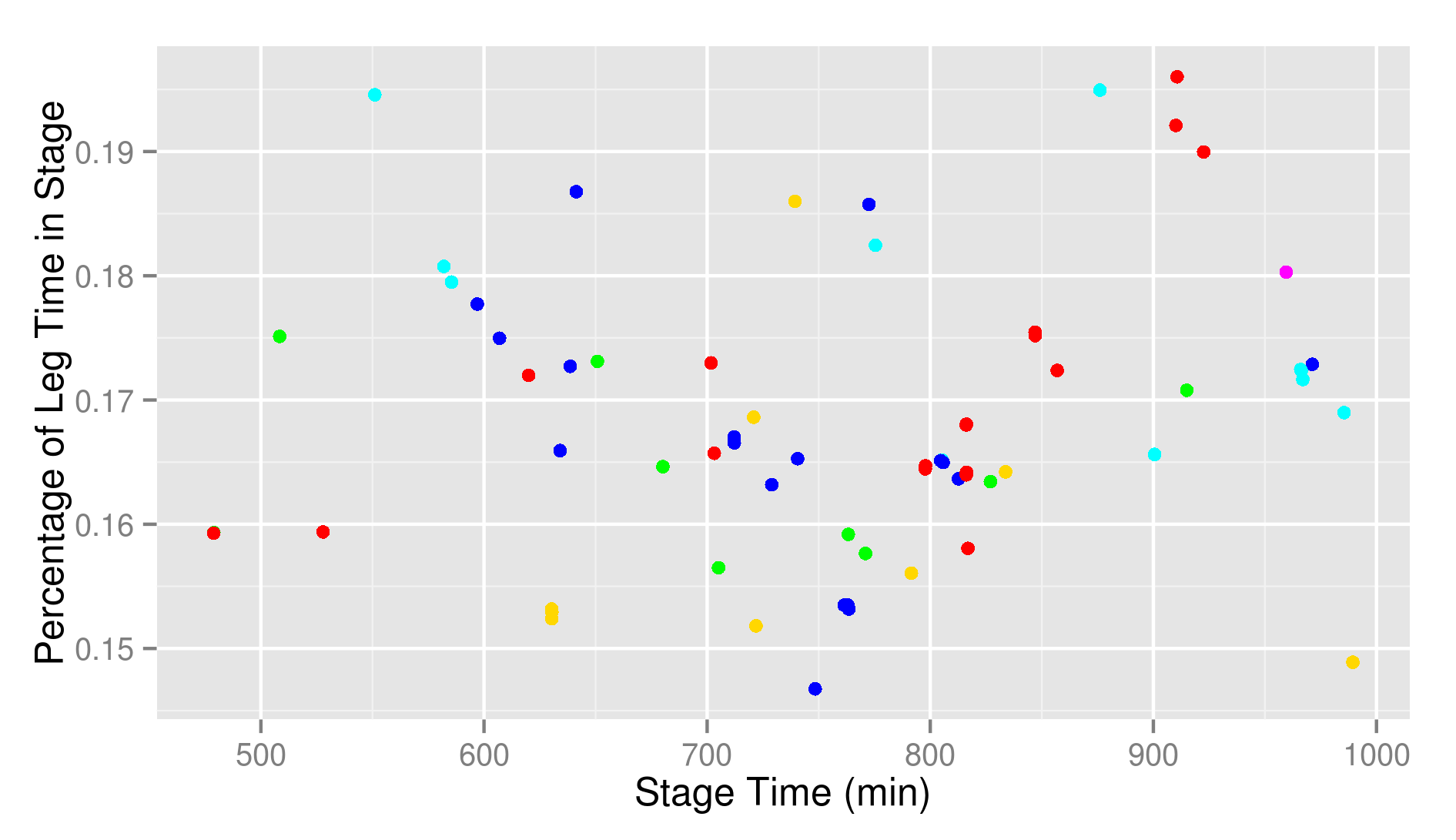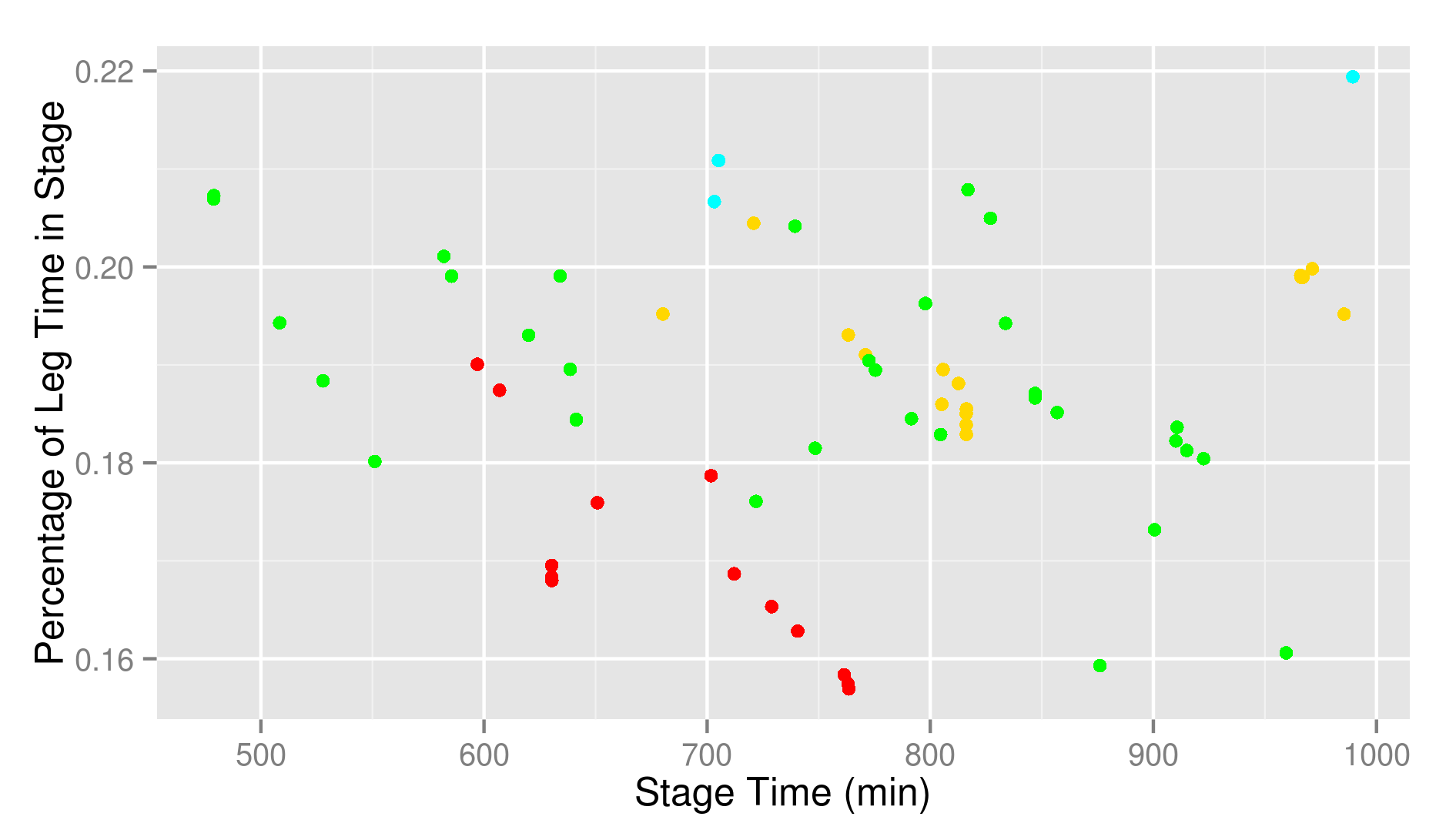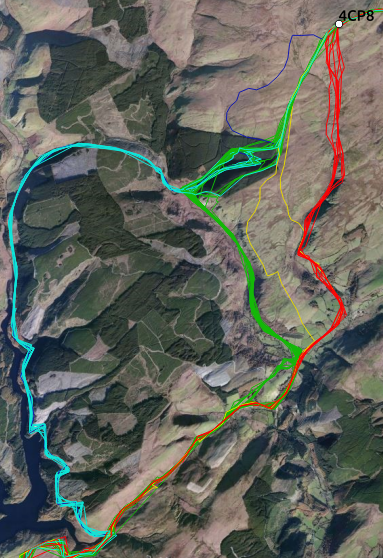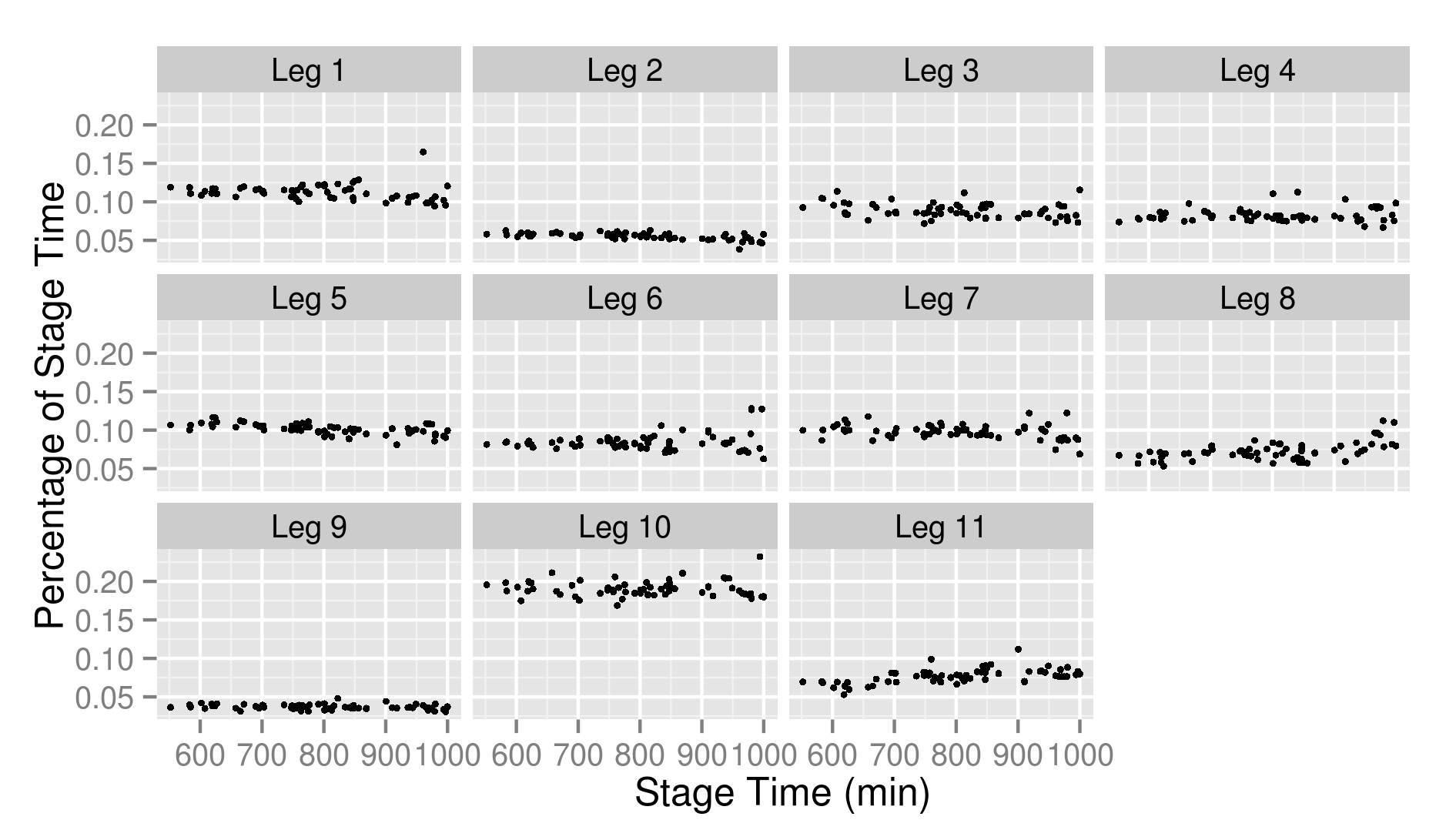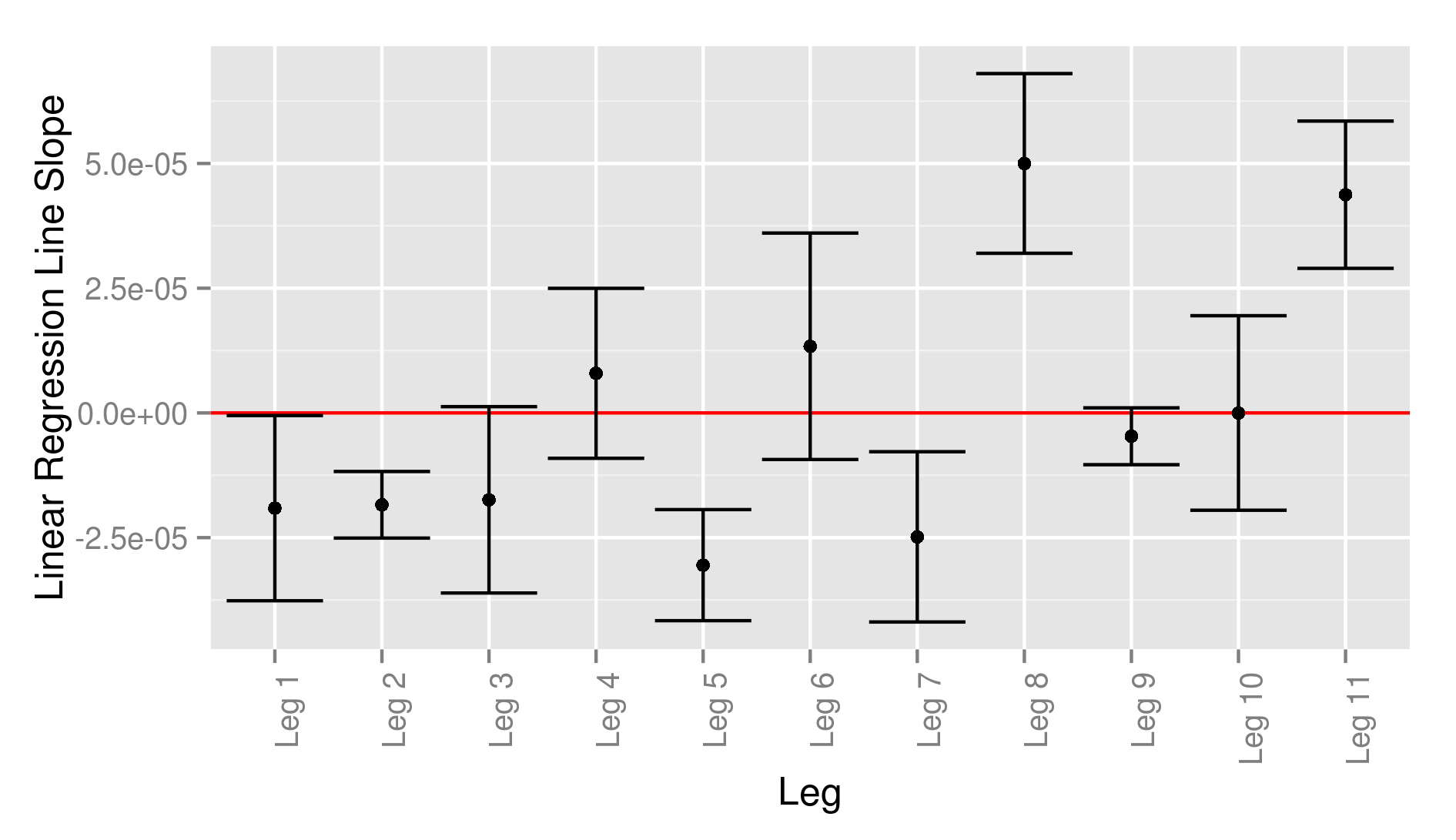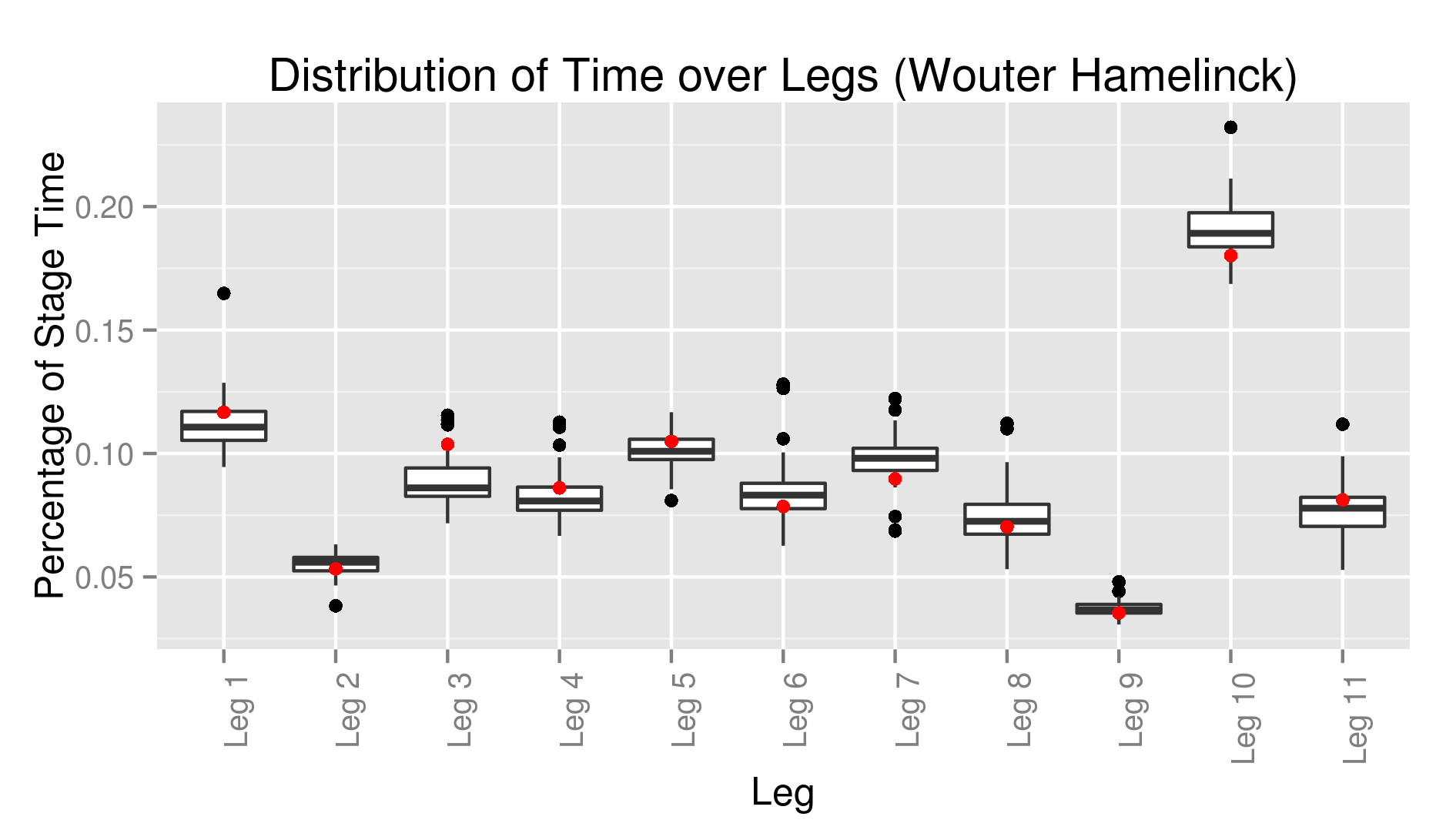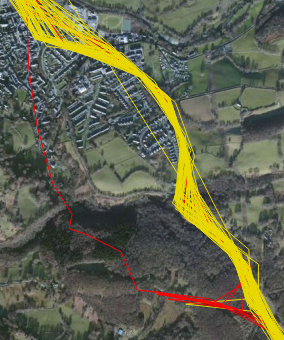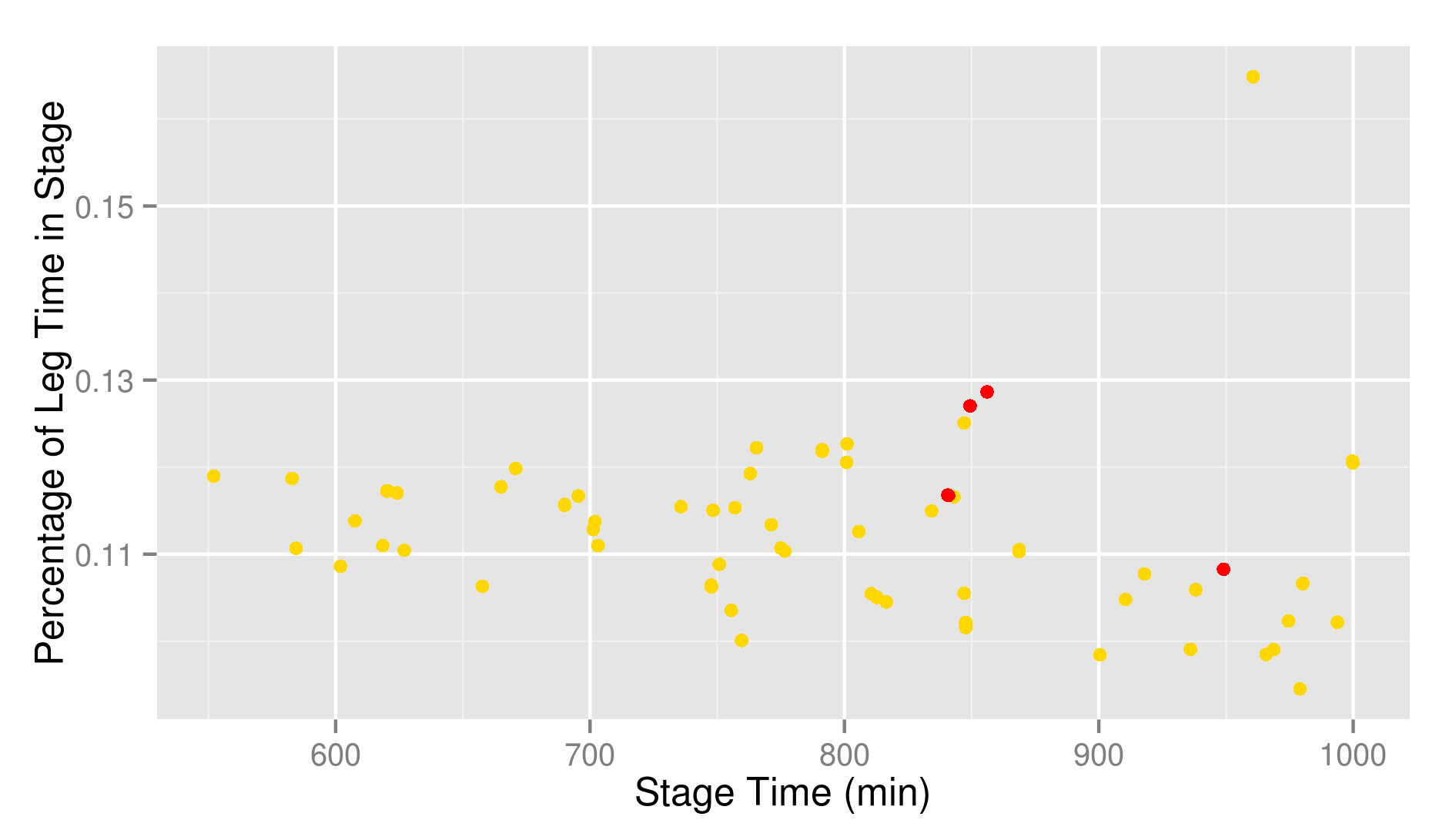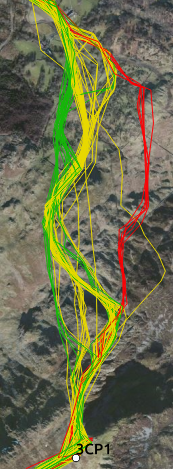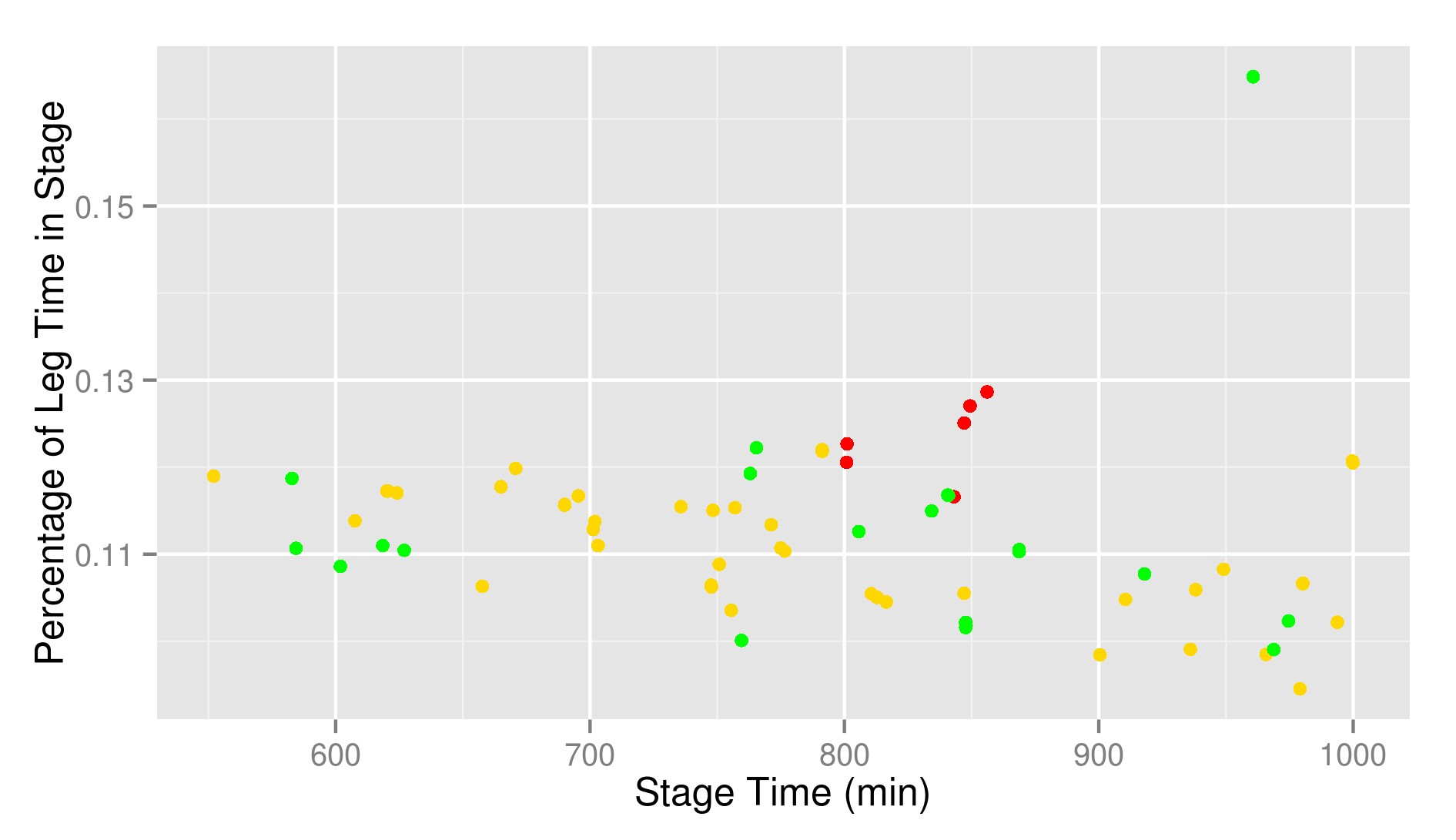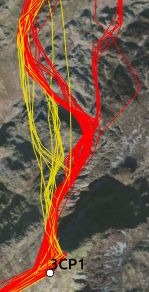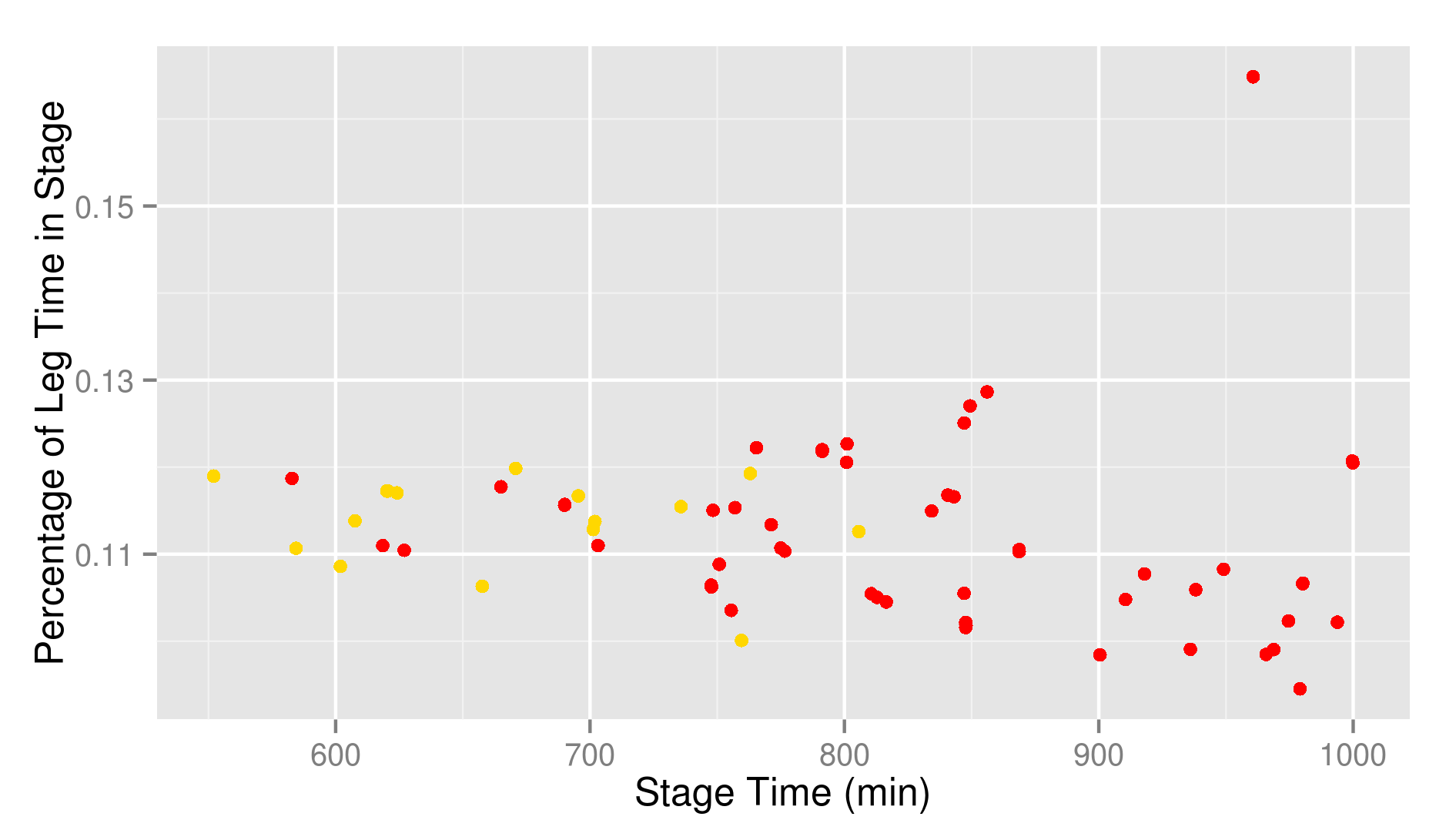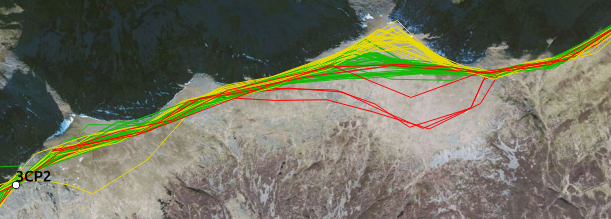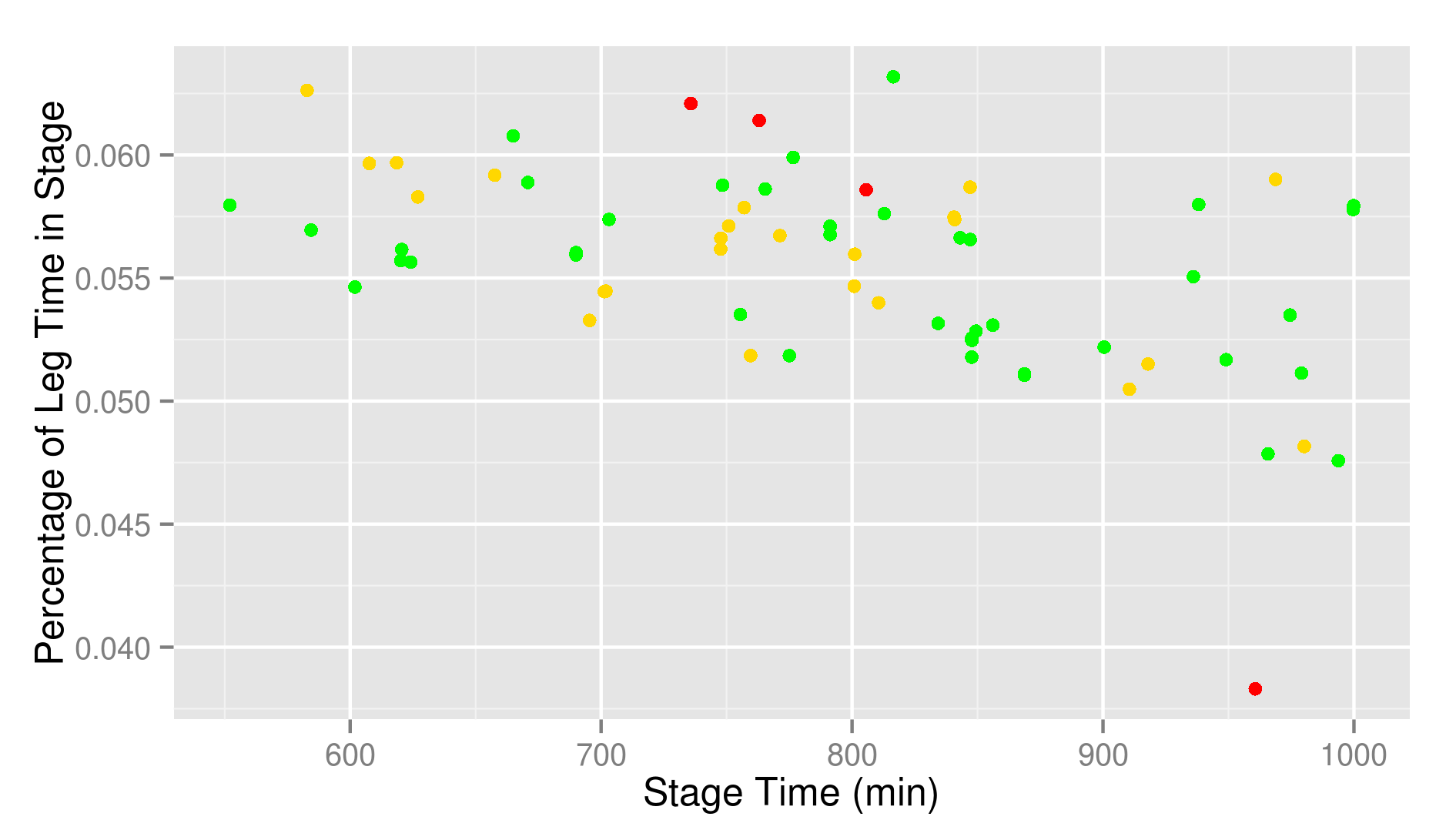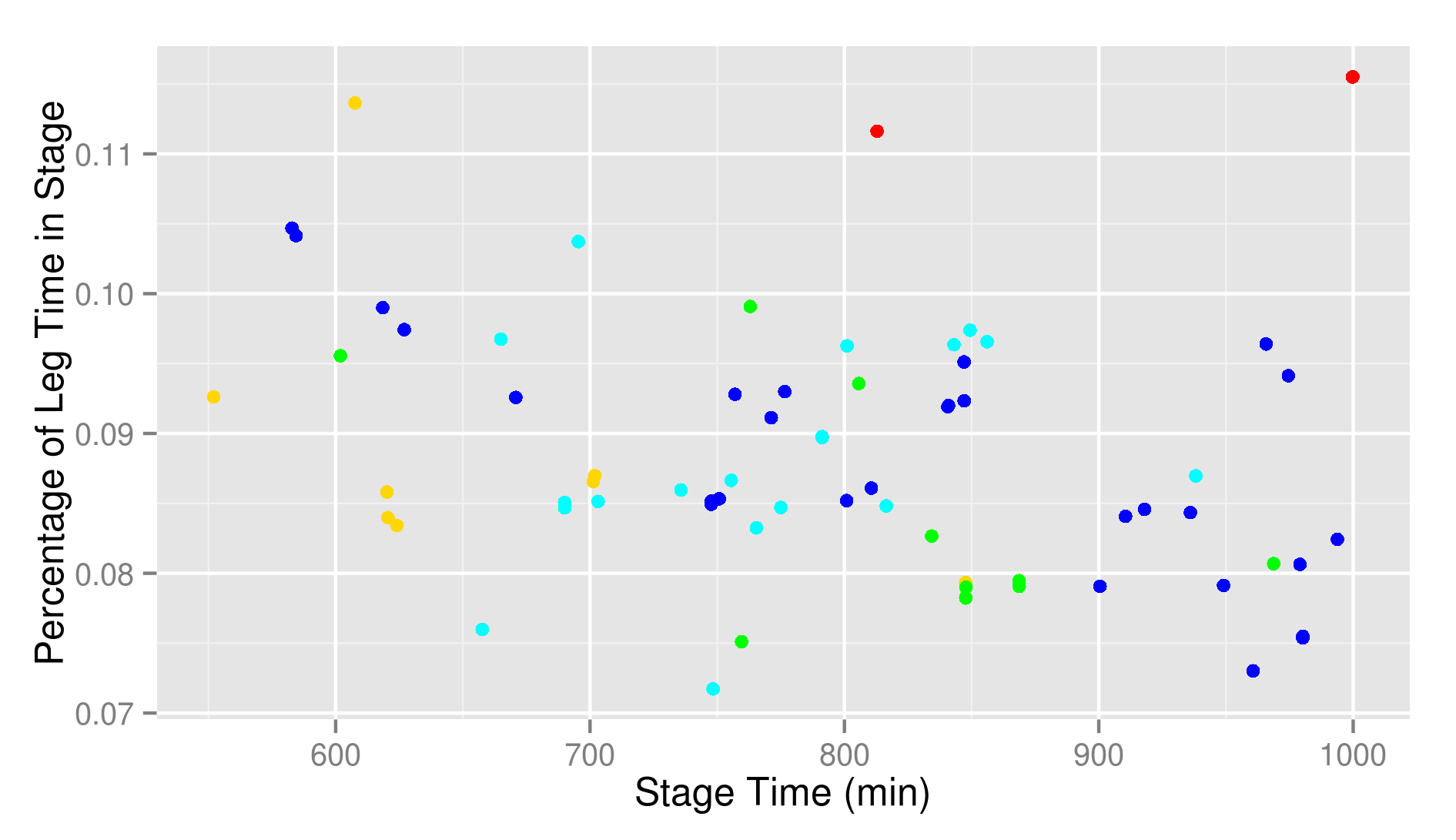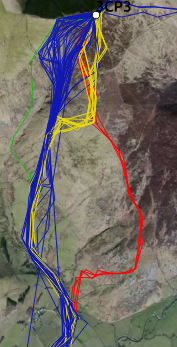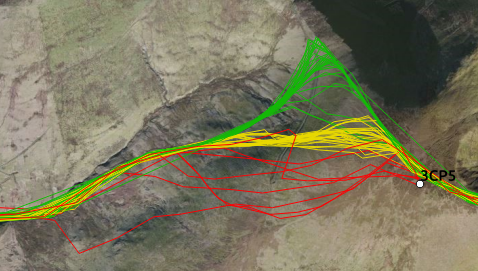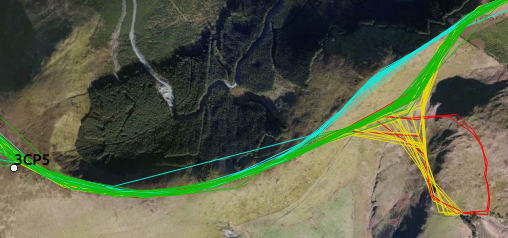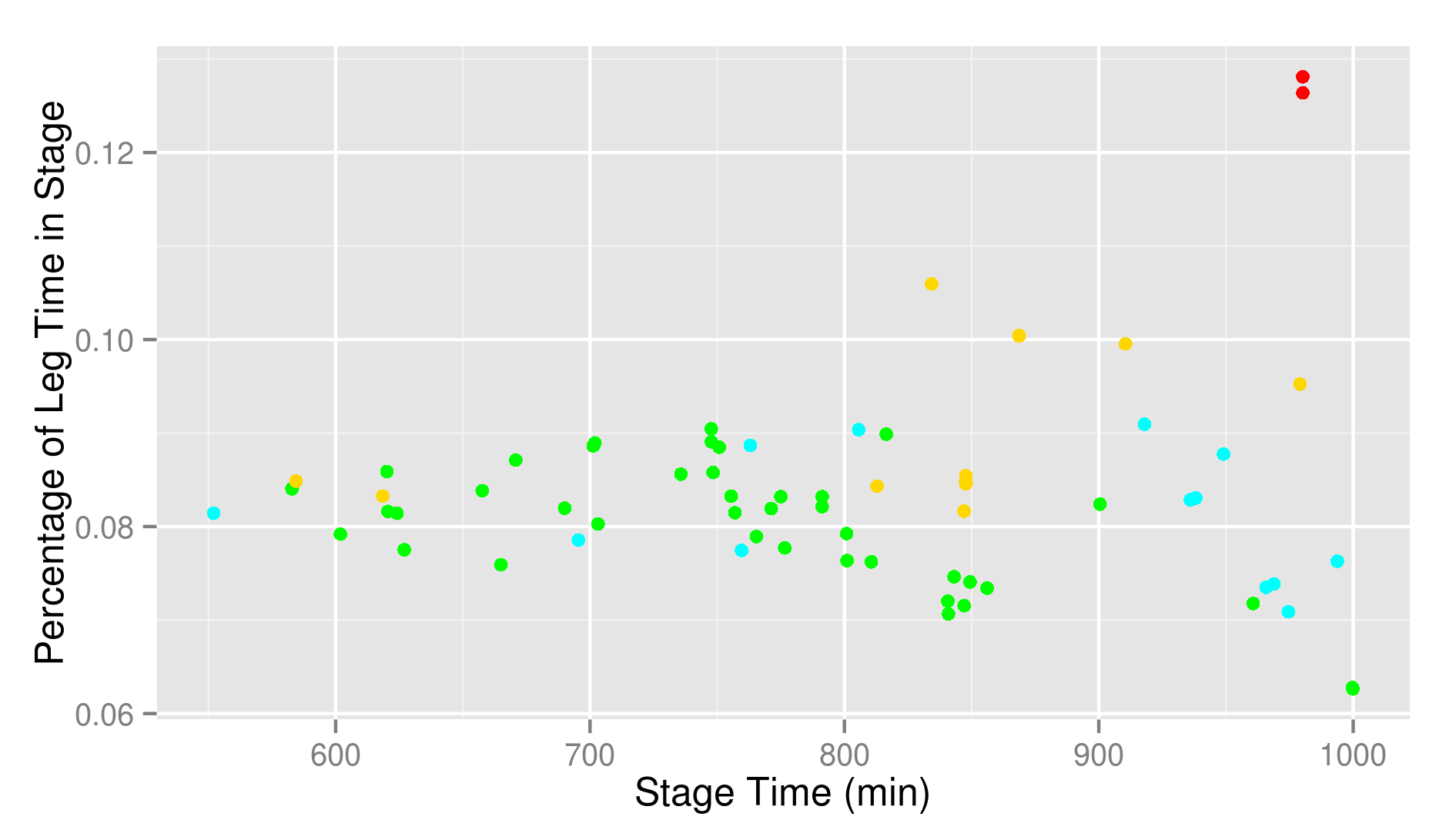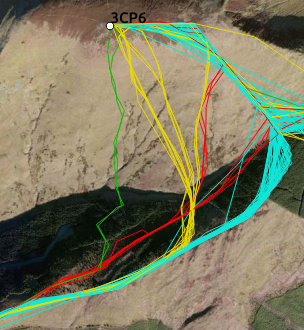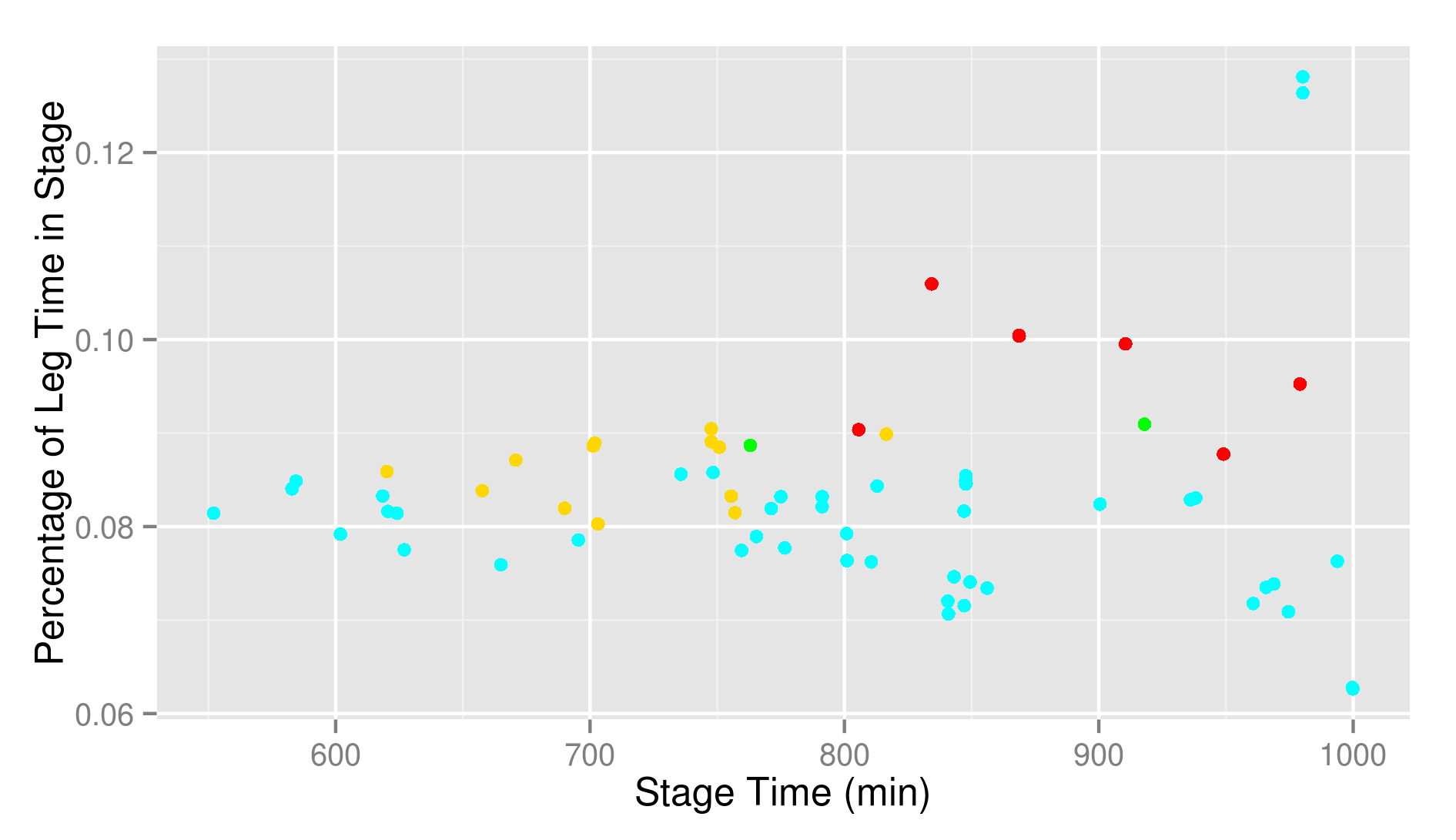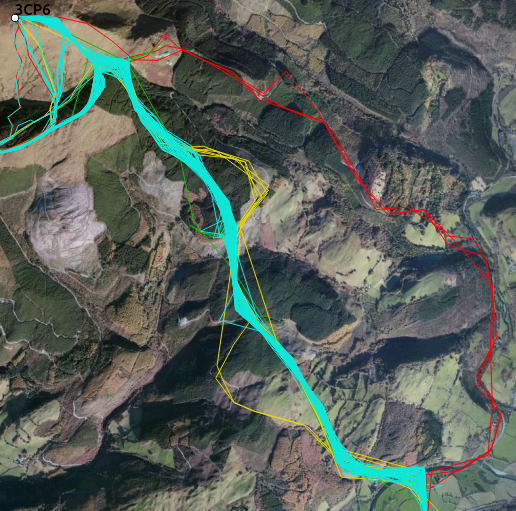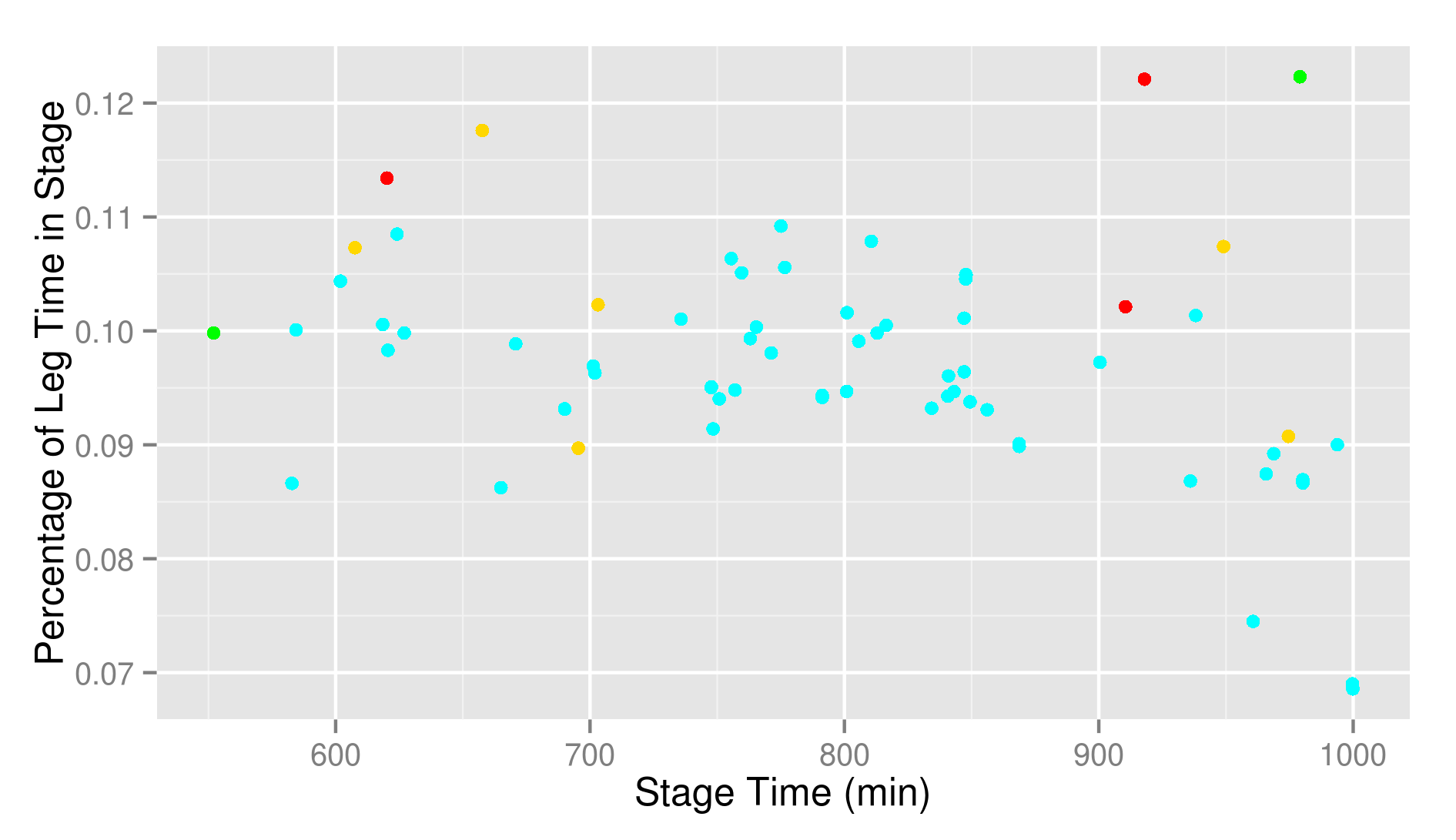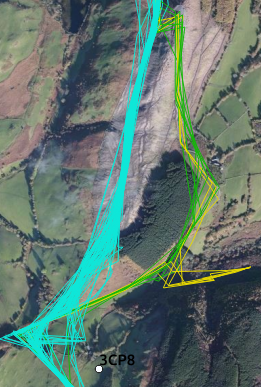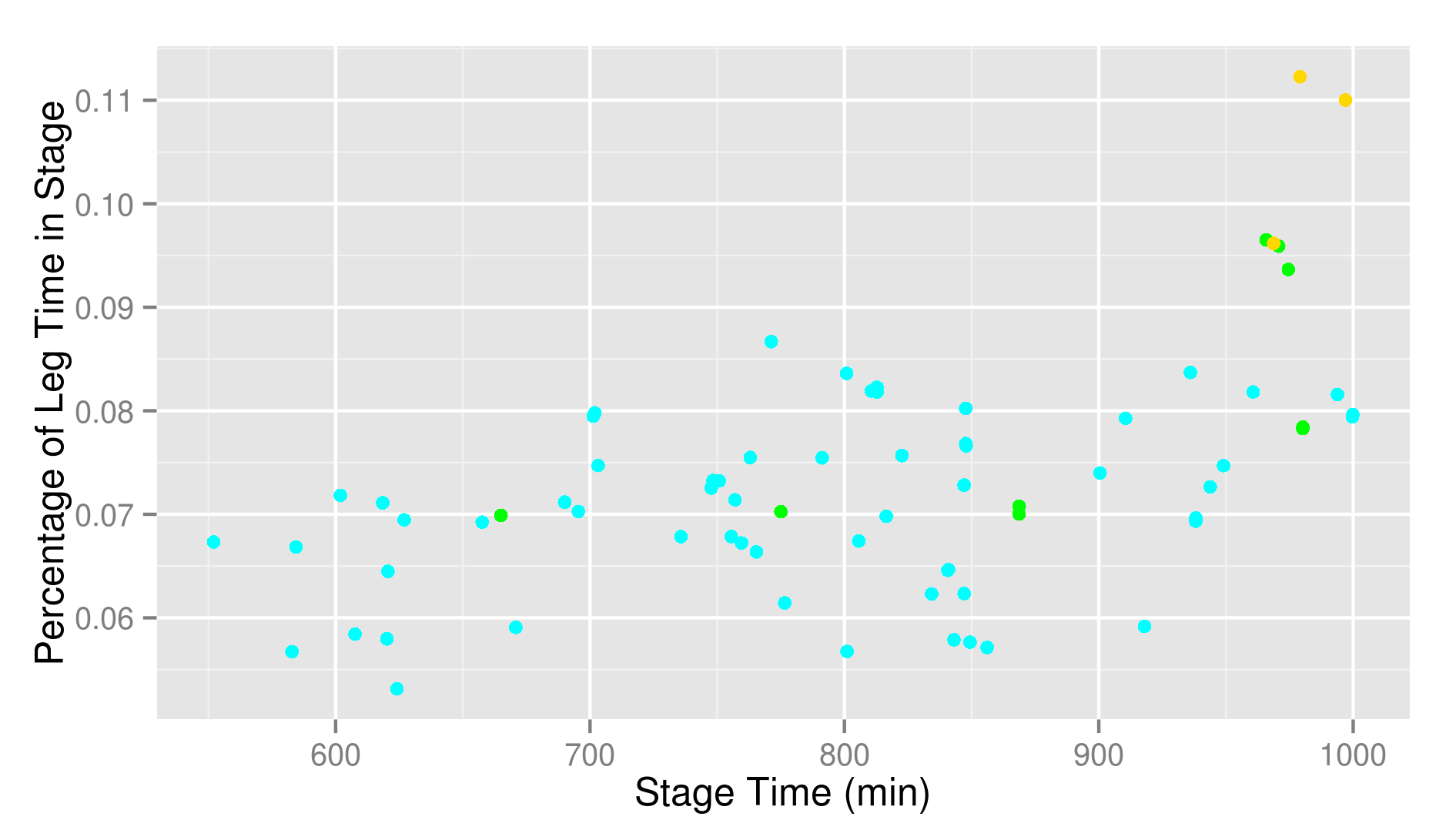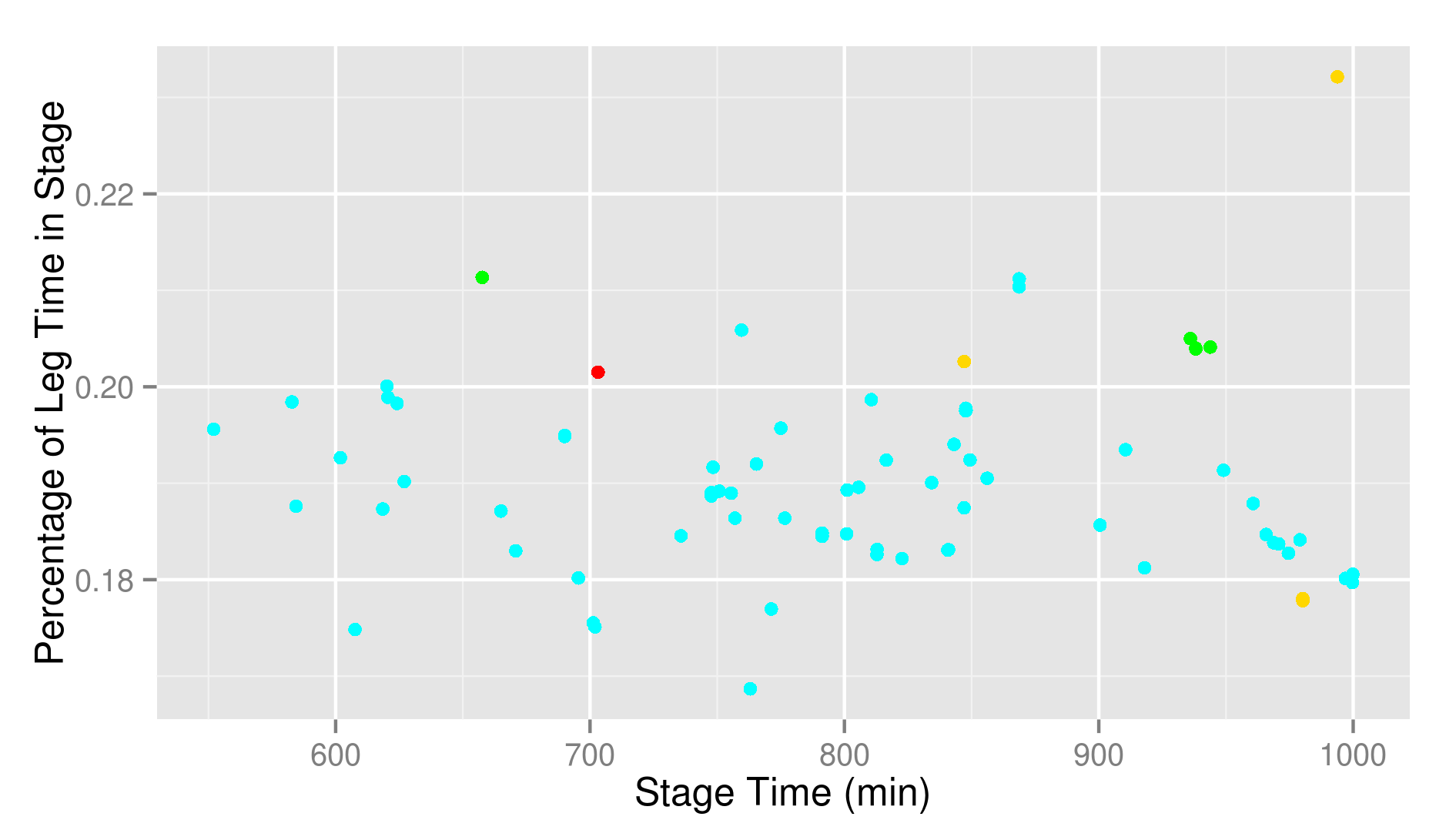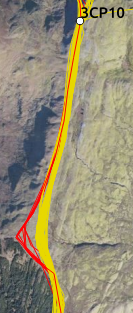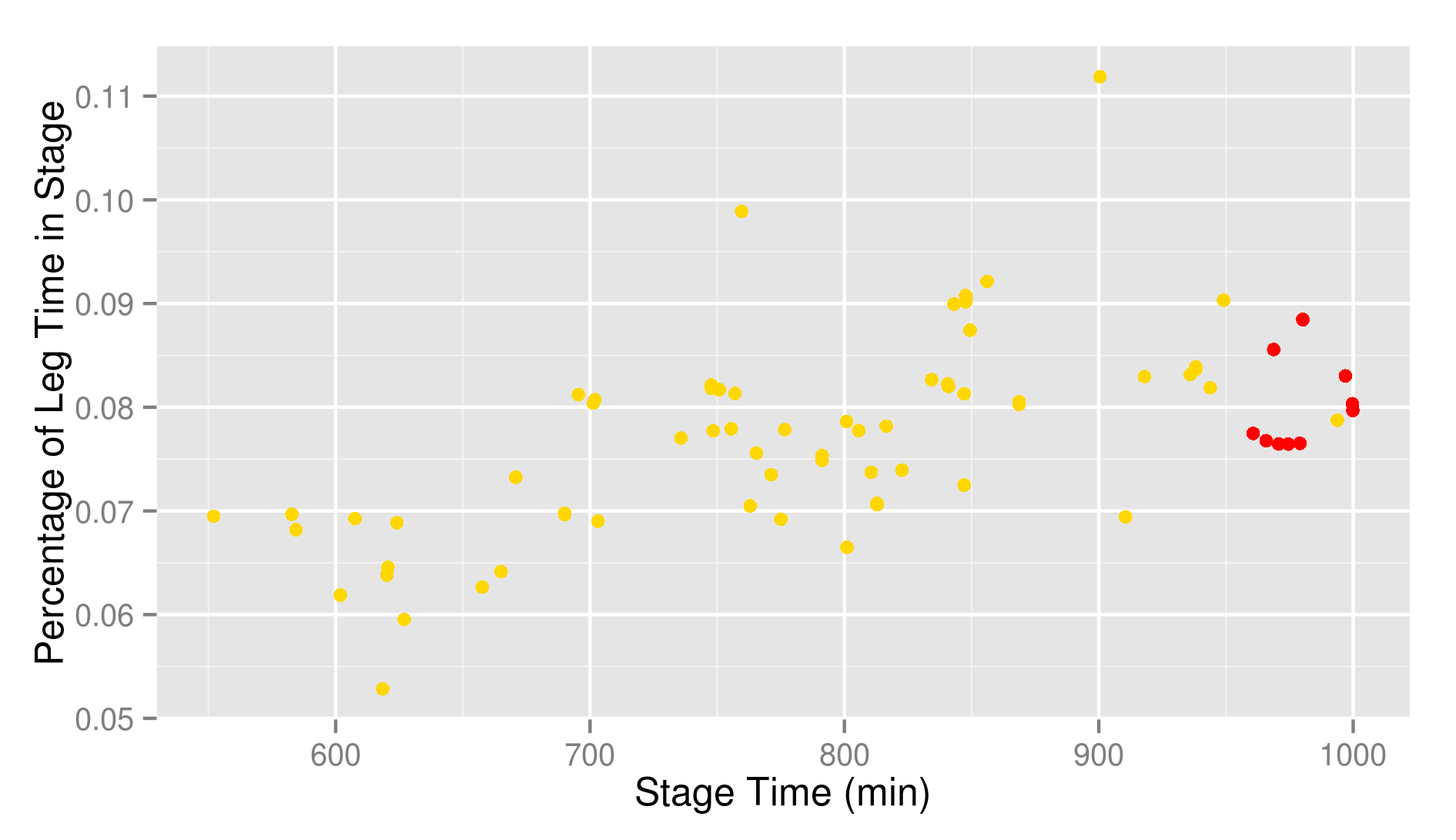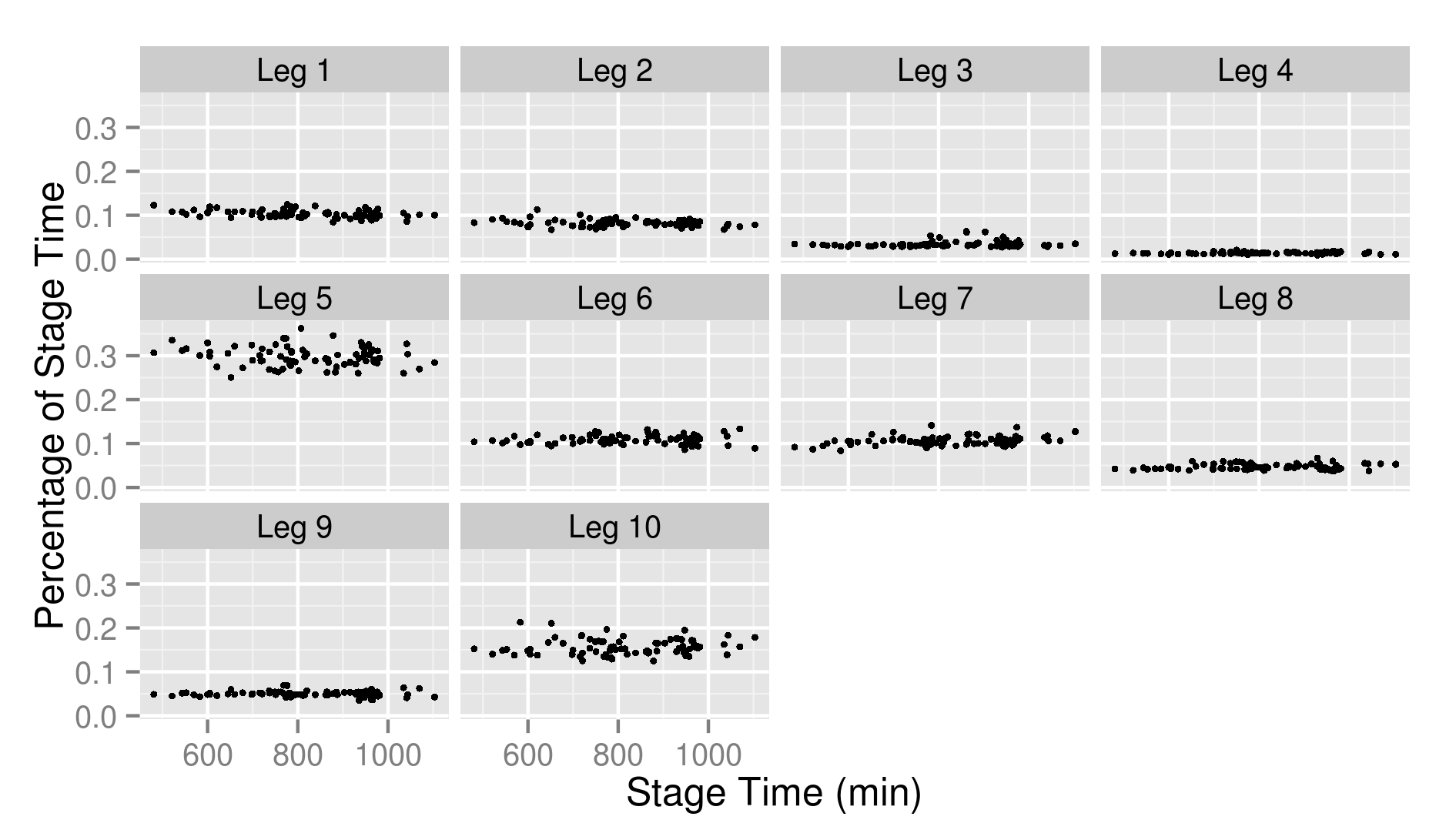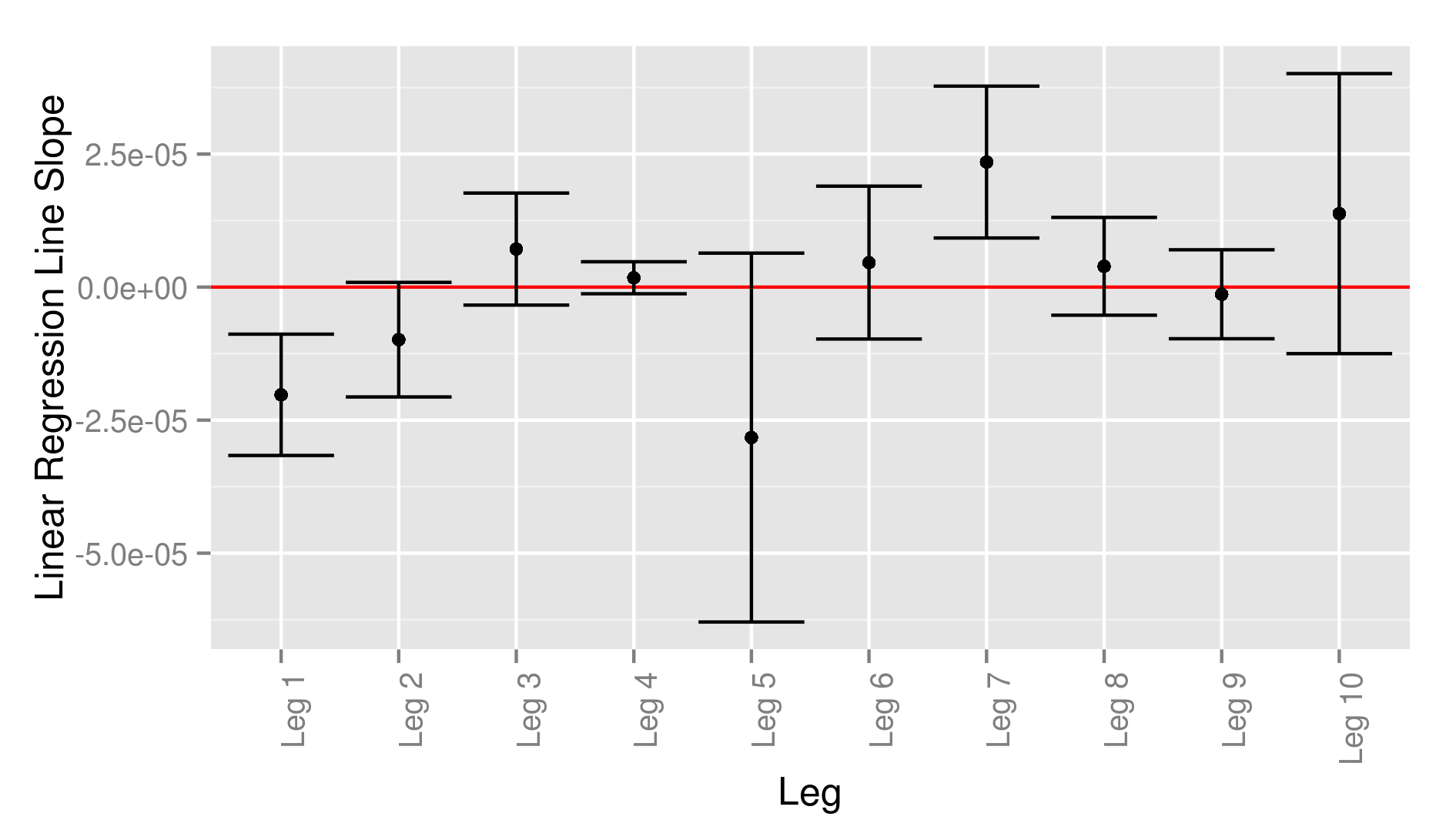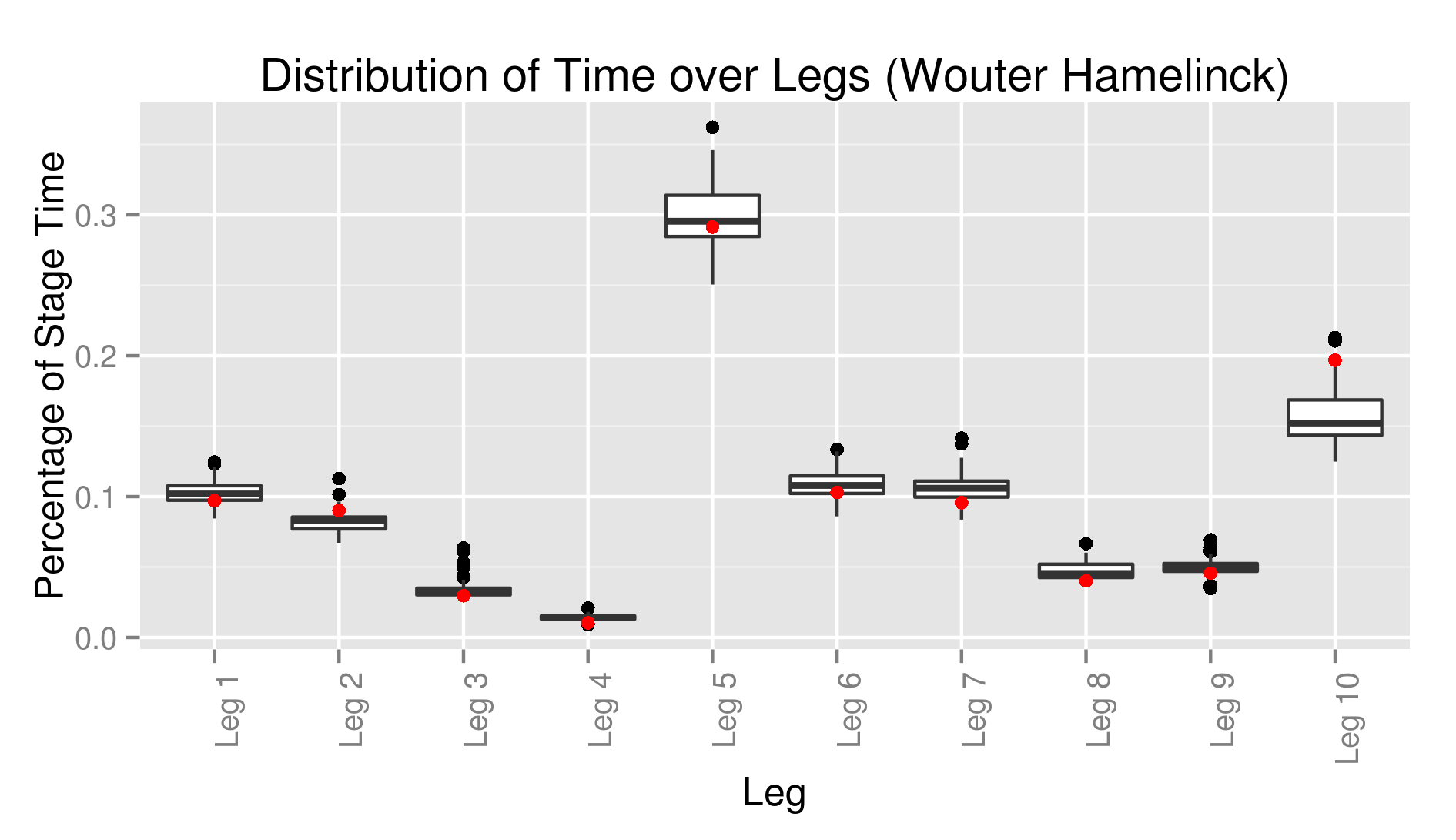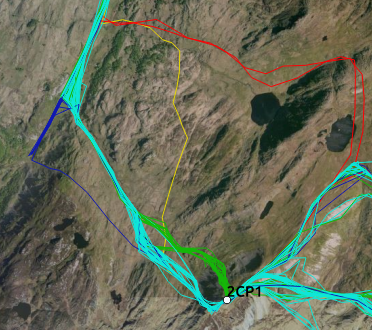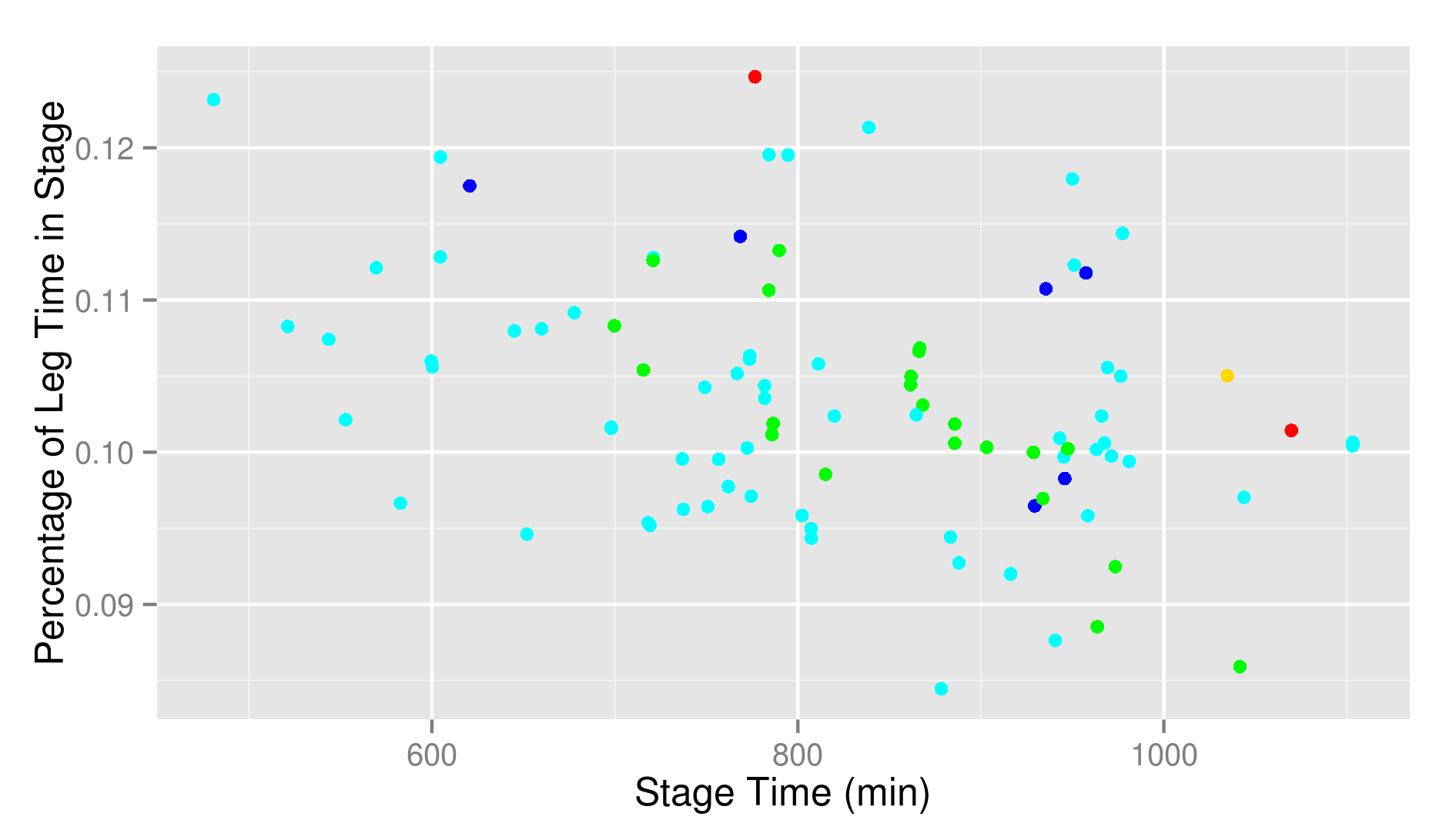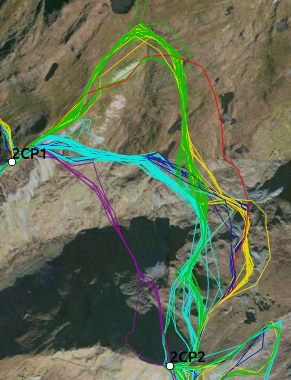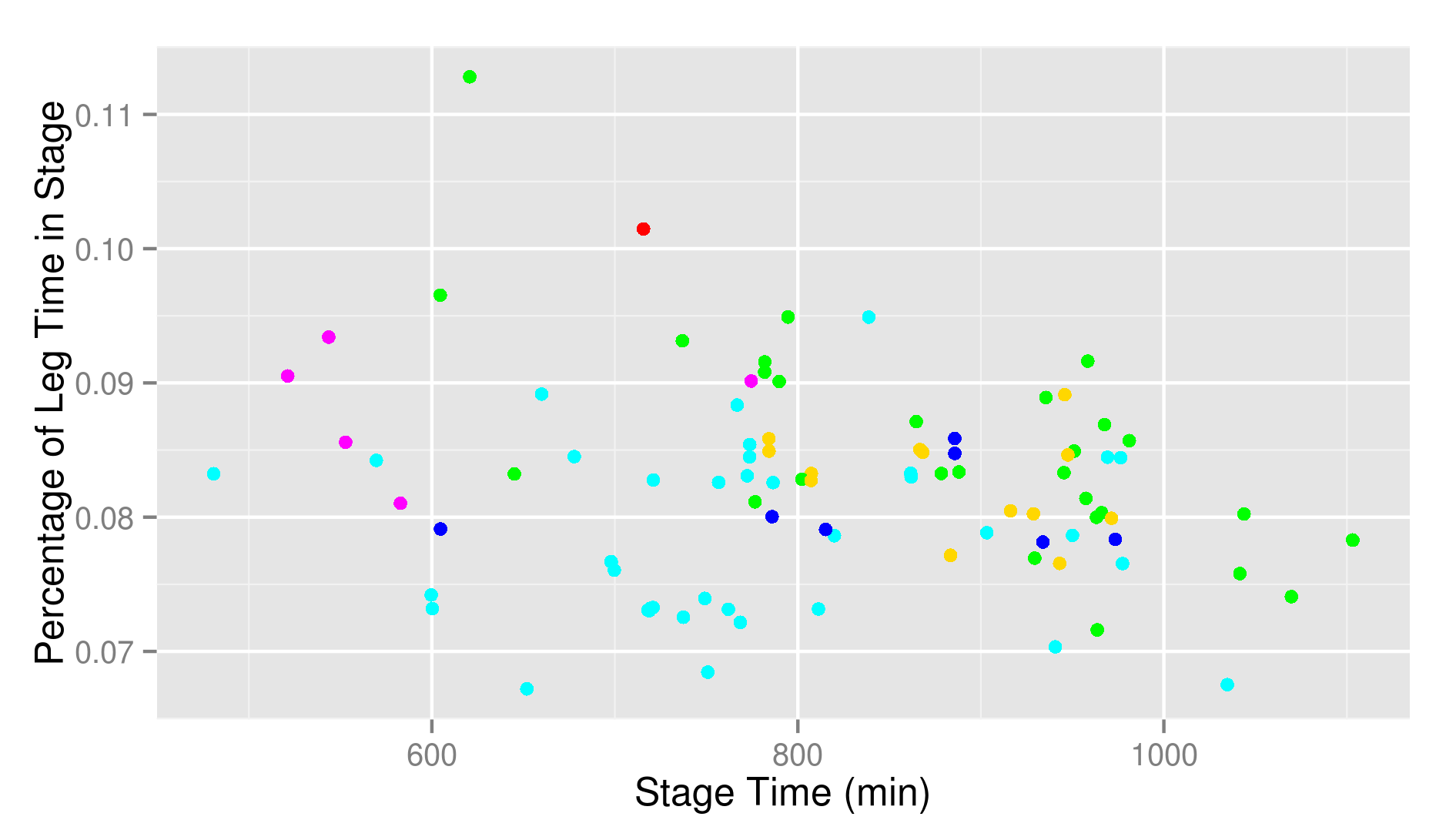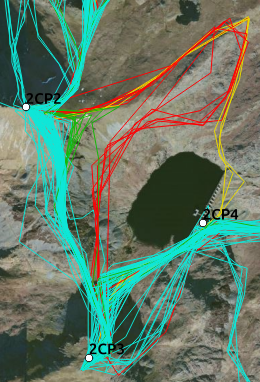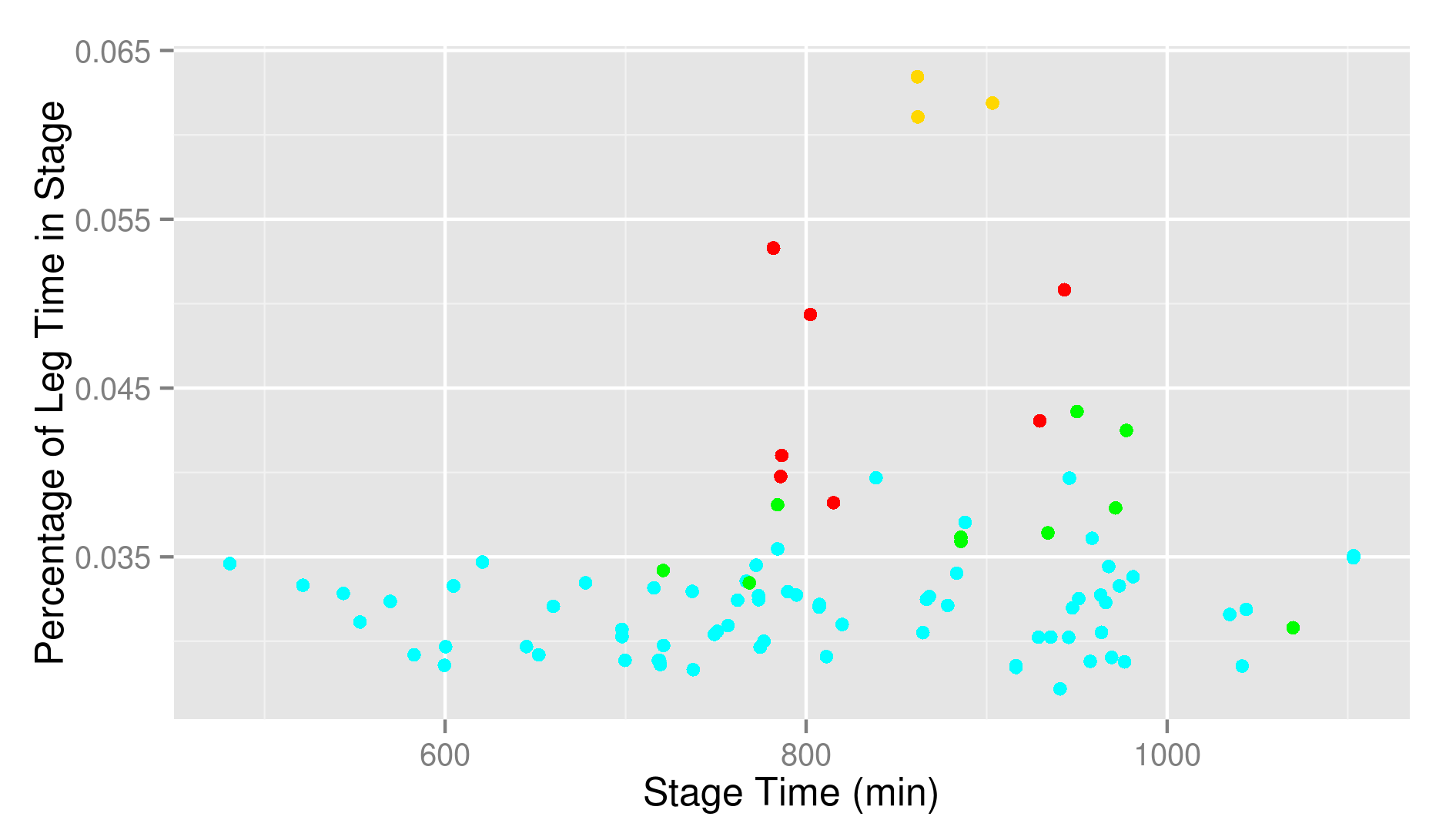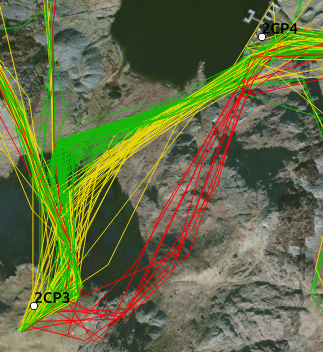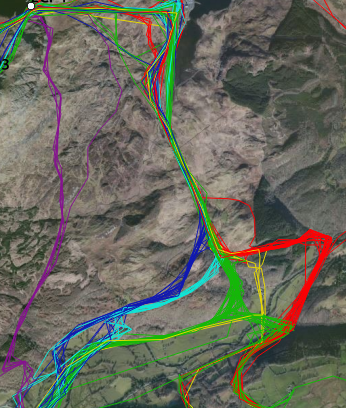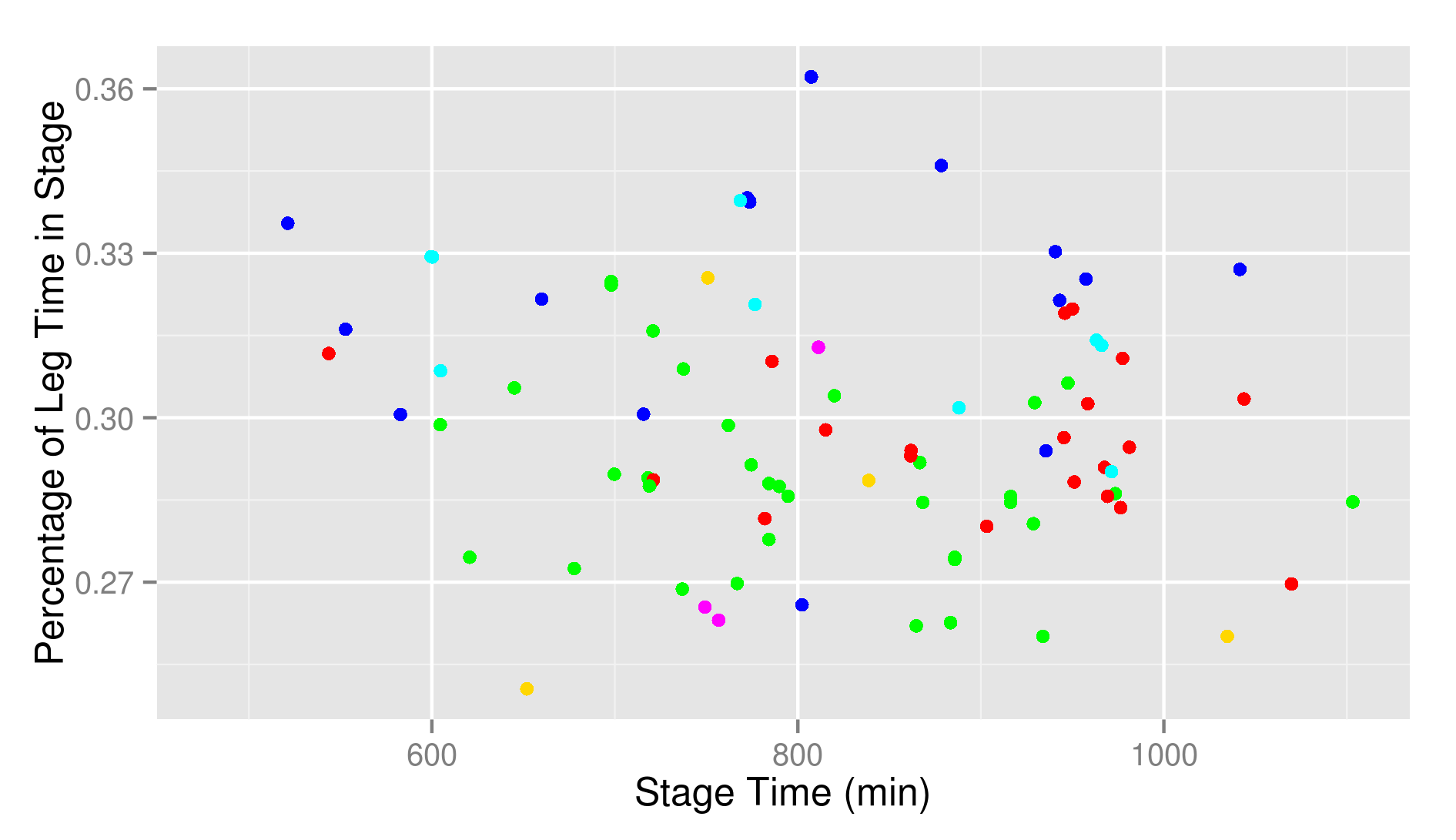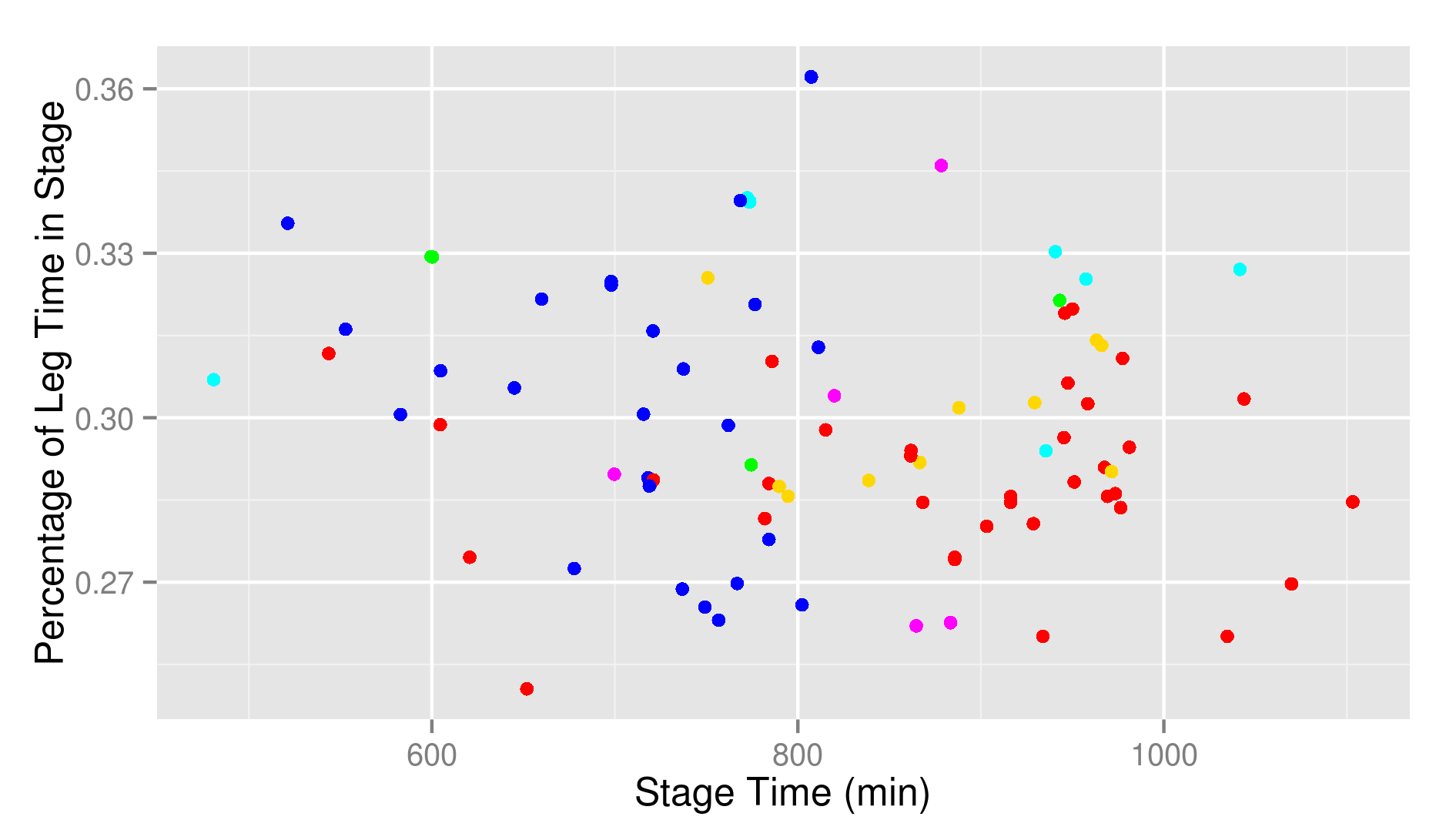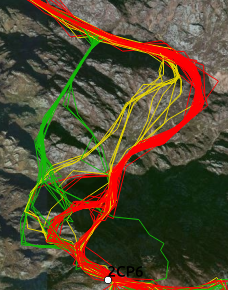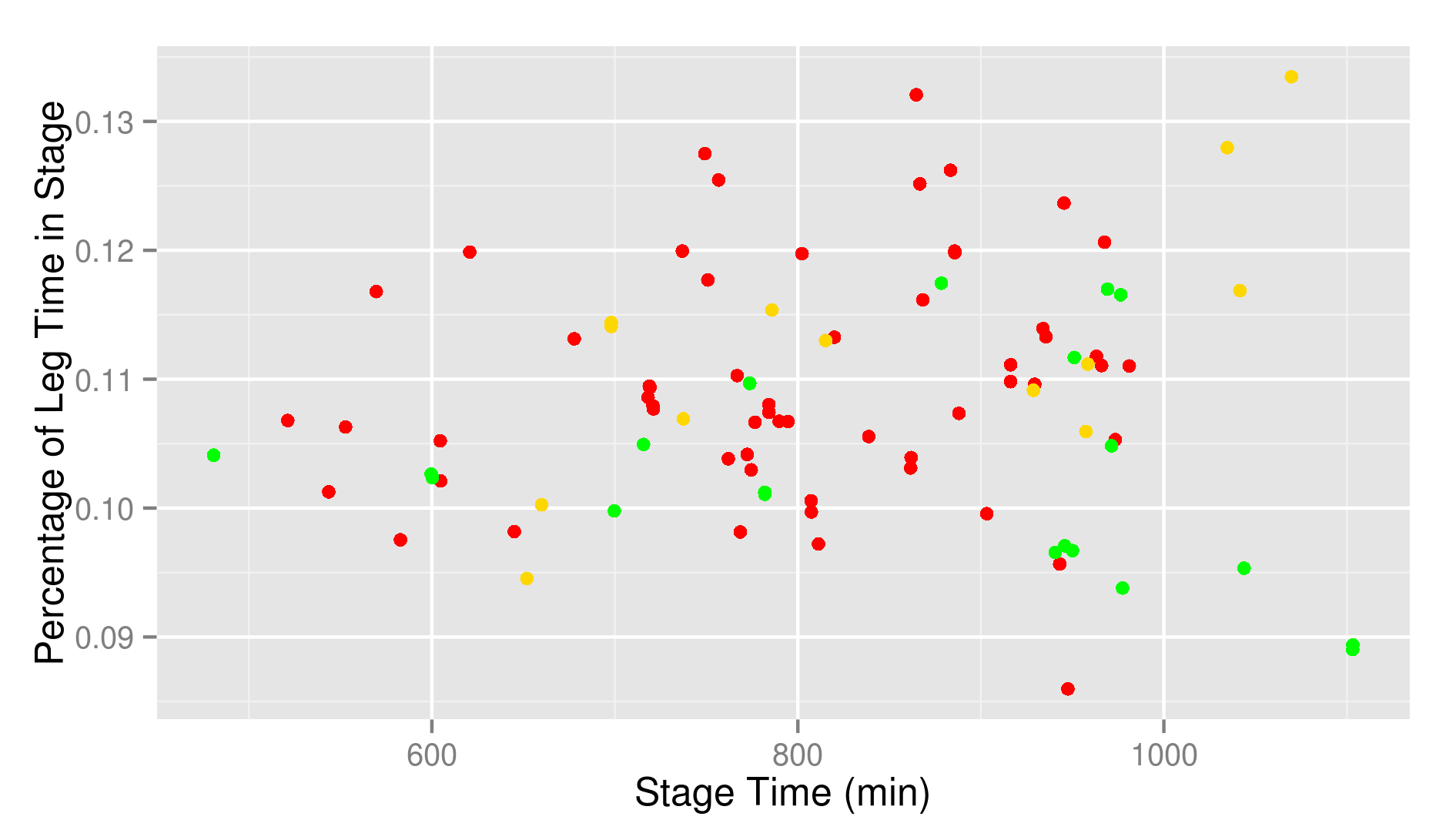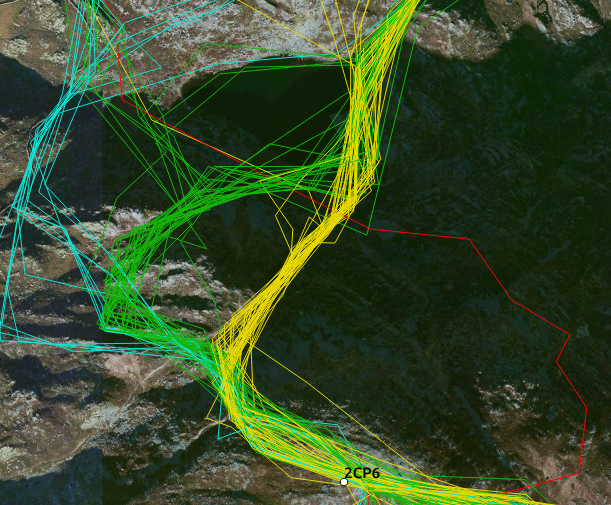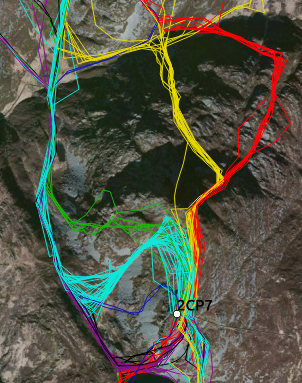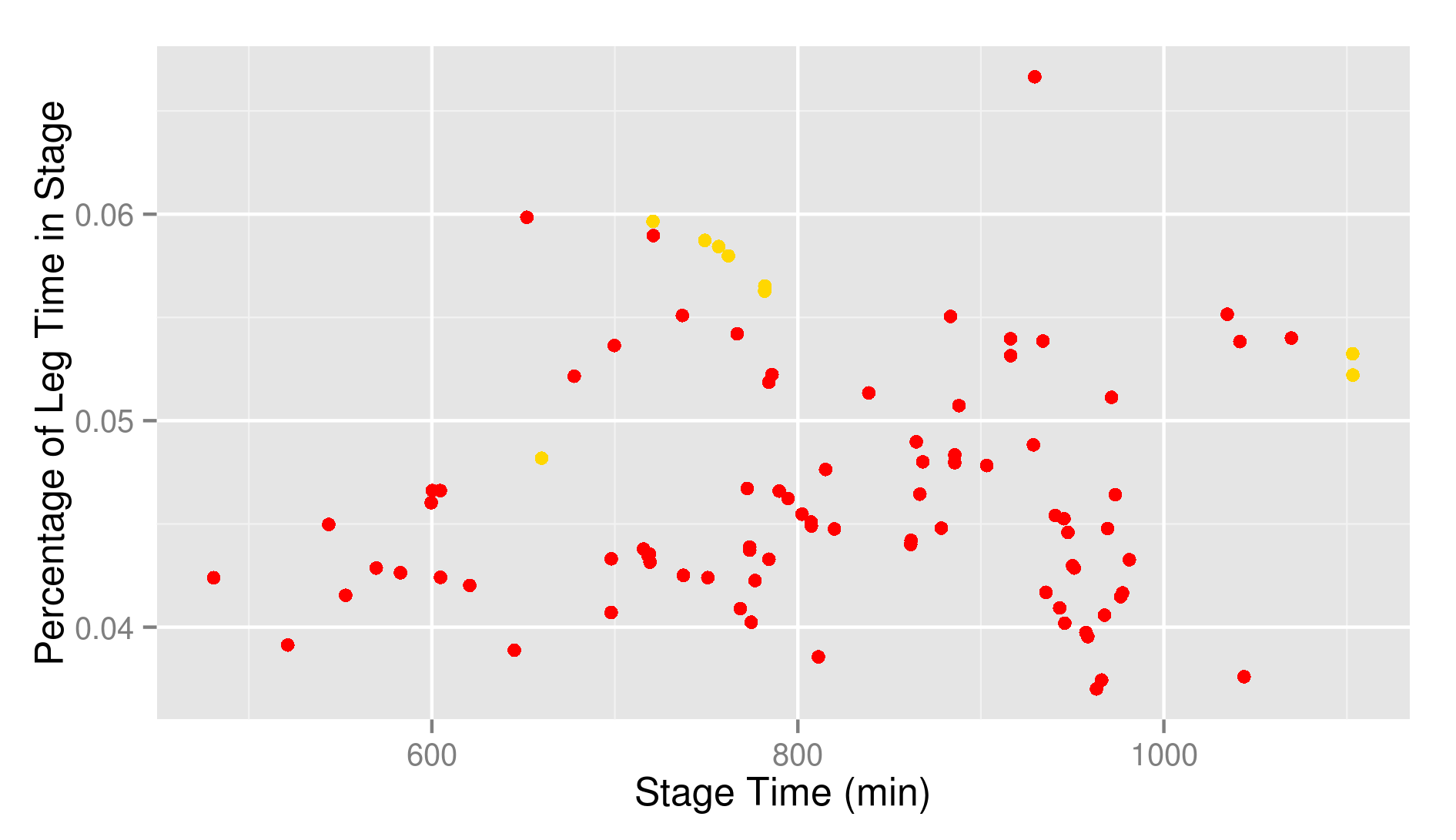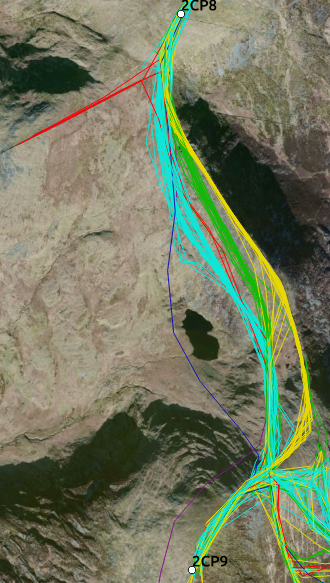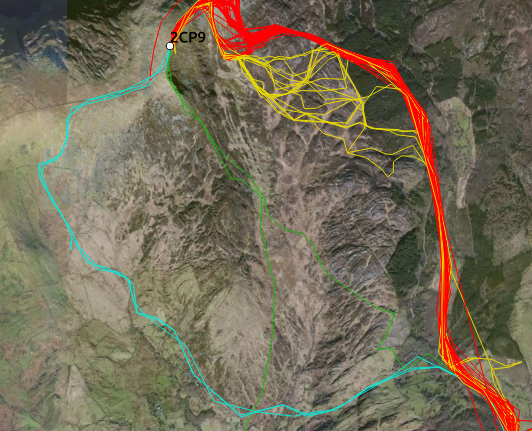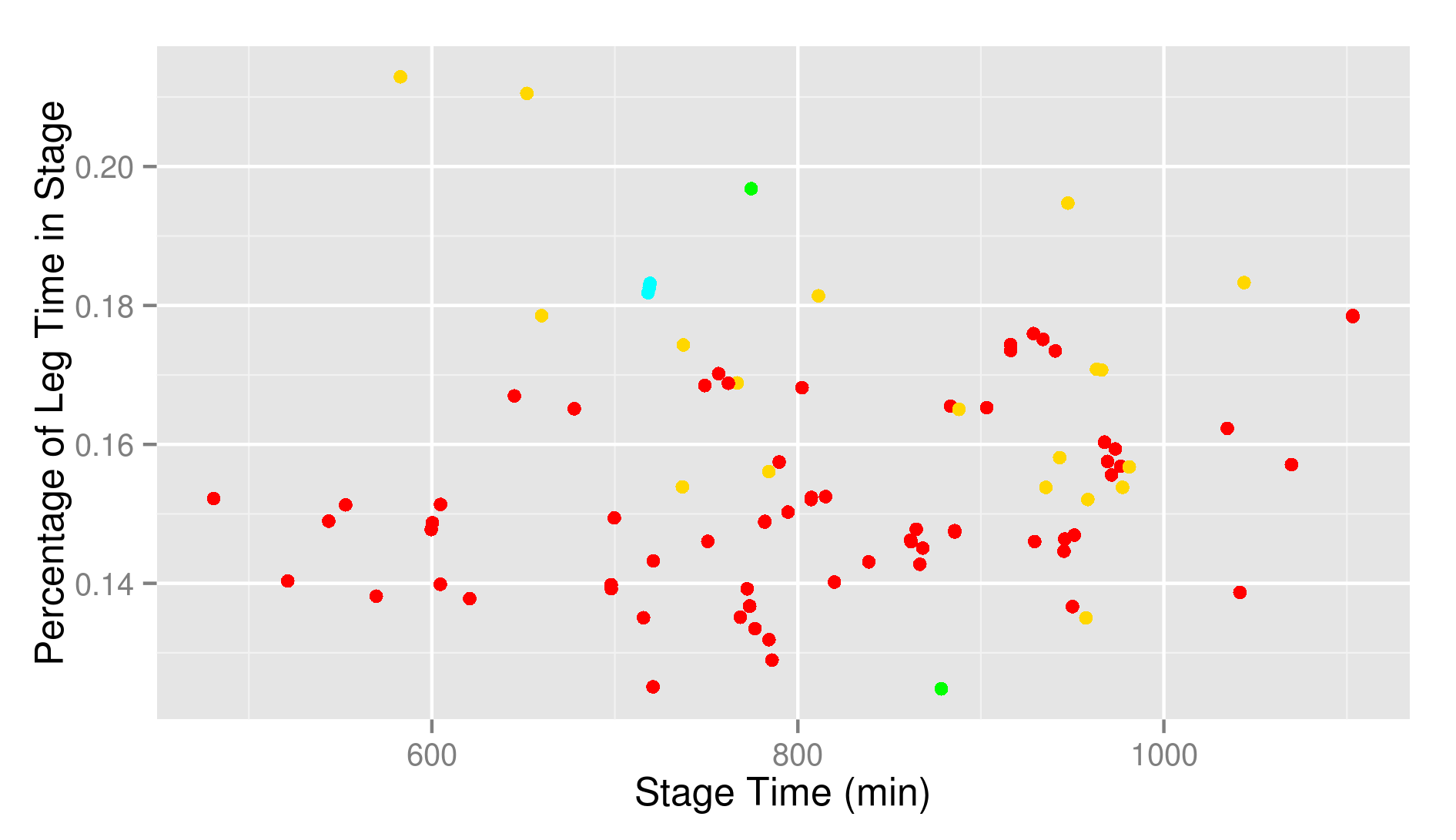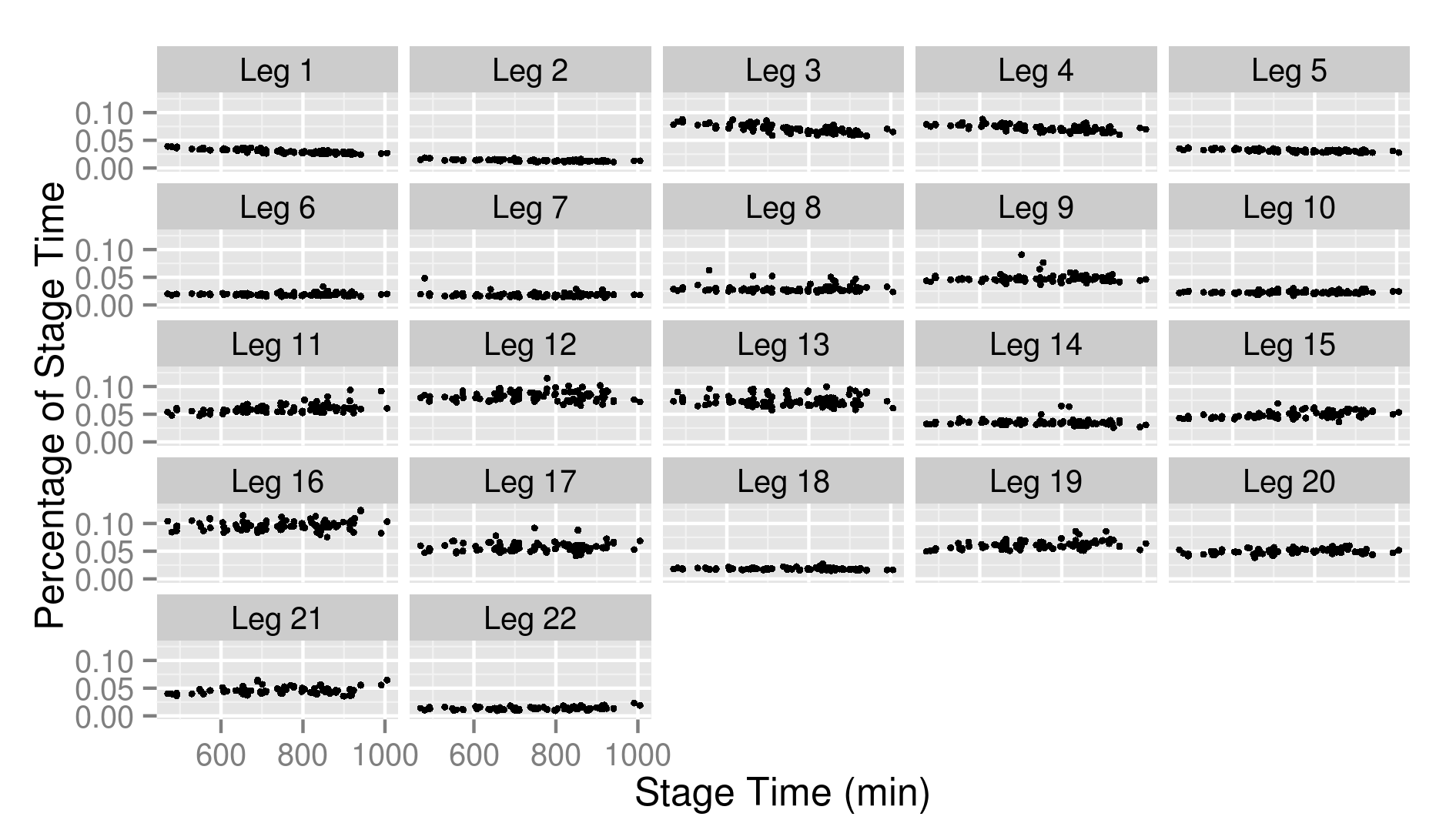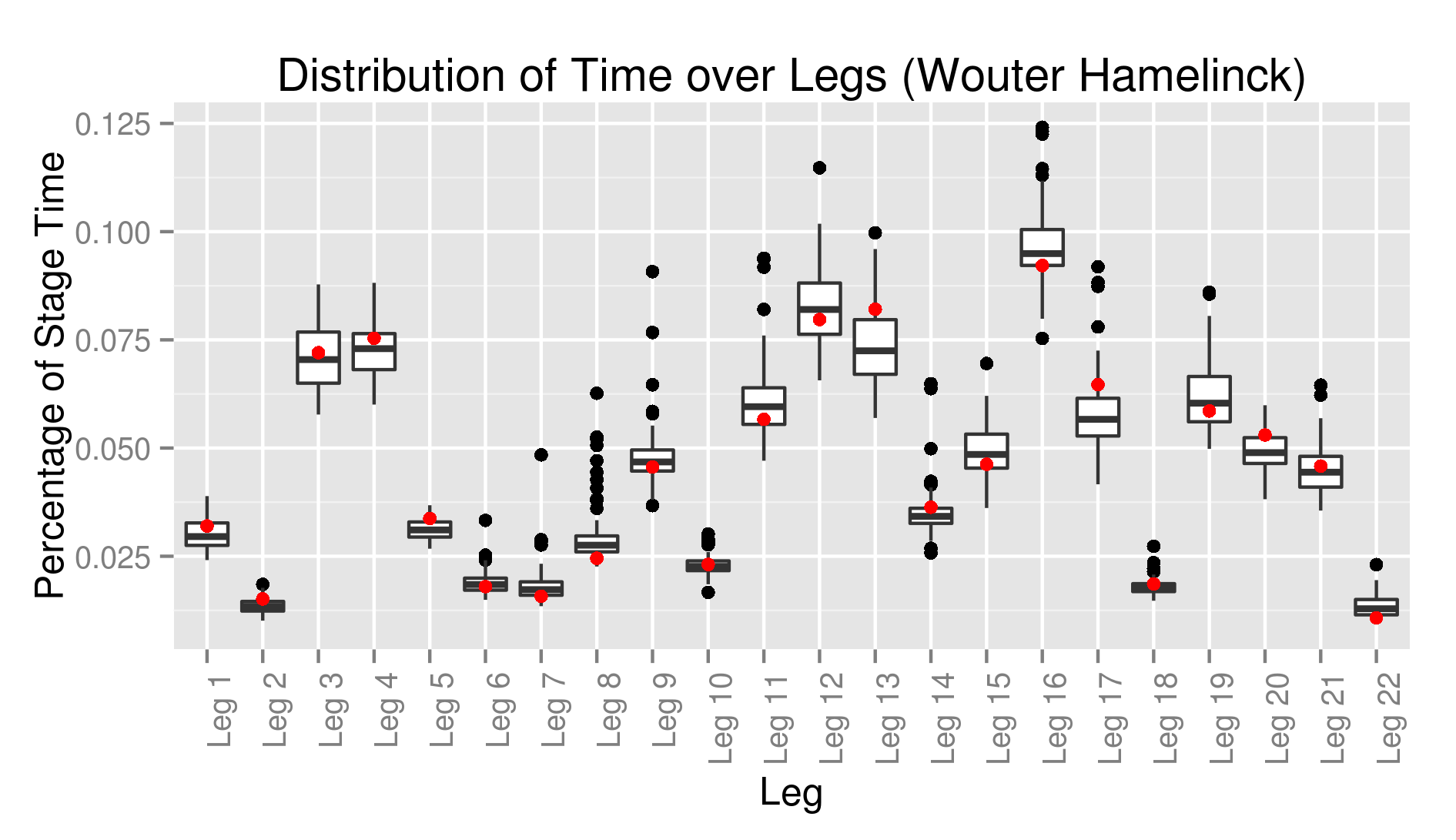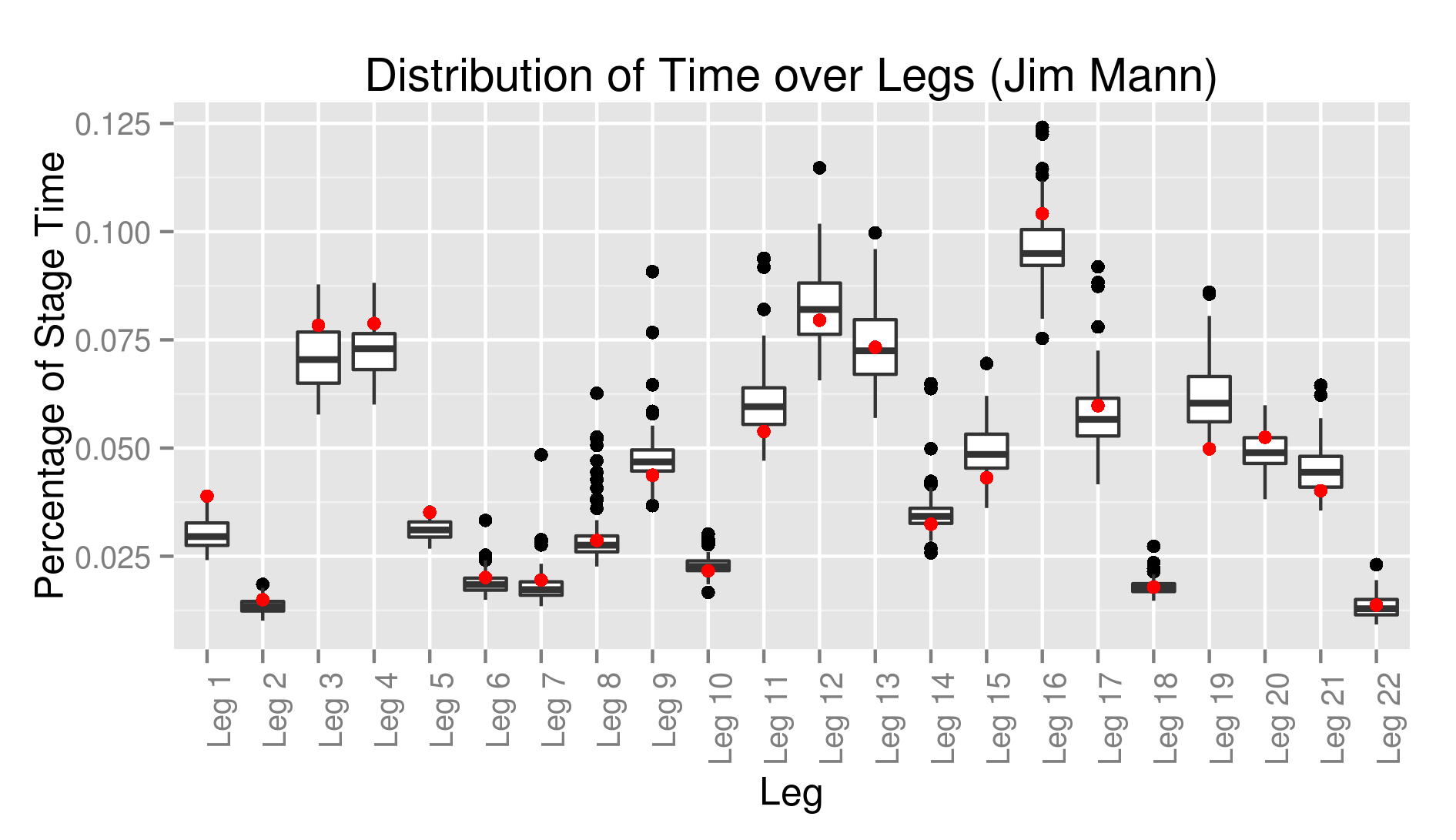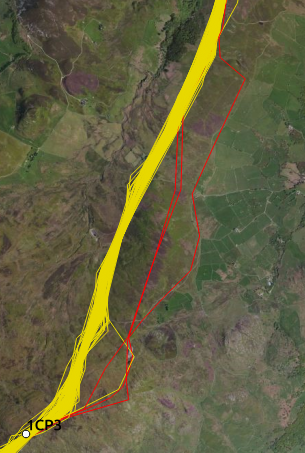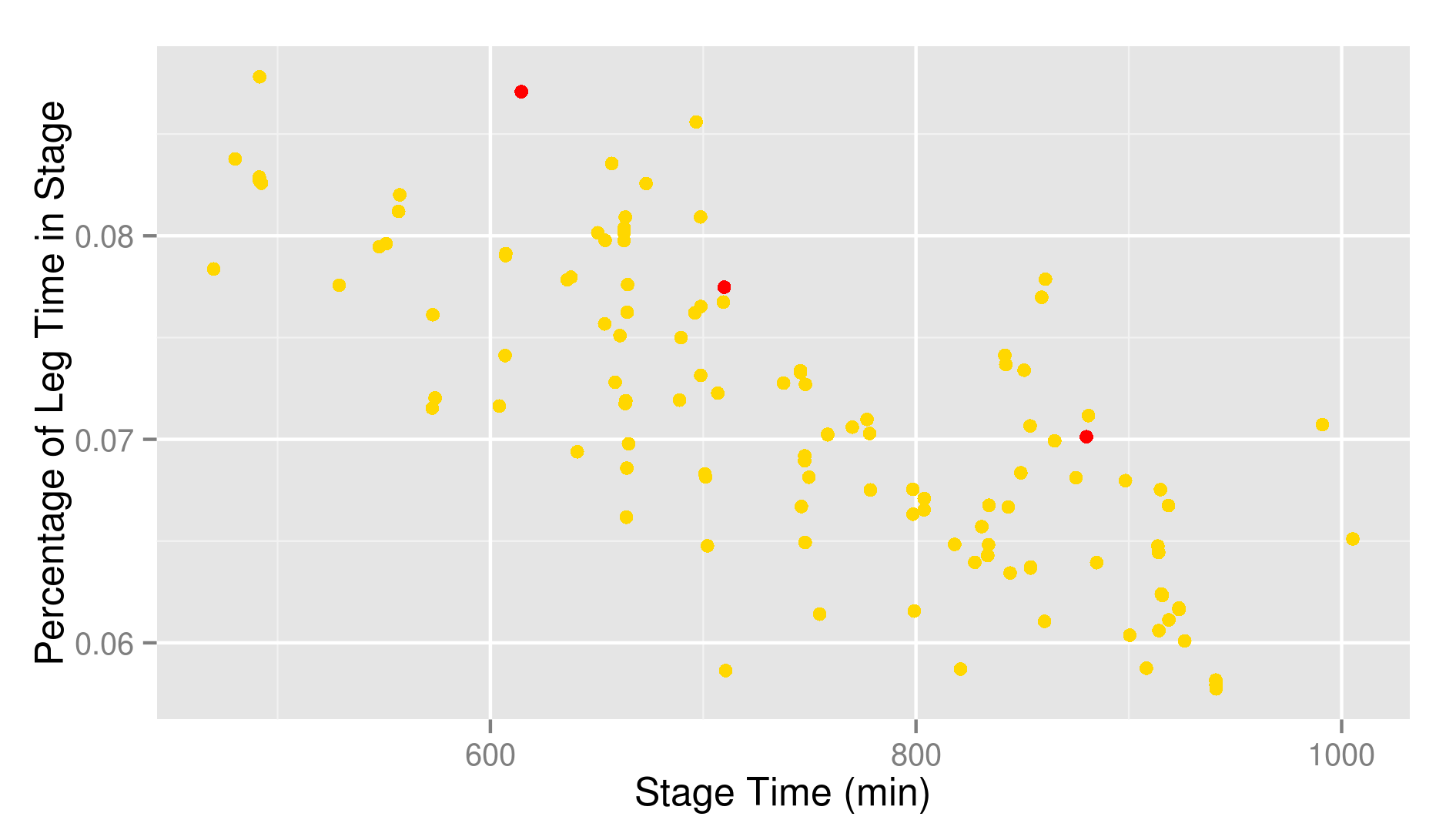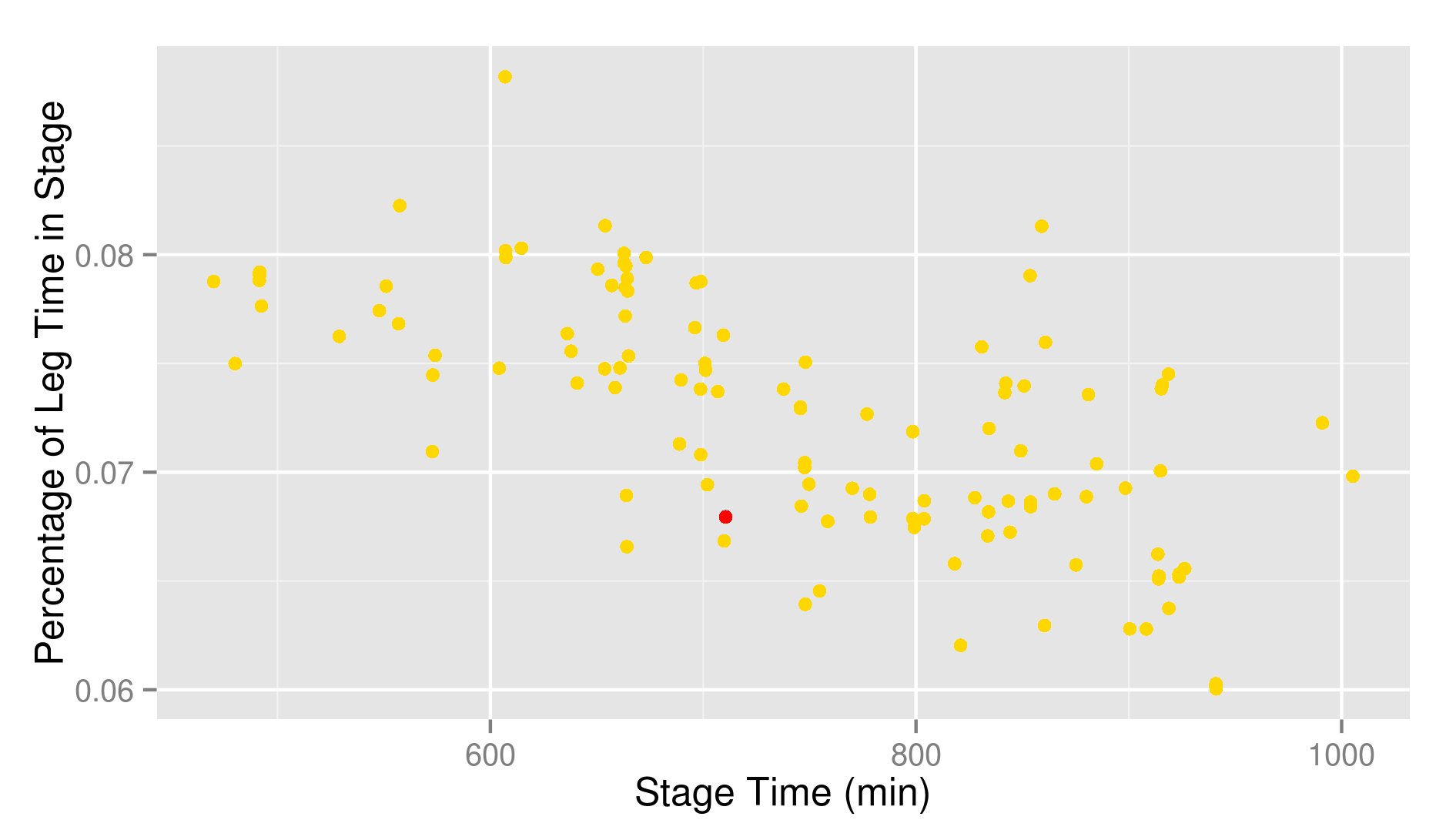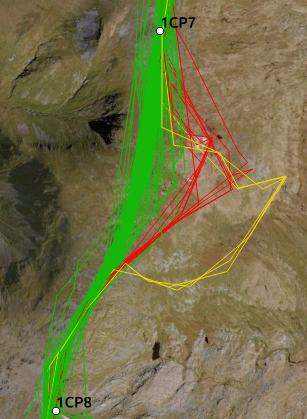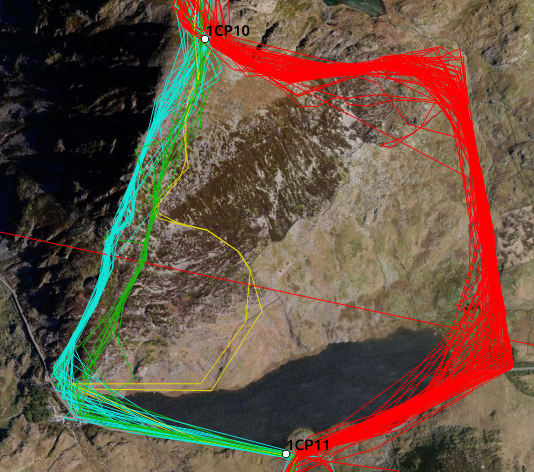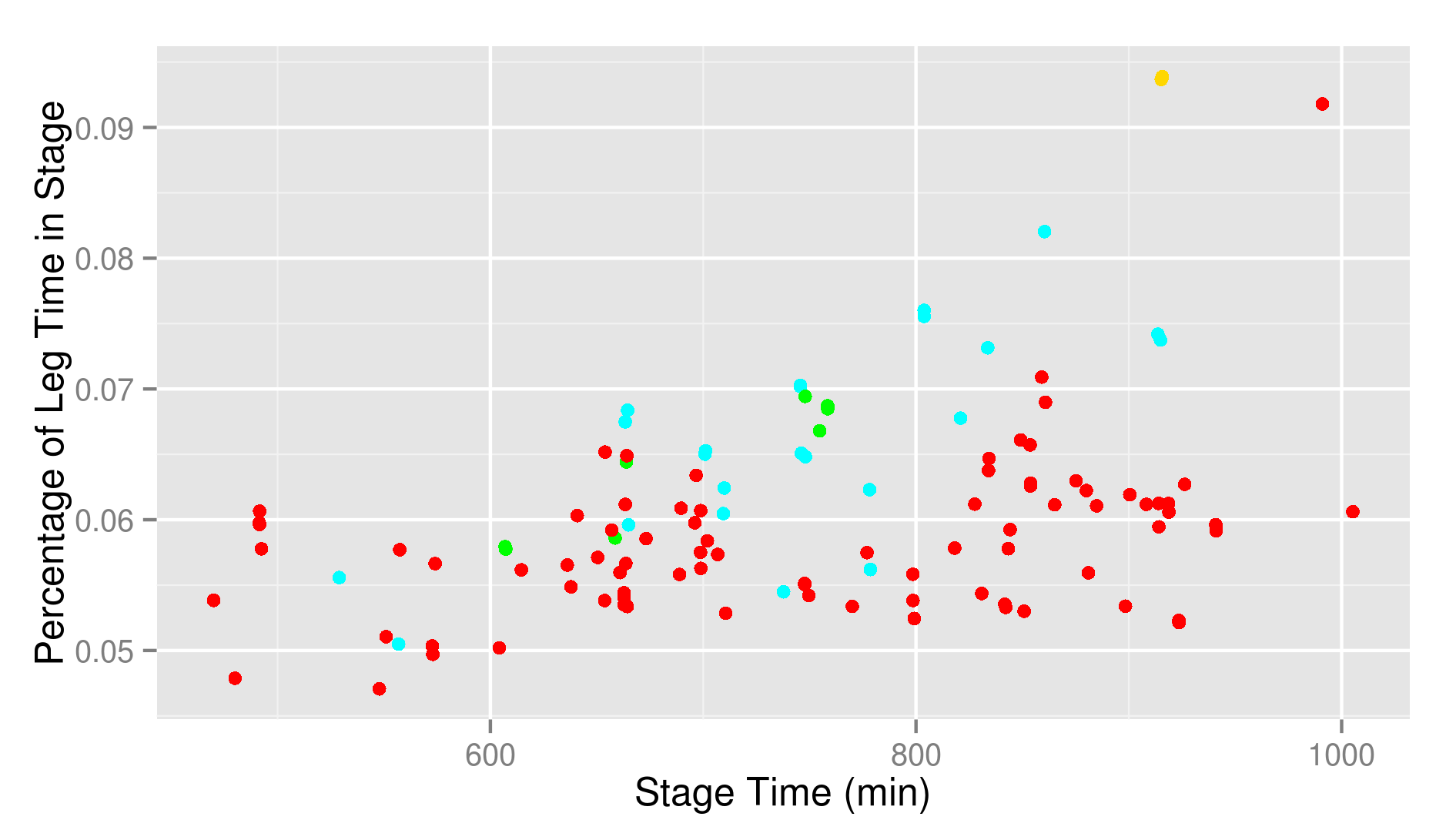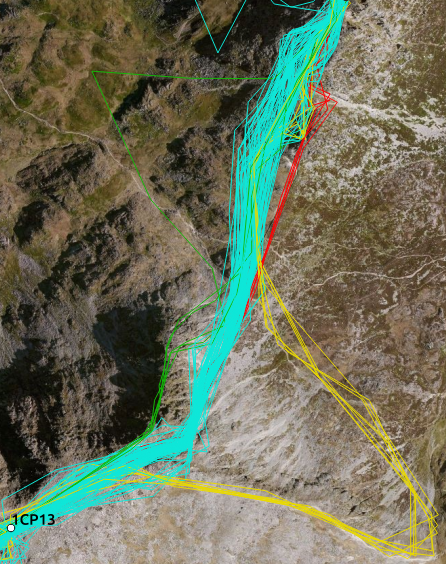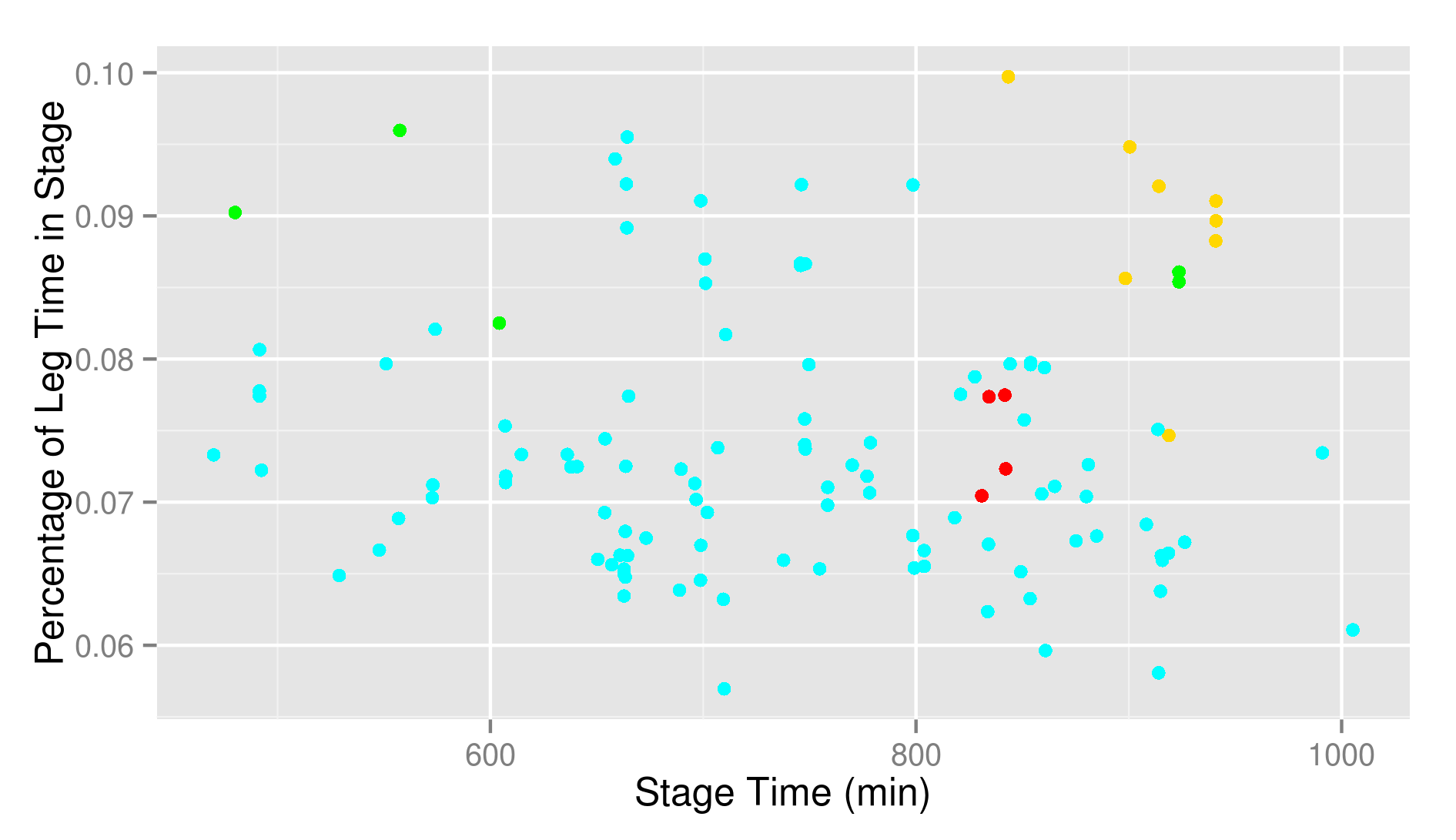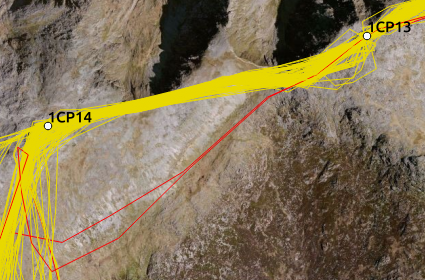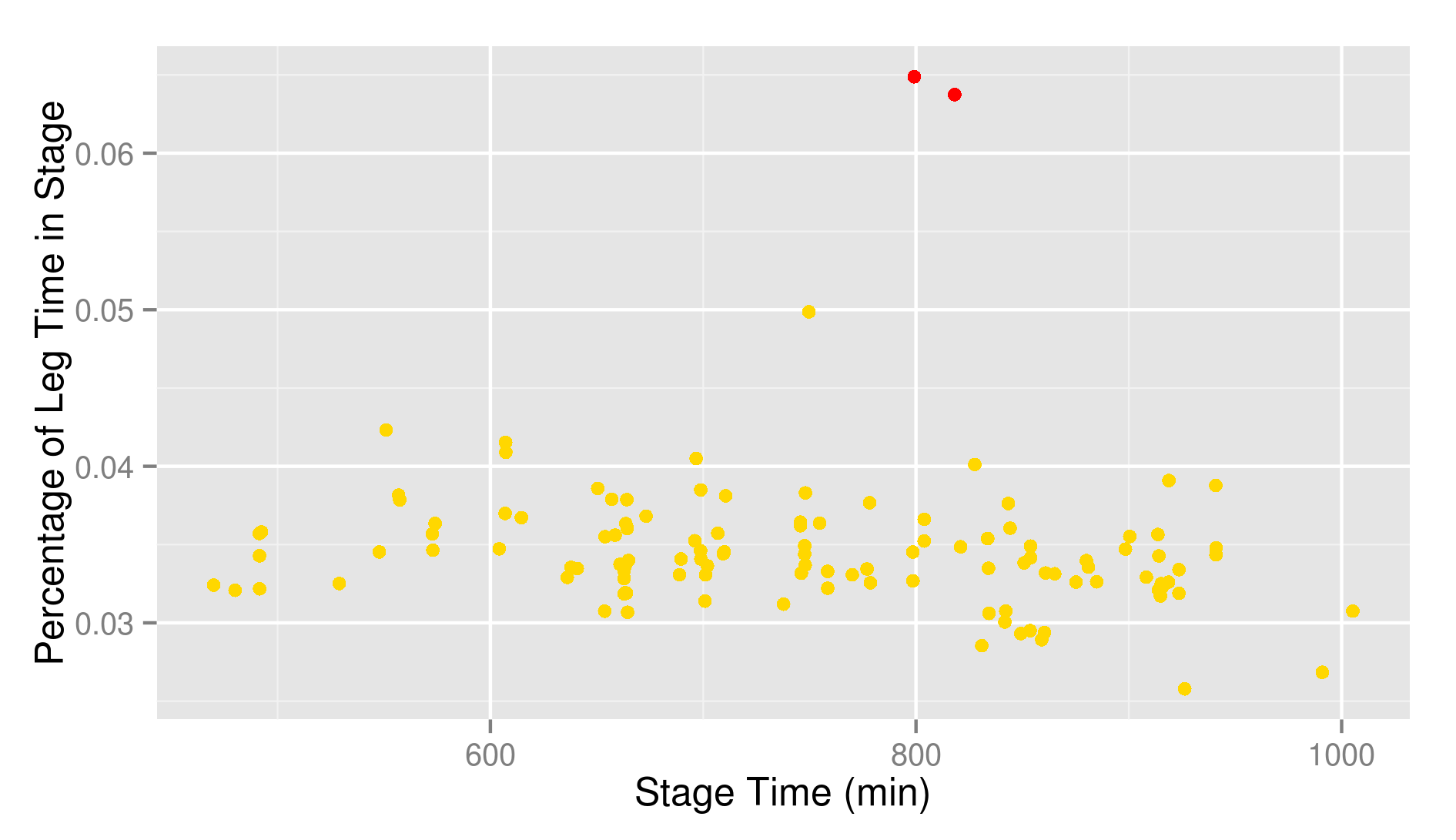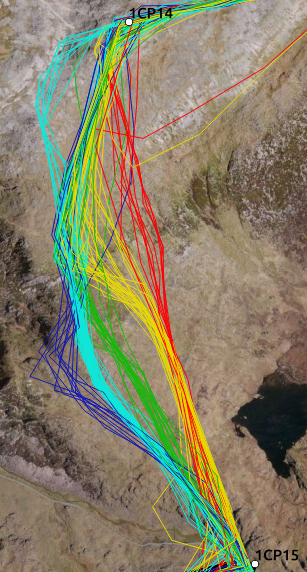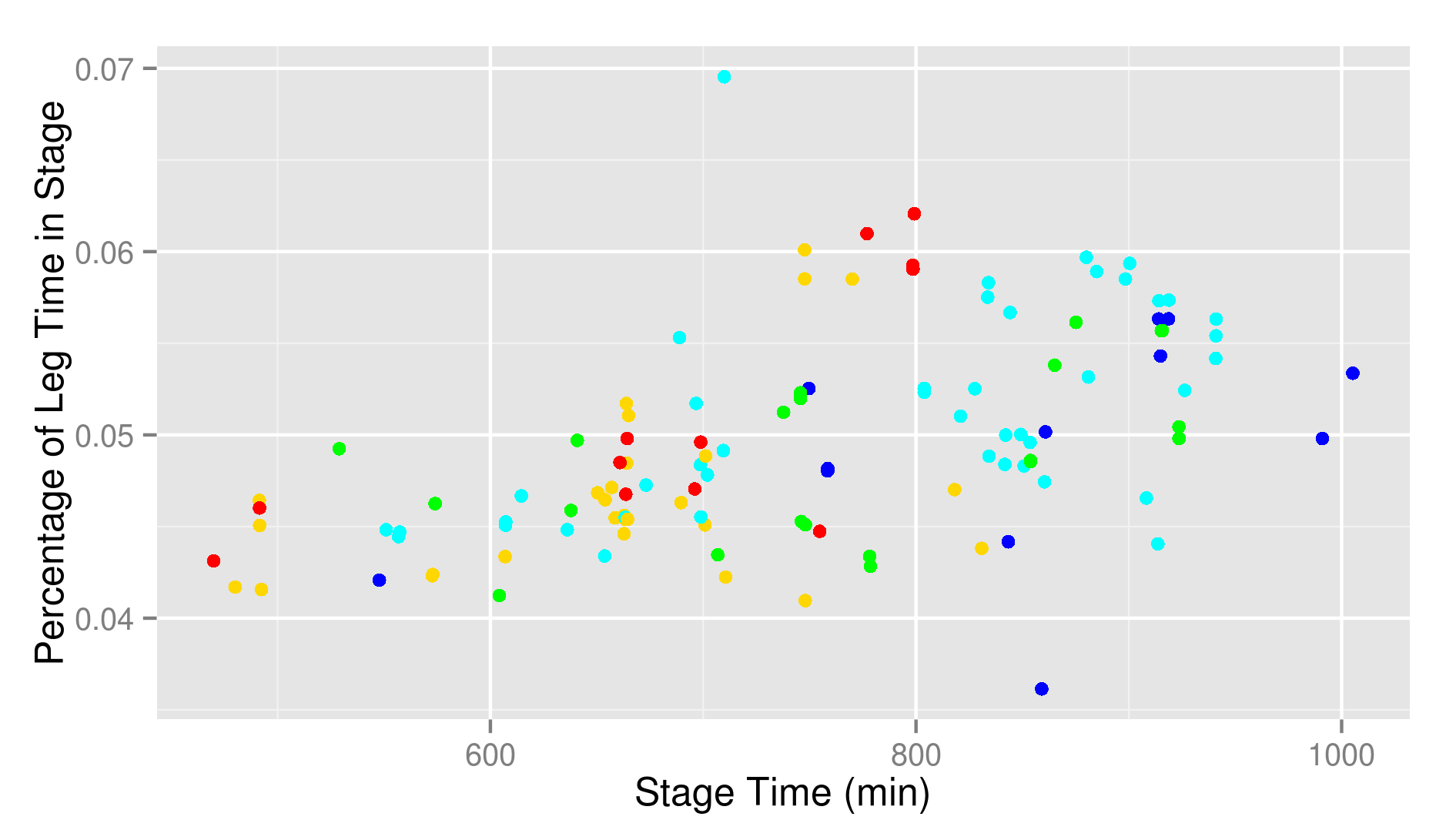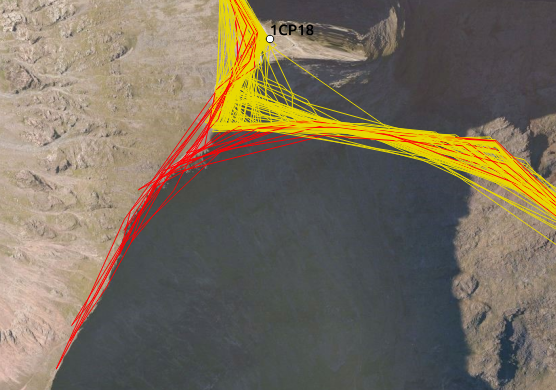Aan het begin van juni trok ik eerst even naar Zwitserland. Zolang er nog nachttreinen zijn moet ik die toch gebruiken. Aan het einde van het jaar gaat de DB jammer genoeg al zijn nachttreinen afschaffen. Met een van die nachttreinen geraak je helemaal tot in Zürich. Van daar ging het nog verder richting Sankt Gallen waar ik met Siebrig eens de Toggenburger Höhenweg zou gaan lopen. Die doorkruist een ferm stuk van het kanton van Wil naar Wildhaus. Wij kozen voor een lage start in Wil. In eerste instantie loop je daar hoofdzakelijk over brede bospaden. Het hoogtepunt van dat eerste stuk is zonder enige twijfel een mooie hoge waterval waar je helemaal achter door kan.
In de namiddag kwamen we dan hoger en hoger en werden de uitzichten talrijker en spectaculairder. De hele dag lang hingen wolken dreigend aan de hemel. Tegen de avond was ons geluk dan toch op en kregen we een ferme regenbui over ons heen. Gelukkig zaten we toen in het bos zodat we ze niet al te hard gevoeld hebben. Het resultaat was wel dat de paden interessant glibberig waren. Bij het laatste daglicht gingen we op zoek naar een plaatsje voor de tent en vonden dat aan de rand van een bos. We stonden er droog, wat verborgen van het pad en hadden een prachtig uitzicht. Meer hebben we echt niet nodig.
De volgende ochtend vatten we dan het hoge stuk van de Toggeburger Höhenweg aan. We kwamen er achter dat zelfs op lage hoogte nog behoorlijk wat sneeuw lag. Vanaf 1600 meter hoogte waren er nog talrijke sneeuwplekken. Verschillende waren ook behoorlijk groot en regelmatig moesten we een volledig besneeuwde kom door. Het grootste deel van de tijd was dat geen enkel probleem maar er zat toch een spannend stukje in. Het sneeuwveld was er erg stijl, nog erg hard en een val zou ongetwijfeld fataal geweest zijn. We zijn zo verstandig geweest om daar niet te vallen of uit te glijden.
Na al de hoge stukken was het dan gewoon dalen naar de vallei om terug te keren. Met een hele reeks bussen en treinen met nipte aansluitingen die alleen in Zwitserland als realistische optie beschouwd worden geraakten we in Baar. Daar was Erika zo lief om ons wat te voederen. Daarmee zat het weekend erop en was het voor mij tijd om de nachttrein terug naar huis te nemen.
Twee weken later ging ik wat verder naar het zuiden en vloog voor de derde keer dit jaar naar Italië. Deze keer was Bologna de bestemming. Met de trein sta je van daar erg vlot in de Apennijnen, waar ik redelijk op goed geluk wat begon rond te lopen. Uiteindelijk werd het met wat omwegen een route van San Benedetto naar Porretta Terme.
De Apennijnen zijn daar niet erg hoog zodat de bergen bijna volledige bebost zijn. Daarmee heb je natuurlijk iets minder uitzichten, maar anderzijds zorgt dat er ook voor dat je in de schaduw loopt. Daarmee blijven de temperaturen ook wat draaglijk. Ik had er op voorhand niet echt bij stil gestaan dat zo ver zuidelijk het kwik midden juni al behoorlijk kan oplopen.
Direct bij aankomst was duidelijk dat ik in warmere gebieden terecht was gekomen. De eerste nacht sliep ik omringd door vuurvliegjes. Rond mij lichtten de struiken voortdurend op. Een heel verschil met de paar verspreide lichtjes die je ziet als er bij ons ergens vuurvliegjes zitten.
De kwaliteit van de paden is in dit gebied dan weer Italiaans. Meestal zijn ze erg mooi, maar de markeringen zijn niet altijd evident. Je moet er een beetje geluk mee hebben. Op de stukken waar redelijk wat volk komt is er geen enkel probleem. De stukken die minder begaan zijn kunnen dan weer behoorlijk overwoekerd geraken. Het is niet altijd simpel om er een weg doorheen te banen en dan nog eens op het pad te blijven. Ik ben in elk geval een paar keer behoorlijk het noorden kwijt geraakt.
Helemaal aan het einde van de maand trok ik dan nog eens naar Frankrijk voor een wedstrijd. Samen met Renaud ging ik in de Beaufortain de Pierra Menta lopen. Dat is een wedstrijd in drie etappes waarbij je in ploegen van twee loopt. Die twee moeten de hele tijd samen lopen. In totaal is de afstand ongeveer zeventig kilometer, wat zeker en vast haalbaar is. Op die afstand moeten in totaal 7000 positieve hoogtemeters (en evenveel negatieve) overwonnen worden. Dat is toch een respectabel aantal.
De eerste etappe startten we behoorlijk voortvarend. Met mijn achillespeesproblemen van de laatste tijd bleek dat toch wat optimistisch. Ik ben gewoon totaal ondertraind en in de eerste beklimming blies ik de motor helemaal op. In combinatie met een warme dag zou ik er de hele etappe niet meer van herstellen. Het wedstrijdverloop voor ons was dus dat ik steeds meer terrein verloor en Renaud aan elke checkpoint op mij stond te wachten over verder te kunnen gaan.
Het parcours van die etappe was zeker wel de moeite. In essentie ga je twee keer recht omhoog en daarna terug recht omlaag.
De start van de tweede etappe was nog veel dramatischer. Na de eerste etappe liet mijn achillespees het volledig afweten en had ik moeite om te stappen. Bij de start van de tweede etappe was dat nog altijd zo. Lopen zat er al helemaal niet in. Met de moed der wanhoop begonnen we te stappen en al snel liep iedereen van ons weg. Naast ons wandelden twee mannen mee die de markeringen opruimden. Dan weet je dat je een probleem hebt.
Op een licht dalend stuk lukte het toch om wat te lopen waarna mijn pees genoeg opgewarmd was om zonder manken te kunnen stappen. Dat deden we dan ook in de volgende beklimming en haalden zelfs een paar ploegjes in. Groot nadeel van helemaal achteraan zitten is dat daar de files zitten. Bij een klein rotsje op het pad waar je even je handen moest gebruiken stonden we direct twintig minuten stil. De etappe bracht ons naar de top van de Grand Mont. Bijster origineel zijn de namen van de bergen daar niet. Om op die Grand Mont te geraken passeerden we over een aantal graten waar we met een via ferrata kit moesten gezekerd lopen. Naar mijn mening was dat behoorlijk overdreven. Ik heb al wedstrijden gelopen waar je dergelijke passages gewoon over loopt zonder dat er veel spel van gemaakt wordt. Het grote nadeel daarvan was vooral dat aan het eerste gezekerde stuk terug een gigantische file stond. We stonden er een half uur stil alvorens verder te kunnen. Als je een beetje wil doorlopen zor
g je duidelijk best dat je vooraan zit. Achteraan is al het wachten echt niet leuk.
Na de Grande Motte volgde een afdaling over een paar leuke sneeuwvelden. We konden er een paar keer schitterend over omlaag glijden. Beneden was het dan zaak om zo snel mogelijk terug recht te staan en verder te lopen. Anders riskeerde je dat de volgende loper tegen je aan gleed. Op een bepaald moment zaten we zo met vijf lopers op elkaar geknald. De rest van de afdaling was behoorlijk glibberig door een onweer de vorige nacht wat me verrassend goed afging. We vlogen een heel pak ploegen voorbij.
De daarop volgende beklimming was dan weer een heel pak minder. Daar probeerde ik gewoon onze positie te handhaven. De afdaling erna was terug erg leuk. Het was een lange zigzag over een bijzonder steile helling. Enige nadeel was terug dat je af en toe achter wat trager verkeer bleef vastzitten. Aan de aankomst bleek dat we onverhoopt toch nog een derde van alle deelnemers hadden voorbij gelopen.
De laatste etappe was mijn achillespees dan weer behoorlijk goed. Van bij de start kon ik behoorlijk mee. Renaud besloot zich eens helemaal uit te leven en vertrok bij de eersten. Aan het eerste checkpoint stond hij dan braafjes op mij te wachten. Die laatste etappe was in essentie eens de Roche Parstire op en af lopen. Het laatste stuk van de klim was nog een leuk stukje: erg stijl en regelmatig wat klauterwerk. In de afdaling liet mijn conditiegebrek zich toch wat voelen. Het was behoorlijk afzien voor mij, maar de laatste etappe bleef veruit onze beste.
Ik houd in elk geval een schitterende herinnering over aan de Pierra Menta. Het parcours heeft een paar schitterende technische passages en de sfeer is er helemaal fantastisch. Ik kan het zeker en vast aanraden.
Van de Pierra Menta reisde ik direct door naar la Chapelle d’Abondance, wat een beetje verder naar het noorden in de Franse Alpen ligt. Alke had daar een hele hoop Nederlandse en Vlaamse traillopers uitgenodigd voor een week in zijn hotel (Hotel Esprit Montagne, echte aanrader om hem een beetje reclame te geven). In de loop van die week organiseerde hij ook een paar onderlinge wedstrijdjes. Het eerste was een verticale kilometer op maandag. Voor mij was dat dus de dag na de Pierra Menta. Daarbij gingen we naar de top van de 2432 meter hoge Cornettes de Bise. Ik was natuurlijk niet erg snel en duwde ook niet echt door.
Op donderdag voorzag hij dan de hoofdmoot met een toer van ongeveer 85 kilometer met 9000 hoogtemeters. Voor mijn pees was dat veel te steil. De afdalingen en klauterstukken ging nog, maar eens de hellingsgraad van de beklimmingen wat toenam geraakte ik alleen zijwaarts omhoog. Dat kan je wel eventjes doen, maar over zo een lange toer gaat de lol er toch snel af. Na een paar uurtjes ben ik dan ook teruggekeerd naar het hotel en heb in de loop van de dag nog wat meegeholpen bij de verzorgingsposten. Het was een erg aangename week waar ik door mijn fysieke toestand jammer genoeg iets minder heb kunnen profiteren dan ik zou willen.


